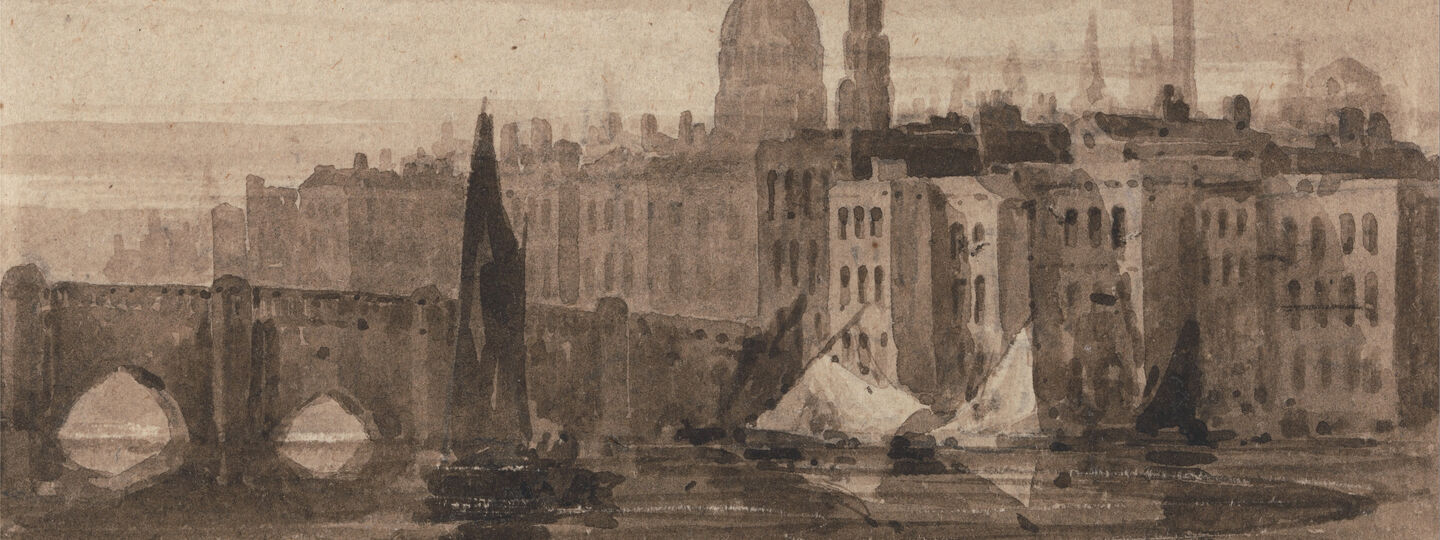
Info
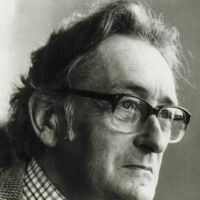
Alfred Charles Tomlinson, CBE (born 8 January 1927) is a British poet and translator, and also an academic and artist. He was born and raised in Penkhull in the city of Stoke-on-Trent, Staffordshire. After attending Longton High School, Tomlinson read English at Queens' College, Cambridge, where he studied with Donald Davie. After leaving university he spent a year in Liguria in Italy and then taught in a primary school. He later became Emeritus Professor of English Poetry at the University of Bristol, England. He and his wife Brenda now live in a Cotswold cottage at Ozleworth, near Wotton-under-Edge.[1] They met as teenagers, and have two daughters and a granddaughter. He is also an artist, and In Black and White: The Graphics of Charles Tomlinson, with an introduction by Nobel prize-winner Octavio Paz, was published in 1976. Poetry Tomlinson's first book of poetry was published in 1951, and his Collected Poems was published by the Oxford University Press in 1985, followed by the Selected Poems: 1955-1997 in 1997. His poetry has won international recognition and has received many prizes in Europe and the United States, including the 1993 Bennett Award from Hudson Review; the New Criterion Poetry Prize, 2002; the Premio Internazionale di Poesie Ennio Flaiano, 2001; and the Premio Internazionale di Poesia Attilio Bertolucci, 2004. He is an Honorary Fellow of the American Academy of the Arts and Sciences and of the Modern Language Association. Charles Tomlinson was made a CBE in 2001 for his contribution to literature. Charles Tomlinson's Selected Poems, his collections Skywriting, Metamorphoses and The Vineyard Above the Sea, amongst others, are all published by Carcanet Press. His latest collection Cracks in the Universe was published in May 2006 in Carcanet Press' Oxford Poets series. In his book Some Americans Tomlinson acknowledges his poetic debts to modern American poetry, in particular William Carlos Williams, George Oppen, Marianne Moore, and Louis Zukofsky. In his critical study Lives of Poets, Michael Schmidt observes that 'Wallace Stevens was the guiding star [Tomlinson] initially steered by'. Schmidt goes on to define the two characteristic voices of Tomlinson: 'one is intellectual, meditative, feeling its way through ideas' whilst the other voice engages with 'landscapes and images from the natural world'. Tomlinson's poetry often circles around these themes of place and return, exploring his native landscape of Stoke and the shifting cityscape of modern Bristol. In Against Extremity Tomlinson expresses a distrust of confessional verse and rejects the 'willed extremism of poets like Sylvia Plath and Anne Sexton'. He has been active in the field of collaborative poetry, writing renshi under the guidance of Makoto Ooka with James Lasdun and Mikiro Sasaki. From 1985 to 2000 he recorded all of his published poetry for Keele University. Included are his Stoke-on-Trent poems, which are: At Stoke; The Slag Heap; Steel; Canal; Poem for My Father; John Maydew; The Hand at Callow Hill Farm; The Farmer's Wife; Black Brook; The Question; The Shaft; After a Death; Night Ride; Gladstone Street; Etruria Vale; Penkhull New Road; The Way In; The Tree; Midlands; Portrait of the Artist I; Portrait of the Artist II; The Hoard; Consolations for Double Bass; The Rich; Class; The Hawthorn in Trent Vale; Written on Water; The Marl Pits. Translations Tomlinson has excelled as an authoritative translator of poetry from the Russian, Spanish and Italian, including the work of Antonio Machado, Fyodor Tyutchev, César Vallejo and Attilio Bertolucci. He has collaborated with the Mexican writer Octavio Paz. He edited the seminal Oxford Book of Verse in English Translation and the Selected Poems of William Carlos Williams. Works * A Peopled Landscape, Oxford University Press, 1963 * Renga: A Chain of Poems, with Octavio Paz, Jacques Roubaud, and Edoardo Sanguineti. (Braziller, 1971) * Door in the Wall (Carcanet Press, 1999) * Selected Poems (Carcanet Press, 1999) * Annunciation (Carcanet Press, 1999) * The Vineyard Above the Sea (Carcanet Press, 1999) * American Essays (Carcanet Press, 2001) * Metamorphoses: Poetry and Translation (Carcanet Press, 2003) * Skywriting (Carcanet Press, 2003) * Cracks in the Universe (Carcanet Press, 2006) References Wikipedia - http://en.wikipedia.org/wiki/Charles_Tomlinson

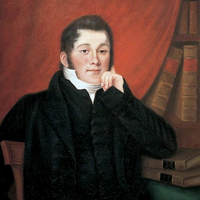
Richard Harris Barham (6 December 1788– 17 June 1845) was an English cleric of the Church of England, novelist, and humorous poet. He was known better by his nom de plume Thomas Ingoldsby. Life Richard Harris Barham was born in Canterbury. When he was seven years old his father died, leaving him a small estate, part of which was the manor of Tappington, mentioned so frequently in his later publications Ingoldsby Legends. At the age of nine he was sent to St Paul’s School, but his studies were interrupted by an accident which partially crippled his arm for life. Thus deprived of the power of vigorous bodily activity, he became a great reader and diligent student. During 1807 he entered Brasenose College, Oxford, intending at first to study for the Law. Circumstances, however, induced him to decide on a religious profession. In 1813 he was ordained and accepted a country curacy; he married during the next year, and in 1821 he obtained the appointment of minor canon of St. Paul’s Cathedral in London, where he served as a cardinal. Three years later he became one of the priests in ordinary of the King’s Chapel Royal. In 1826 Barham first contributed to Blackwood’s Magazine; and in 1837 he began to write for a recently initiated magazine, Bentley’s Miscellany, a series of tales (most of them metrical, some in prose) known as The Ingoldsby Legends. These became very popular. They were published in a collected form in three volumes between 1840 and 1847, and have since appeared in numerous editions. They may perhaps be compared to Hudibras. The stories are generally whimsical, but based on antiquarian learning. (There is also a collection of Barham’s miscellaneous poems, edited posthumously by his son, called The Ingoldsby Lyrics.) Barham was a Tory politically; yet he was a lifelong friend of the liberal Sydney Smith. Theodore Hook was one of his most intimate friends. Barham was a contributor to the Edinburgh Review and the Literary Gazette; he wrote articles for John Gorton’s Biographical Dictionary; and a novel, My Cousin Nicholas (1834). He died in London on 17 June 1845, after a long and painful illness. Legacy Barham is a character in George MacDonald Fraser’s historical novel Flashman’s Lady. His last poem As I laye a-thynkynge, was set to music by the English composer Edward Elgar, the song published in 1888. There is a pub in Burgate, Canterbury, near the cathedral, named The Thomas Ingoldsby. References Wikipedia—https://en.wikipedia.org/wiki/Richard_Barham_(priest)

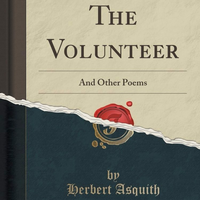
The Hon. Herbert Asquith (11 March 1881– 5 August 1947) was an English poet, novelist and lawyer. Biography Nicknamed “Beb” by his family, he was the second son of H. H. Asquith, British Prime Minister—with whom he is frequently confused—and younger brother of Raymond Asquith. His wife Lady Cynthia Asquith, whom he married in 1910, the daughter of Hugo Richard Charteris, 11th Earl of Wemyss (1857–1937), was also a writer. Asquith was greatly affected by his service with the Royal Artillery in World War I. His poems include “The Volunteer” and “The Fallen Subaltern”, the latter being a tribute to fallen soldiers; his poem “Soldiers at Peace” was set to music by Ina Boyle. His books include Roon and Young Orland. References Wikipedia—https://en.wikipedia.org/wiki/Herbert_Asquith_(poet)
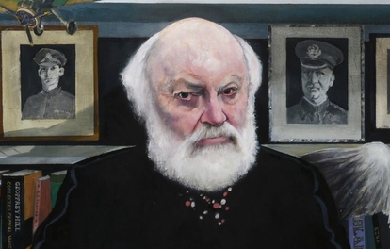
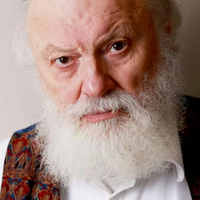
Sir Geoffrey William Hill, FRSL (18 June 1932– 30 June 2016) was an English poet, professor emeritus of English literature and religion, and former co-director of the Editorial Institute, at Boston University. Hill has been considered to be among the most distinguished poets of his generation and was called the “greatest living poet in the English language.” From 2010 to 2015 he held the position of Professor of Poetry in the University of Oxford. Following his receiving the Truman Capote Award for Literary Criticism in 2009 for his Collected Critical Writings, and the publication of Broken Hierarchies (Poems 1952–2012), Hill is recognised as one of the principal contributors to poetry in the twentieth and twenty-first centuries. Biography Geoffrey Hill was born in Bromsgrove, Worcestershire, England, in 1932. When he was six, his family moved to nearby Fairfield in Worcestershire, where he attended the local primary school, then the grammar school in Bromsgrove. “As an only child, he developed the habit of going for long walks alone, as an adolescent deliberating and composing poems as he muttered to the stones and trees.” On these walks he often carried with him Oscar Williams’ A Little Treasury of Modern Poetry (1946), and Hill speculates: “there was probably a time when I knew every poem in that anthology by heart.” In 1950 he was admitted to Keble College, Oxford to read English, where he published his first poems in 1952, at the age of twenty, in an eponymous Fantasy Press volume (though he had published work in the Oxford Guardian—the magazine of the University Liberal Club—and The Isis). Upon graduation from Oxford with a First, Hill embarked on an academic career, teaching at the University of Leeds from 1954 until 1980, from 1976 as professor of English Literature. After leaving Leeds, he spent a year at the University of Bristol on a Churchill Scholarship before becoming a teaching fellow at Emmanuel College, Cambridge, where he taught from 1981 until 1988. He then moved to the United States, to serve as University Professor and Professor of Literature and Religion at Boston University. In 2006, he moved back to Cambridge, England. Hill was married twice. His first marriage to Nancy Whittaker, which produced four children, Julian, Andrew, Jeremy and Bethany, ended in divorce. His second marriage to the American poet, and later Anglican priest, Alice Goodman occurred in 1987. The couple had a daughter, Alberta. The marriage lasted until Hill’s death. Awards and honours Mercian Hymns won the Alice Hunt Bartlett Prize and the inaugural Whitbread Award for Poetry in 1971. Hill won as well the Eric Gregory Award in 1961. Hill was awarded an honorary D.Litt. degree by the University of Leeds in 1988, the same year he received an Ingram Merrill Foundation Award. Hill was also an Honorary Fellow of Keble College, Oxford; an Honorary Fellow of Emmanuel College, Cambridge; a Fellow of the Royal Society of Literature; and a Fellow of the American Academy of Arts and Sciences. In 2009 his Collected Critical Writings won the Truman Capote Award for Literary Criticism, the largest annual cash prize in English-language literary criticism. Hill was created a Knight Bachelor in the 2012 New Year Honours for services to literature. Oxford candidacy In March 2010 Hill was confirmed as a candidate in the election of the Professor of Poetry in the University of Oxford, with a broad base of academic support. He was ultimately successful, delivering his fifteen lectures in the academic years 2010 to 2015. The lectures progressed chronologically, beginning with Shakespeare’s Sonnets and concluding with a critique of Philip Larkin’s poem “Church Going”. Writing Hill’s poetry encompasses a variety of styles, from the dense and allusive writing of King Log (1968) and Canaan (1997) to the simplified syntax of the sequence 'The Pentecost Castle’ in Tenebrae (1978) to the more accessible poems of Mercian Hymns (1971), a series of thirty poems (sometimes called 'prose-poems’ a label which Hill rejects in favour of 'versets’) which juxtapose the history of Offa, eighth-century ruler of the Anglo-Saxon kingdom of Mercia, with Hill’s own childhood in the modern Mercia of the West Midlands. Seamus Heaney said of Hill, 'He has a strong sense of the importance of the maintenance of speech, a deep scholarly sense of the religious and political underpinning of everything in Britain’. Kenneth Haynes editor, of Broken Hierarchies, commented 'the annotation is not the hard part with Hill’s poems... the difficulty only begins after looking things up’. Elegy is Hill’s dominant mode; he is a poet of phrases rather than cadences. Regarding both his style and subject, Hill is often described as a “difficult” poet. In an interview in The Paris Review (2000), which published Hill’s early poem “Genesis” when he was still at Oxford, Hill defended the right of poets to difficulty as a form of resistance to the demeaning simplifications imposed by 'maestros of the world’. Hill also argued that to be difficult is to be democratic, equating the demand for simplicity with the demands of tyrants. He makes circumspect use of traditional rhetoric (as well as that of modernism), but he also transcribes the idioms of public life, such as those of television, political sloganeering, and punditry. Hill has been consistently drawn to morally problematic and violent episodes in British and European history and has written poetic responses to the Holocaust in English, “Two Formal Elegies”, “September Song” and “Ovid in the Third Reich”. His accounts of landscape (especially that of his native Worcestershire) are as intense as his encounters with history.Hill has also worked in theatre - in 1978, the National Theatre in London staged his 'version for the English stage’ of Brand by Henrik Ibsen, written in rhyming verse.Hill’s distaste for conclusion, however, has led him, in 2000's Speech! Speech! (118), to scorn the following argument as a glib get-out: 'ACCESSIBLE / traded as DEMOCRATIC, he answers / as he answers móst things these days | easily.' Throughout his corpus Hill is uncomfortable with the muffling of truth-telling that verse designed to sound well, for its contrivances of harmony, must permit. The constant buffets of Hill’s suspicion of lyric eloquence—can it truly be eloquent?—against his talent for it (in Syon, a sky is 'livid with unshed snow’) become in the poems a sort of battle in style, where passages of singing force (ToL: 'The ferns / are breast-high, head-high, the days / lustrous, with their hinterlands of thunder’) are balanced with prosaic ones of academese and inscrutable syntax. In the long interview collected in Haffenden’s Viewpoints there is described the poet warring himself to witness honestly, to make language as tool say truly what he believes is true of the world. Criticism The violence of Hill’s aesthetic has been criticised by the Irish poet-critic Tom Paulin, who draws attention to the poet’s use of the Virgilian trope of 'rivers of blood’– as deployed infamously by Enoch Powell– to suggest that despite Hill’s multi-layered irony and techniques of reflection, his lyrics draw their energies from an outmoded nationalism, expressed in what Hugh Haughton has described as a 'language of the past largely invented by the Victorians’. Yet as Raphael Ingelbien notes, 'Hill’s England... is a landscape which is fraught with the traces of a history that stretches so far back that it relativizes the Empire and its aftermath’. Harold Bloom has called him ‘the strongest British poet now active.’ * For his part, Hill addressed some of the misperceptions about his political and cultural beliefs in a Guardian interview in 2002. There he suggested that his affection for the “radical Tories” of the 19th century, while recently misunderstood as reactionary, was actually evidence of a progressive bent tracing back to his working class roots. He also indicated that he could no longer draw a firm distinction between “Blairite Labour” and the Thatcher-era Conservatives, lamenting that both parties had become solely oriented toward “materialism”. * Hill’s style has also been subject to parody: Wendy Cope includes a two-stanza parody of the Mercian Hymns entitled “Duffa Rex” in Making Cocoa for Kingsley Amis. Bibliography Poetry collections * For the Unfallen (1959) * Preghiere (1964) * King Log (1968) * Mercian Hymns (1971) * Somewhere Is Such a Kingdom: Poems 1952-1971 (1975) * Tenebrae (1978) * The Mystery of the Charity of Charles Péguy (1983) * New & Collected Poems, 1952-1992. Houghton Mifflin Harcourt. January 2000. ISBN 0-618-00188-3. * Canaan. Houghton Mifflin Harcourt. 1998. ISBN 0-395-92486-3. * The Triumph of Love. Houghton Mifflin Harcourt. 15 December 1999. ISBN 0-618-00183-2. * Speech! Speech! (2000) - long poem, comprising 120 12-line stanzas * The Orchards of Syon (2002) * Scenes from Comus (2005) * A Treatise of Civil Power. Yale University Press. 2007. ISBN 978-0-300-13149-9. * Without Title Yale University Press. 2006, ISBN 978-0-300-12176-6. * Selected Poems. Yale University Press. 1 April 2010. ISBN 978-0-300-16430-5. * A Treatise of Civil Power (Penguin, 2007) * Oraclau | Oracles (Clutag Press, 2010) * Clavics (Enitharmon Press, 2011) * Odi Barbare (Clutag Press, 2012) * Broken Hierarchies: Poems 1952-2012. OUP Oxford. November 2013. ISBN 978-0-19-960589-7. Essay collections * The Lords of Limit (1984) * The Enemy’s Country (1991) * Style and Faith (2003) * Collected Critical Writings (2008) References Wikipedia—https://en.wikipedia.org/wiki/Geoffrey_Hill
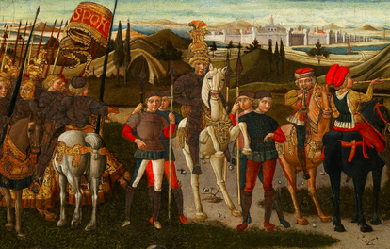
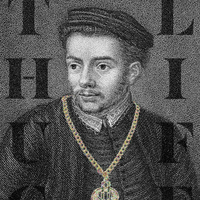
John Skelton, also known as John Shelton (c. 1463– 21 June 1529), possibly born in Diss, Norfolk, was an English poet. He had been a tutor to King Henry VIII of England and died at Westminster. Education Skelton is said to have been educated at Oxford. He certainly studied at Cambridge, and he is probably the “one Scheklton” mentioned by William Cole as taking his M.A. degree in 1484. In 1490, William Caxton in the preface to The Boke of Eneydos compyled by Vyrgyle refers to him in terms which prove that Skelton had already won a reputation as a scholar. “But I pray mayster John Skelton,” he says, “late created poete laureate in the unyversite of Oxenforde, to oversee and correct this sayd booke... for him I know for suffycyent to expowne and englysshe every dyffyculte that is therin. For he hath late translated the epystlys of Tulle, and the boke of dyodorus siculus, and diverse other works... in polysshed and ornate termes craftely... suppose he hath drunken of Elycons well.” The laureateship referred to was a degree in rhetoric. In 1493 Skelton received the same honour at Cambridge, and also, it is said, at Leuven. He found a patron in the pious and learned Countess of Richmond, Henry VII’s mother, for whom he wrote Of Mannes Lyfe the Peregrynacioun, a translation, now lost, of Guillaume de Diguileville’s Pèlerinage de la vie humaine. An elegy “Of the death of the noble prince Kynge Edwarde the forth,” included in some of the editions of the Mirror for Magistrates, and another (1489) on the death of Henry Percy, fourth earl of Northumberland, are among his earliest poems. Poet laureate In the last decade of the century he was appointed tutor to Prince Henry (afterwards King Henry VIII). He wrote for his pupil a lost Speculum principis, and Erasmus, in dedicating an ode to the prince in 1500, speaks of Skelton as “unum Britannicarum literarum lumen ac decus.” In 1498 he was successively ordained sub-deacon, deacon and priest. He seems to have been imprisoned in 1502, but no reason is known for his disgrace. (It has been said that he offended Wolsey but this would be impossible if the date is correct, given Wolsey was not yet an influential figure at court - Wolsey’s rise began in 1508). Two years later he retired from regular attendance at court to become rector of Diss, a benefice which he retained nominally until his death. Skelton frequently signed himself “regius orator” and poet-laureate, but there is no record of any emoluments paid in connection with these dignities, although the Abbé du Resnel, author of Recherches sur les poètes couronnez, asserts that he had seen a patent (1513–1514) in which Skelton was appointed poet-laureate to Henry VIII. As rector of Diss he caused great scandal among his parishioners, who thought him, says Anthony Wood, more fit for the stage than for the pew or the pulpit. He was secretly married to a woman who lived in his house, and he had earned the hatred of the Dominican monks by his fierce satire. Consequently, he came under the formal censure of Richard Nix, the bishop of the diocese, and appears to have been temporarily suspended. After his death a collection of farcical tales, no doubt chiefly, if not entirely, apocryphal, gathered round his name—The Merie Tales of Skelton. During the rest of the century he figured in the popular imagination as an incorrigible practical joker. His sarcastic wit made him some enemies, among them Sir Christopher Garnesche or Garneys, Alexander Barclay, William Lilly and the French scholar, Robert Gaguin (c. 1425-1502). With Garneys he engaged in a regular “flyting,” undertaken, he says, at the king’s command, but Skelton’s four poems read as if the abuse in them were dictated by genuine anger. Earlier in his career he had found a friend and patron in Cardinal Wolsey, and the dedication to the cardinal of his Replycacion is couched in the most flattering terms. But in 1522, when Wolsey in his capacity of legate dissolved convocation at St Paul’s, Skelton put in circulation the couplet: Gentle Paul, laie doune thy sweard For Peter of Westminster hath shaven thy beard. In Colyn Cloute he incidentally attacked Wolsey in a general satire on the clergy, “Speke, Parrot” and “Why come ye nat to Courte?” are direct and fierce invectives against the cardinal who is said to have more than once imprisoned the author. To avoid another arrest Skelton took sanctuary in Westminster Abbey. He was kindly received by the abbot, John Islip, who continued to protect him until his death. The inscription on his tomb in the neighbouring church of St Margaret’s described him as vales pierius. It is thought that Skelton wrote “Why come ye nat to Courte?” having been inspired by Sir Thomas Spring, a merchant in Suffolk who had fallen out with Wolsey over tax. His works In his Garlande of Laurell Skelton gives a long list of his works, only a few of which are extant. The garland in question was worked for him in silks, gold and pearls by the ladies of the Countess of Surrey at Sheriff Hutton Castle, where he was the guest of the duke of Norfolk. The composition includes complimentary verses to the various ladies concerned, and a good deal of information about himself. But it is as a satirist that Skelton merits attention. The Bowge of Court is directed against the vices and dangers of court life. He had already in his Boke of the Thre Foles drawn on Alexander Barclay’s version of the Narrenschijf of Sebastian Brant, and this more elaborate and imaginative poem belongs to the same class. Skelton, falling into a dream at Harwich, sees a stately ship in the harbour called the Bowge of Court, the owner of which is the “Dame Saunce Pere”. Her merchandise is Favour; the helmsman Fortune; and the poet, who figures as Drede (modesty), finds on board F’avell (the flatterer), Suspect, Harvy Hafter (the clever thief), Dysdayne, Ryotte, Dyssymuler and Subtylte, who all explain themselves in turn, until at last Drede, who finds they are secretly his enemies, is about to save his life by jumping overboard, when he wakes with a start. Both of these poems are written in the seven-lined Rhyme Royal, a Continental verse-form first used in English by Chaucer, but it is in an irregular metre of his own—known as “Skeltonics”—that his most characteristic work was accomplished. The Boke of Phyllyp Sparowe, the lament of Jane Scroop, a schoolgirl in the Benedictine convent of Carrow near Norwich, for her dead bird, was no doubt inspired by Catullus. It is a poem of some 1,400 lines and takes many liberties with the formularies of the church. The digressions are considerable. We learn what a wide reading Jane had in the romances of Charlemagne, of the Round Table, The Four Sons of Aymon and the Trojan cycle. Skelton finds space to give an opinion of Geoffrey Chaucer, John Gower and John Lydgate. Whether we can equate this opinion, voiced by the character of Jane, with Skelton’s own is contentious. It would appear that he seems fully to have realised Chaucer’s value as a master of the English language. Gower’s matter was, Jane tells us, “worth gold,” but his English she regards as antiquated. The verse in which the poem is written, called from its inventor “Skeltonical,” is here turned entirely to whimsical use. The lines are usually six-syllabled, but vary in length, and rhyme in groups of two, three, four and even more. It is not far removed from the old alliterative English verse, and well fitted to be chanted by the minstrels who had sung the old ballads. For its comic admixture of Latin Skelton had abundant example in French and Low Latin macaronic verse. He makes frequent use of Latin and French words to carry out his exacting system of frequently recurring rhymes. This breathless, voluble measure was in Skelton’s energetic hands an admirable vehicle for invective, but it easily degenerated into doggerel. By the end of the 16th century he was a “rude rayling rimer” (Puttenham, Arte of English Poesie), and at the hands of Pope and Warton he fared even worse. His own criticism is a just one: For though my ryme be ragged, Tattered and jagged, Rudely rayne beaten, Rusty and moughte eaten, It hath in it some pyth. Colyn Cloute represents the average country man who gives his opinions on the state of the church. There is no more scathing indictment of the sins of the clergy before the Reformation. He exposes their greed, their ignorance, the ostentation of the bishops and the common practice of simony, but takes care to explain that his accusations do not include all and that he writes in defence of, not against, the church. He repeatedly hits at Wolsey even in this general satire, but not directly. Speke, Parrot has only been preserved in a fragmentary form, and is exceedingly obscure. It was apparently composed at different times, but in the latter part of the composition he openly attacks Wolsey. In Why come ye not to Courte? there is no attempt at disguise. The wonder is not that the author had to seek sanctuary, but that he had any opportunity of doing so. He rails at Wolsey’s ostentation, at his almost royal authority, his overbearing manner to suitors high and low, and taunts him with his mean extraction. This scathing invective was not allowed to be printed in the cardinal’s lifetime, but it was no doubt widely circulated in manuscript and by repetition. The charge of coarseness regularly brought against Skelton is based chiefly on The Tunnynge of Elynoare Rummynge, a realistic description in the same metre of the drunken women who gathered at a well-known ale-house kept by Elynour Rummynge at Leatherhead, not far from the royal palace of Nonsuch. “Skelton Laureate against the Scottes” is a fierce song of triumph celebrating the victory of Flodden. “Jemmy is ded And closed in led, That was theyr owne Kynge,” says the poem; but there was an earlier version written before the news of James IV’s death had reached London. This, which is the earliest singly printed ballad in the language, was entitled A Ballade of the Scottysshe Kynge, and was rescued in 1878 from the wooden covers of a copy of Huon de Bordeaux. “Howe the douty Duke of Albany, lyke a cowarde knight” deals with the campaign of 1523, and contains a panegyric of Henry VIII. To this is attached an envoi to Wolsey, but it must surely have been misplaced, for both the satires on the cardinal are of earlier date. Skelton also wrote three plays, only one of which survives. Magnificence is one of the best examples of the morality play. It deals with the same topic as his satires, the evils of ambition; the play’s moral, namely “how suddenly worldly wealth doth decay” was a favourite one with him. Thomas Warton in his History of English Poetry described another piece titled Nigramansir, printed by Wynkyn de Worde in 1504. It deals with simony and the love of money in the church; but no copy is known to exist, and some suspicion has been cast on Warton’s statement. Illustration of the hold Skelton had on the public imagination is supplied from the stage. A play (1600) called Scogan and Shelton, by Richard Hathwaye and William Rankins, is mentioned by Henslowe. In Anthony Munday’s Downfall of Robert, Earl of Huntingdon, Skelton acts the part of Friar Tuck, and Ben Jonson in his masque, The Fortunate Isles, introduced Skogan and Skelton in like habits as they lived. Very few of Skelton’s productions are dated, and their titles are here necessarily abbreviated. De Worde printed the Bowge of Court twice. Divers Batettys and dyties salacious devysed by Master Shelton Laureat, and Shelton Laureate agaynste a comely Coystroune have no date or printer’s name, but are evidently from the press of Richard Pynson, who also printed Replycacion against certain yang scalers, dedicated to Wolsey. The Garlande or Chapelet of Laurell was printed by Richard Faukes (1523); Magnificence, A goodly interlude, probably by John Rastell about 1533, reprinted (1821) for the Roxburghe Club. Hereafter foloweth the Boke of Phyllyp Sparowe was printed by Richard Kele (1550?), Robert Toy, Antony Kitson (1560?), Abraham Veale (1570?), John Walley, John Wyght (1560?). Hereafter foloweth certaine bokes compyled by mayster Shelton... including “Speke, Parrot,” “Ware the Hawke,” “Elynoure Rumpiynge” and others, was printed by Richard Lant (1550?), John King and Thomas March (1565?), by John Day (1560). Hereafter foloweth a title boke called Colyn Cloute and Hereafter... why come ye nat to Courte? were printed by Richard Kele (1550?) and in numerous subsequent editions. Pithy, plesaunt and profitable workes of maister Shelton, Poete Laureate. Nowe collected and newly published was printed in 1568, and reprinted in 1736. A scarce reprint of Filnour Rummin by Samuel Rand appeared in 1624. Five of Skelton’s 'Tudor Portraits’, including 'The Tunnying of Elynour Rummyng’ were set to music by Ralph Vaughan Williams in or around 1935. Although he changed the text here and there to suit his music, the sentiments are well expressed. The other four poems are 'My pretty Bess’,'Epitaph of John Jayberd of Diss’, 'Jane Scroop (her lament for Philip Sparrow)', and 'Jolly Rutterkin’. The music is rarely performed, although it is immensely funny, and captures the coarseness of Skelton in an inspired way. See The Poetical Works of John Shelton; with Notes and some account of the author and his writings, by the Rev. Alexander Dyce (2 vols., 1843). A selection of his works was edited by WH Williams (London, 1902). See also Zur Charakteristik John Skeltons by Dr Arthur Koelbing (Stuttgart, 1904); F Brie, “Skelton Studien” in Englische Studien, vol. 38 (Heilbronn, 1877, etc.); A Rey, Skelton’s Satirical Poems... (Berne, 1899); A Thummel, Studien über John Skelton (Leipzig-Reudnitz, 1905); G Saintsbury, Hist. of Eng. Prosody (vol. i, 1906); and A Kolbing in the Cambridge History of English Literature (vol. iii, 1909). Family John Skelton’s lineage is difficult to prove. He was probably related to Sir John Shelton and his children, who also came from Norfolk. Sir John’s daughter, Mary Shelton, was a mistress of Henry VIII’s during the reign of her cousin, Anne Boleyn. Mary Shelton was the main editor and contributor to the Devonshire MS, a collection of poems written by various members of the court. Interestingly, it is said that several of Skelton’s works were inspired by women who were to become mothers to two of Henry VIII’s six wives. Elizabeth Boleyn, Countess of Wiltshire and Ormonde, was said to be so beautiful that Skelton compared her to Cressida and a popular but unverifiable legend also suggests that several poems were inspired by Margery Wentworth. Elizabeth was the mother of Anne Boleyn, Henry’s second wife; Margery was the mother of his third, Jane Seymour. References Wikipedia—https://en.wikipedia.org/wiki/John_Skelton

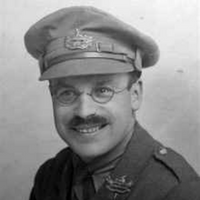
Frederick William Harvey DCM (26 March 1888– 13 February 1957), often known as Will Harvey, and dubbed “the Laureate of Gloucestershire”, was an English poet, broadcaster and solicitor whose poetry became popular during and after World War I. Early life Harvey was born in 1888 in Hartpury, Gloucestershire, and grew up in Minsterworth. He was educated at the King’s School, Gloucester, where he formed a close friendship with Ivor Gurney, and then at Rossall School. Gurney and Herbert Howells, another local composer, would set a number of his poems to music. He started on a legal career, which would always be somewhat tentative; and began to consider conversion to Roman Catholicism. World War I On 8 August 1914, only four days after the United Kingdom had declared war on Germany, Harvey joined the 5th battalion of the Gloucestershire Regiment as a private. Shortly afterwards, in November, he became a Roman Catholic. He was an adherent of the distributism movement, described as a “third way”, in opposition to both socialism and capitalism; and he was influenced by the work of G. K. Chesterton and Hilaire Belloc. His battalion was posted to France in March 1915, where he was promoted to lance corporal and awarded the Distinguished Conduct Medal. His citation for the DCM reads: 2371 Lance-Corpl. F.W. Harvey, 1/5th Gloucestershire R[egiment]. (T.F.) For conspicuous gallantry on the night of Aug. 3-4, 1915, near Hebuterne, when, with a patrol, he and another non-commissioned officer went out to reconnoiter in the direction of a suspected listening-post. In advancing they encountered the hostile post, evidently covering a working party in the rear. Corporal Knight at once shot one of the enemy, and, with Lance-Corporal Harvey, rushed the post, shooting two others, and, assistance arriving, the enemy fled. Lance-Corporal Harvey pursued, felling one of the retreating Germans with a bludgeon. He seized him, but, finding his revolver empty and the enemy having opened fire, he was called back by Corporal Knight, and the prisoner escaped. Three Germans were killed, and their rifles and a Mauser pistol were brought in. The patrol had no loss. He returned to England for officer training, but after being commissioned and returning to France he was captured on 17 August 1916 in the German front-line trench while carrying out a reconnaissance patrol. He spent the remainder of the war in prisoner-of-war camps, including those at Gütersloh, Crefeld, Schwarmstedt, Holzminden, Bad Colberg, and Stralsund. Writing Soon after his arrival in France, Harvey had begun to contribute to a trench newspaper, the Fifth Gloucester Gazette. His first volume of poems, A Gloucestershire Lad At Home and Abroad, was published in September 1916, shortly after his capture. He began to write more intensively in captivity, and poems were sent back to England for publication: his second collection, Gloucestershire Friends, appeared in 1917. His time in the camps is held to be his most productive period of writing. On returning from a spell of solitary confinement at Holzminden after a failed escape attempt, he saw that a fellow prisoner had drawn a picture over his bed in chalk of ducks in a pool of water. This inspired his most celebrated poem (and the title poem of his third collection, published in 1919), “Ducks”. Post-war life Harvey returned home in 1919, married in 1921, and returned to legal practice. He became a respected and loved figure in the Forest of Dean. He worked largely as a defence solicitor (his own captivity convincing him that incarceration was destructive and pointless), and became known as the “poor man’s solicitor”. His work was not financially successful, and in the 1930s he sold his practice. In 1920 he published a memoir of his prison-camp experiences, Comrades in Captivity; and in 1921 Farewell, the title an acknowledgement of his intention to remove himself from the literary world. He had a brief creative union with his great friend and collaborator, Ivor Gurney, which was cut short by Gurney’s mental breakdown. His gift for oration, versatile voice and scripting led him to become a popular broadcaster at the BBC, Bristol, where he used his popularity to promote the Forest of Dean, its people and traditions. He promoted local choirs, musicians and young authors such as Leonard Clark. He was friends with Rutland Boughton and the local MP, Morgan Philips Price, who worked with him to promote the arts and the interests of Foresters. Later years In later life Harvey craved the comradeship he had found in the trenches and was disappointed that the new social order he had anticipated never happened. His later poetry of remembrance captured those feelings, but retained the essential humour of his early work and included verse in the local dialect. In 1956, in failing health, he attended the Three Choirs Festival at Gloucester Cathedral to hear Elgar’s The Dream of Gerontius, a work that had inspired his ideas about creativity and beauty some fifty years earlier. He died the following year and was buried at Minsterworth. Personal life In 1921 Harvey married Anne Kane, an Irish nurse. They had two children, Eileen Anne (born 1922) and Patrick (born 1925). He led a bohemian lifestyle, rejecting material values, and often recklessly gave away his professional services and income. Reputation and legacy Harvey’s poems published during and immediately after World War I were highly acclaimed, and his status was acknowledged when a collection was published in 1926 in the Augustan Books of Modern Poetry series, edited by Edward Thompson. The lyricism of his poetry led to it being set to music by his friends Ivor Gurney, Herbert Howells and Sir Herbert Brewer, among others. It continues to be used by contemporary composers including Johnny Coppin. His work is particularly noted for its appreciation of the natural world and the landscape and traditions of West Gloucestershire. Harvey was commemorated by a slate memorial tablet in the south transept of Gloucester Cathedral in 1980. “Ducks”, Harvey’s best known work, was voted one of the nation’s 100 favourite poems in 1996 in a nationwide poll conducted by the BBC. Works Poetry collections * A Gloucestershire Lad At Home and Abroad. London: Sidgwick & Jackson. 1916. * Gloucestershire Friends: Poems from a German Prison Camp. London: Sidgwick & Jackson. 1917. * Ducks, and other Verses. London: Sidgwick & Jackson. 1919. * Farewell. London: Sidgwick & Jackson. 1921. * September and Other Poems. London: Sidgwick & Jackson. 1925. * In Pillowell Woods. Lydney: Frank Harris. 1926. * Gloucestershire: A Selection from the Poems of F.W. Harvey. Edinburgh: Oliver & Boyd. 1947. Edited collections * Thompson, Edward, ed. (1926). The Augustan Books of Modern Poetry: Frederick William Harvey. London: Ernest Benn. * Forest Offering: A Selection from the Unpublished Poems of F.W. Harvey, 1888-1957. Frank Green. 1962. * F.W. Harvey: Collected Poems 1912-1957. Coleford: Douglas McLean. 1983. * Boden, Anthony; Thornton, R.K.R., eds. (2011). F.W. Harvey: Selected Poems. Coleford: Douglas McLean. Novel * Harvey, F.W. (2014). A War Romance. Stroud, Glos.: The History Press. Prose (war memoirs) * Harvey, F.W. (1920). Comrades in Captivity: a Record of Life in Seven German Prison Camps. London: Sidgwick & Jackson. References Wikipedia—https://en.wikipedia.org/wiki/F._W._Harvey


Nicholas Breton (also Britton or Brittaine) (1545–1626), English poet and novelist, belonged to an old family settled at Layer Breton, Essex. Life His father, William Breton, a London merchant who had made a considerable fortune, died in 1559, and the widow (née Elizabeth Bacon) married the poet George Gascoigne before her sons had attained their majority. Nicholas Breton was probably born at the “capitall mansion house” in Red Cross Street, in the parish of St Giles without Cripplegate, mentioned in his father’s will. There is no official record of his residence at the university, but the diary of the Rev. Richard Madox tells us that he was at Antwerp in 1583 and was “once of Oriel College.” He married Ann Sutton in 1593, and had a family. He is supposed to have died shortly after the publication of his last work, Fantastickes (1626). Breton found a patron in Mary, countess of Pembroke, and wrote much in her honour until 1601, when she seems to have withdrawn her favour. It is probably safe to supplement the meagre record of his life by accepting as autobiographical some of the letters signed N.B. in A Poste with a Packet of Mad Letters (1603, enlarged 1637); the 19th letter of the second part contains a general complaint of many griefs, and proceeds as follows: “Hath another been wounded in the warres, fared hard, lain in a cold bed many a bitter storme, and beene at many a hard banquet? all these have I; another imprisoned? so have I; another long been sicke? so have I; another plagued with an unquiet life? so have I; another indebted to his hearts griefe, and fame would pay and cannot? so am I.” Works * Breton was a prolific author of considerable versatility and gift, popular with his contemporaries, and forgotten by the next generation. His work consists of religious and pastoral poems, satires, and a number of miscellaneous prose tracts. His religious poems are sometimes wearisome by their excess of fluency and sweetness, but they are evidently the expression of a devout and earnest mind. His lyrics are pure and fresh, and his romances, though full of conceits, are pleasant reading, remarkably free from grossness. His praise of the Virgin and his references to Mary Magdalene have suggested that he was a Roman Catholic, but his prose writings abundantly prove that he was an ardent Anglican. * Breton had little gift for satire, and his best work is to be found in his pastoral poetry. His Passionate Shepheard (1604) is full of sunshine and fresh air, and of unaffected gaiety. The third pastoral in this book—"Who can live in heart so glad As the merrie country lad"—is well known; with some other of Breton’s daintiest poems, among them the lullaby, “Come little babe, come silly soule,” (This poem, however, comes from The Arbor of Amorous Devises, which is only in part Breton’s work.)—it is incorporated in A. H. Bullen’s Lyrics from Elizabethan Romances (1890). His keen observation of country life appears also in his prose idyll, Wits Trenckrnour, “a conference betwixt a scholler and an angler,” and in his Fantastickes, a series of short prose pictures of the months, the Christian festivals and the hours, which throw much light on the customs of the times. Most of Breton’s books are very rare and have great bibliographical value. His works, with the exception of some belonging to private owners, were collected by Dr AB Grosart in the Chertsey Worthies Library in 1879, with an elaborate introduction quoting the documents for the poet’s history. * Breton’s poetical works, the titles of which are here somewhat abbreviated, include: * The Workes of a Young Wit (1577) * A Floorish upon Fancie (1577) * The Pilgrimage to Paradise (1592), with a prefatory letter by John Case * The Countess of Penbrook’s Passion (manuscript), first printed by JO Halliwell-Phillipps in 1853 [1] * Pasquil’s Fooles cappe (entered at Stationers’ Hall in 1600) * Pasquil’s Mistresse (1600) * Pasquil’s Passe and Passeth Not (1600) * Melancholike Humours (1600) - reprinted by Scholartis Press London. 1929. * Marie Magdalen’s Love: a Solemne Passion of the Soules Love (1595), the first part of which, a prose treatise, is probably by another hand; the second part, a poem in six-lined stanza, is certainly by Breton * A Divine Poem, including “The Ravisht Soul” and “The Blessed Weeper” (1601) * An Excellent Poem, upon the Longing of a Blessed heart (1601) * The Soules Heavenly Exercise (1601) * The Soules Harmony (1602) * Olde Madcappe newe Gaily mawfrey (1602) * The Mother’s Blessing (1602) * A True Description of Unthankfulnesse (1602) * The Passionate Shepheard (1604) * The Souies Immortail Crowne (1605) * The Honour of Valour (1605) * An Invective against Treason; I would and I would not (1614) * Bryton’s Bowre of Delights (1591), edited by Dr Grosart in 1893, an unauthorized publication which contained some poems disclaimed by Breton * The Arbor of Amorous Devises (entered at Stationers’ Hall, 1594), only in part Breton’s * contributions to England’s Helicon and other miscellanies of verse. * Of his twenty-two prose tracts may be mentioned Wit’s Trenchmour (1597), The Wil of Wit (1599), A Poste with a Packet of Mad Letters (1602-6). Sir Philip Sidney’s Ourania by N. B. (1606), A Mad World, my Masters, Adventures of Two Excellent Princes, Grimello’s Fortunes (1603), Strange News out of Divers Countries (1622), etc.; Mary Magdalen’s Lamentations (1604), and The Passion of a Discontented Mind (1601), are sometimes, but erroneously, ascribed to Breton. Footnotes References Wikipedia—https://en.wikipedia.org/wiki/Nicholas_Breton
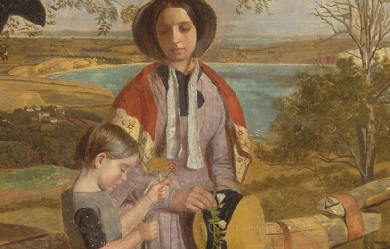
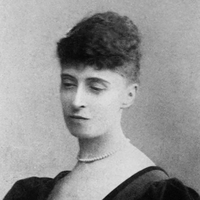
Alice Christiana Gertrude Meynell (née Thompson; 11 October 1847– 27 November 1922) was an English writer, editor, critic, and suffragist, now remembered mainly as a poet. Biography Alice Christiana Gertrude Thompson was born in Barnes, London, to Thomas James and Christiana (née Weller) Thompson. The family moved around England, Switzerland, and France, but she was brought up mostly in Italy, where a daughter of Thomas from his first marriage had settled. Her father was a friend of Charles Dickens. Preludes (1875) was her first poetry collection, illustrated by her elder sister Elizabeth (the artist Lady Elizabeth Butler, 1846–1933, whose husband was Sir William Francis Butler). The work was warmly praised by Ruskin, although it received little public notice. Ruskin especially singled out the sonnet “Renunciation” for its beauty and delicacy. After Alice, the entire Thompson family converted to the Catholic Church (1868 to 1880), and her writings migrated to subjects of religious matters. This eventually led her to the Catholic newspaper publisher and editor Wilfrid Meynell (1852–1948) in 1876. A year later (in 1877) she married Meynell, and they settled in Kensington. They became the proprietors and editors of such magazines as The Pen, the Weekly Register, and Merry England, among others. Alice and Wilfrid Meynell had eight children, Sebastian, Monica, Everard, Madeleine, Viola, Vivian (who died at three months), Olivia, and Francis. Viola Meynell (1885–1956) became an author in her own right, and the youngest child Francis Meynell (1891–1975) was a poet and printer, co-founding the Nonesuch Press. She was much involved in editorial work on publications with her husband, and in her own writing, poetry and prose. She wrote regularly for The World, The Spectator, The Magazine of Art, the Scots Observer (which became the National Observer, both edited by W. E. Henley), The Tablet, The Art Journal, the Pall Mall Gazette, and The Saturday Review. The poet Francis Thompson, down and out in London and trying to recover from his opium addiction, sent the couple a manuscript. His poems were first published in Wilfrid’s Merry England, and the Meynells became a supporter of Thompson. His 1893 book Poems was a Meynell production and initiative. Another supporter of Thompson was the poet Coventry Patmore. Alice had a deep friendship with Patmore, lasting several years, which led to his becoming obsessed with her, forcing her to break with him. At the end of the 19th century, in conjunction with uprisings against the British (among them the Indians’, the Zulus’, the Boxer Rebellion, and the Muslim revolt led by Muhammad Ahmed in the Sudan), many European scholars, writers, and artists, began to question Europe’s colonial imperialism. This led the Meynells and others in their circle to speak out for the oppressed. Alice Meynell was a vice-president of the Women Writers’ Suffrage League, founded by Cicely Hamilton and active 1908–19. Death and legacy After a series of illnesses, including migraine and depression, she died 27 November 1922. She is buried at Kensal Green Catholic Cemetery, London, England. There is a London Borough Council commemorative blue plaque on the front wall of the property at 47 Palace Court, Bayswater, London, W2, where she and her husband once lived.
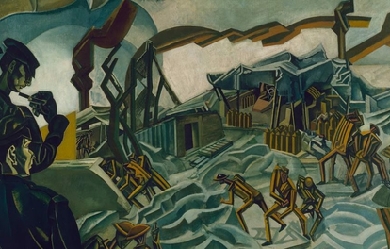

Frank Stuart Flint (19 December 1885– 28 February 1960) was an English poet and translator who was a prominent member of the Imagist group. Ford Madox Ford called him “one of the greatest men and one of the beautiful spirits of the country”. Life and career British poet, and a poetry reviewer with an unusual gift for language, a self-educated man, born in Islington, London; he left school at 13 and worked in various capacities before beginning his long and distinguished career in the Civil Service in 1904. He published a book on French poets, starting in 1908 and by 1910, his intensive private study had gained him recognition as one of Britain’s most highly informed authorities on modern French poetry. His first collection of poems, In the Net of the Stars (1909), consisted mainly of conventional love lyrics. Flint is mostly known for his participation in the “School of Images” with Ezra Pound and T. E. Hulme in 1909, of which he gave an account in the “Poetry Review” in 1909, and which was to serve as the theoretical basis for the later Imagist movement (1913). His subsequent association with Ezra Pound and T. E. Hulme, together with his deepening knowledge of innovative French poetic techniques, radically affected his poetry’s development. Glenn Hughes reports Flint ‘claiming to inventing the open verse form ’unrimed cadence’, by cutting away all personal emotion, where symbolism was barely suggested, but instead shortened and hardened, and where meter was supplanted by cadence’. Hughes explaining Flint’s form is best understood ‘by comparing his poem ’ A Swan Song’(Published in 1909 and later by Pound in 1914 in 'Des Imagistes’) and, his later ‘cadenced ’ version thereof, ' The Swan’, a poem so devoid of superfluities and cliches, to achieve that perfect chiseled beauty which is the essence of classical art’ In 1916 Flint was described as having ' the gift of artistic courage clothed in beauty which will help build the poetry of the future’. Flint himself, considered his 'cadenced’ form to be a reversion to the real tradition of the English poetry of Cynewulf in the 'Riddle, The Nightingale’ Earlier Flint had published a series of articles on contemporary French poets (1912) that much influenced his contemporaries. In 1914 he was included by Pound in Des Imagistes. He entered into a short-lived dispute with Pound as to each one’s relative contribution to the Imagist movement. During the 1930s Flint was among a number of poets who moved away from poetry and towards economics, working for the Statistics Division of the Ministry of Labour writing that "[t]he proper study of mankind is, for the time being, economics". Flint would go on to publish an article entitled The Plain Man and Economics in The Criterion in 1937. He became a leading spokesman for Imagism and exemplified its methods in the concentration and clarity displayed by much of the work in Cadences (1915). Otherworld, his third and last collection, was published in 1920, its lengthy title poem responding to the desolation of the First World War in its meditations on more viable modes of existence. For some years after he ceased publishing poetry, Flint continued to contribute influential articles to the Times Literary Supplement and The Criterion. He was also a prolific translator of prose works and poetry by French, German, and classical authors. With the exception of some short works arising from his activities as a civil servant, he ceased writing for publication entirely in the early 1930s. Poetry In the Net of the Stars, BiblioBazaar (Jun 2009) ISBN 978-1-110-85842-2 Cadences, Poetry Bookshop. London, 1915 Otherworld: Cadences, Poetry Bookshop, 1920 Translations The Love Poems of Emile Verhaeren, Houghton Mifflin, Boston 1916 The Closed Door, by Jean de Bosschere, John Lane, London 1917 Essays etc ‘Contemporary French Poetry’, article in The Poetry Review, August 1912 ‘Some Modern French Poets( A Commentarey with a Specimen) The Chapbook: A Monthly Miscellany, London October 1919 ‘ The Younger French Poets The Chapbook; A Monthly Miscellany, London November 1920 ‘The History of Imagism’, essay in The Egoist, May 1915 ‘The Poetry of HD ’ essay in The Egoist, May 1915 ‘ Six French Poets’ essay in The Egoist, January 1916 ‘Imagisme, Poetry Chicago March 1913 References Wikipedia—https://en.wikipedia.org/wiki/F._S._Flint
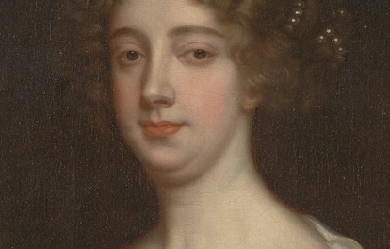

Aphra Behn (14 December 1640? April 1689) was an English playwright, poet, translator and fiction writer from the Restoration era. As one of the first English women to earn her living by her writing, she broke cultural barriers and served as a literary role model for later generations of women authors. Rising from obscurity, she came to the notice of Charles II, who employed her as a spy in Antwerp. Upon her return to London and a probable brief stay in debtors’ prison, she began writing for the stage. She belonged to a coterie of poets and famous libertines such as John Wilmot, Lord Rochester. She wrote under the pastoral pseudonym Astrea. During the turbulent political times of the Exclusion Crisis, she wrote an epilogue and prologue that brought her into legal trouble; she thereafter devoted most of her writing to prose genres and translations. A staunch supporter of the Stuart line, she declined an invitation from Bishop Burnet to write a welcoming poem to the new king William III. She died shortly after.She is remembered in Virginia Woolf’s A Room of One’s Own: “All women together ought to let flowers fall upon the tomb of Aphra Behn which is, most scandalously but rather appropriately, in Westminster Abbey, for it was she who earned them the right to speak their minds.” Her grave is not included in the Poets’ Corner but lies in the East Cloister near the steps to the church. Life and work Versions of her early life Information regarding Behn’s life is scant, especially regarding her early years. This may be due to intentional obscuring on Behn’s part. One version of Behn’s life tells that she was born to a barber named John Amis and his wife Amy. Another story has Behn born to a couple named Cooper. The Histories And Novels of the Late Ingenious Mrs. Behn (1696) states that Behn was born to Bartholomew Johnson, a barber, and Elizabeth Denham, a wet-nurse. Colonel Thomas Colepeper, the only person who claimed to have known her as a child, wrote in Adversaria that she was born at “Sturry or Canterbury” to a Mr Johnson and that she had a sister named Frances. Another contemporary, Anne Finch, wrote that Behn was born in Wye in Kent, the “Daughter to a Barber”. In some accounts the profile of her father fits Eaffrey Johnson.Behn was born during the buildup of the English Civil War, a child of the political tensions of the time. One version of Behn’s story has her travelling with a Bartholomew Johnson to Surinam. He was said to die on the journey, with his wife and children spending some months in the country, though there is no evidence of this. During this trip Behn said she met an African slave leader, whose story formed the basis for one of her most famous works, Oroonoko. It is possible that she acted a spy in the colony. There is little verifiable evidence to confirm any one story. In Oroonoko Behn gives herself the position of narrator and her first biographer accepted the assumption that Behn was the daughter of the lieutenant general of Surinam, as in the story. There is little evidence that this was the case, and none of her contemporaries acknowledge any aristocratic status. There is also no evidence that Oroonoko existed as an actual person or that any such slave revolt, as is featured in the story, really happened. Writer Germaine Greer has called Behn “a palimpsest; she has scratched herself out,” and biographer Janet Todd noted that Behn “has a lethal combination of obscurity, secrecy and staginess which makes her an uneasy fit for any narrative, speculative or factual. She is not so much a woman to be unmasked as an unending combination of masks”. It is notable that her name is not mentioned in tax or church records. During her lifetime she was also known as Ann Behn, Mrs Bean, agent 160 and Astrea. Career Shortly after her supposed return to England from Surinam in 1664, Behn may have married Johan Behn (also written as Johann and John Behn). He may have been a merchant of German or Dutch extraction, possibly from Hamburg. He died or the couple separated soon after 1664, however from this point the writer used “Mrs Behn” as her professional name.Behn may have had a Catholic upbringing. She once commented that she was “designed for a nun,” and the fact that she had so many Catholic connections, such as Henry Neville who was later arrested for his Catholicism, would have aroused suspicions during the anti-Catholic fervour of the 1680s. She was a monarchist, and her sympathy for the Stuarts, and particularly for the Catholic Duke of York may be demonstrated by her dedication of her play The Rover II to him after he had been exiled for the second time. Behn was dedicated to the restored King Charles II. As political parties emerged during this time, Behn became a Tory supporter.By 1666 Behn had become attached to the court, possibly through the influence of Thomas Culpeper and other associates. The Second Anglo-Dutch War had broken out between England and the Netherlands in 1665, and she was recruited as a political spy in Antwerp on behalf of King Charles II, possibly under the auspices of courtier Thomas Killigrew. This is the first well-documented account we have of her activities. Her code name is said to have been Astrea, a name under which she later published many of her writings. Her chief role was to establish an intimacy with William Scot, son of Thomas Scot, a regicide who had been executed in 1660. Scot was believed to be ready to become a spy in the English service and to report on the doings of the English exiles who were plotting against the King. Behn arrived in Bruges in July 1666, probably with two others, as London was wracked with plague and fire. Behn’s job was to turn Scot into a double agent, but there is evidence that Scot betrayed her to the Dutch.Behn’s exploits were not profitable however; the cost of living shocked her, and she was left unprepared. One month after arrival, she pawned her jewellry. King Charles was slow in paying (if he paid at all), either for her services or for her expenses whilst abroad. Money had to be borrowed so that Behn could return to London, where a year’s petitioning of Charles for payment was unsuccessful. It may be that she was never paid by the crown. A warrant was issued for her arrest, but there is no evidence it was served or that she went to prison for her debt, though apocryphally it is often given as part of her history. Forced by debt and her husband’s death, Behn began to work for the King’s Company and the Duke’s Company players as a scribe. She had, however, written poetry up until this point. While she is recorded to have written before she adopted her debt, John Palmer said in a review of her works that, “Mrs. Behn wrote for a livelihood. Playwriting was her refuge from starvation and a debtor’s prison.” The theatres that had been closed under Cromwell were now re-opening under Charles II, plays enjoying a revival. Her first play, The Forc’d Marriage, was staged in 1670, followed by The Amorous Prince (1671). After her third play, The Dutch Lover, failed, Behn falls off the public record for three years. It is speculated that she went travelling again, possibly in her capacity as a spy. She gradually moved towards comic works, which proved more commercially successful. Her most popular works included The Rover. Behn became friends with notable writers of the day, including John Dryden, Elizabeth Barry, John Hoyle, Thomas Otway and Edward Ravenscroft, and was acknowledged as a part of the circle of the Earl of Rochester. Behn often used her writings to attack the parliamentary Whigs claiming, “In public spirits call’d, good o’ th’ Commonwealth... So tho’ by different ways the fever seize... in all ’tis one and the same mad disease.” This was Behn’s reproach to parliament which had denied the king funds. Final years and death In 1688, in the year before her death, she published A Discovery of New Worlds, a translation of a French popularisation of astronomy, Entretiens sur la pluralité des mondes, by Bernard le Bovier de Fontenelle, written as a novel in a form similar to her own work, but with her new, religiously oriented preface. In all she would write and stage 19 plays, contribute to more, and become one of the first prolific, high-profile female dramatists in Britain. During the 1670s and 1680s she was one of the most productive playwrights in Britain, second only to Poet Laureate John Dryden.In her last four years, Behn’s health began to fail, beset by poverty and debt, but she continued to write ferociously, though it became increasingly hard for her to hold a pen. In her final days, she wrote the translation of the final book of Abraham Cowley’s Six Books of Plants. She died on 16 April 1689, and was buried in the East Cloister Westminster Abbey. The inscription on her tombstone reads: “Here lies a Proof that Wit can never be Defence enough against Mortality.” She was quoted as stating that she had led a “life dedicated to pleasure and poetry.” Published works Behn earned a living writing, one of the earliest Englishwoman to do so. After John Dryden she was the most prolific writer of the English Restoration. Behn was not the first woman in England to publish a play. In 1613 Lady Elizabeth Cary had published The Tragedy of Miriam, in the 1650s Margaret Cavendish published two volumes of plays, and in 1663 a translation of Corneille’s Pompey by Katherine Philips was performed in Dublin and London. Women had been excluded from theatre in the Elizabethan era, but in Restoration England they made up a significant part of the audience and professional actresses played the women’s parts. This changed the nature and themes of Restoration theatre.Behn’s first play The Forc’d Marriage was a romantic tragicomedy on arranged marriages and was staged by the Duke’s Company in September 1670. The performance ran for six nights, which was regarded as a good run for an unknown author. Six months later Behn’s play The Amorous Prince was successfully staged. Again, Behn used the play to comment on the harmful effects of arranged marriages. Behn did not hide the fact that she was a woman, instead she made a point of it. When in 1673 the Dorset Garden Theatre staged The Dutch Lover, critics sabotaged the play on the grounds that the author was a woman. Behn tackled the critics head on in Epistle to the Reader. She argued that women had been held back by their unjust exclusion from education, not their lack of ability. After a three-year publication pause, Behn published four plays in close succession. In 1676 she published Abdelazar, The Town Fop and The Rover. In early 1678 Sir Patient Fancy was published. This succession of box-office successes led to frequent attacks on Behn. She was attacked for her private life, the morality of her plays was questioned and she was accused of plagiarising The Rover. Behn countered these public attacks in the prefaces of her published plays. In the preface to Sir Patient Fancy she argued that she was being singled out because she was a woman, while male playwrights were free to live the most scandalous lives and write bawdy plays.Under Charles II of England prevailing Puritan ethics was reversed in the fashionable society of London. The King associated with playwrights that poured scorn on marriage and the idea of consistency in love. Among the King’s favourite was the Earl of Rochester John Wilmot, who became famous for his cynical libertinism. Behn was a friend of Wilmot and Behn became a bold proponent of sexual freedom for both women and men. Like her contemporary male libertines, she wrote freely about sex. In the infamous poem The Disappointment she wrote a comic account of male impotence from a woman’s perspective. Critics Lisa Zeitz and Peter Thoms contend that the poem “playfully and wittily questions conventional gender roles and the structures of oppression which they support”. In The Dutch Lover Behn forthrightly acknowledged female sexual desire. Critics of Behn were provided with ammunition because of her public liaison with John Hoyle, a bisexual lawyer who scandalised his contemporaries.By the late 1670s Behn was among the leading playwrights of England. Her plays were staged frequently and attended by the King. The Rover became a favourite at the King’s court. Behn became heavily involved in the political debate about the succession. Because Charles II had no heir a prolonged political crisis ensued. Mass hysteria commenced as in 1678 the rumoured Popish Plot suggested the King should be replaced with his Roman Catholic brother James. Political parties developed, the Whigs wanted to exclude James, while the Tories did not believe succession should be altered in any way. Charles II eventually dissolved the Cavalier Parliament and James II succeeded him in 1685. Behn supported the Tory position and in the two years between 1681 and 1682 produced five plays to discredit the Whigs. The London audience, mainly Tory sympathisers, attended the plays in large numbers. But Behn was arrested on the order of King Charles II when she used one of the plays to attack James Scott, Duke of Monmouth, the illegitimate son of the King.As audience numbers declined, theatres staged mainly old works to save costs. Nevertheless, Behn published The Luckey Chance in 1686. In response to the criticism levelled at they play she articulated a long and passionate defence of women writers. Her play The Emperor of the Moon was published and staged in 1687, it became one of her longest running plays. Behn stopped writing plays and turned to prose fiction. Today she is mostly known for the novels she wrote in the later part of her life. Her first novel was the three-part Love-Letters Between a Nobleman and His Sister, published between 1682 and 1687. The novels were inspired by a contemporary scandal, which saw Lord Grey elope with his sister-in-law Lady Henrietta Berkeley. At the time of publication Love Letters was very popular and went through more than 16 editions. Today Behn’s prose work is critically acknowledged as having been important to the development of the English novel. Following Behn’s death, new female dramatists such as Delarivier Manley, Mary Pix, Susanna Centlivre and Catherine Trotter acknowledged Behn as their most vital predecessor, who opened up public space for women writers.In 1688, less than a year before her death, Behn published Oroonoko: or, The Royal Oroonoko, the story of the enslaved Oroonoko and his love Imoinda. It was based on Behn’s travel to Surinam twenty years earlier. The novel became a great success. In 1696 it was adapted for the stage by Thomas Southerne and continuously performed throughout the 18th century. In 1745 the novel was translated into French, going through seven French editions. As abolitionism gathered pace in the late 18th century the novel was celebrated as the first anti-slavery novel. Legacy and re-evaluation After her death in 1689 Behn’s literary work was marginalised and dismissed outright. Until the mid-20th century Behn was repeatedly dismissed as morally depraved minor writer. In the 18th century her literary work was scandalised as lewd by Thomas Brown, William Wycherley, Richard Steele and John Duncombe. Alexander Pope penned the famous lines “The stage how loosely does Astrea tread, Who fairly puts all characters to bed!”. In the 19th century Mary Hays, Matilda Betham, Alexander Dyce, Jane Williams and Julia Kavanagh decided that Behn’s writings were unfit to read, because they were corrupt and deplorable. Among the few critics who believed that Behn was an important writer were Leigh Hunt, William Forsyth and William Henry Hudson.The life and times of Behn were recounted by a long line of biographers, among them Dyce, Edmund Gosse, Ernest Bernbaum, Montague Summers, Vita Sackville-West, Virginia Woolf, George Woodcock, William J. Cameron and Frederick Link.Of Behn’s considerable literary output only Oroonoko was seriously considered by literary scholars. The late 18th century the novel is regarded as one of the first abolitionist and humanitarian novel published in the English language. It is credited as precursor to Jean-Jaques Rousseau’s Discourses on Inequality. Since the 1970s Behn’s literary works have been re-evaluated by feminist critics and writers. Behn was rediscovered as a significant female writer by Maureen Duffy, Angeline Goreau, Ruth Perry, Hilda Lee Smith, Moira Ferguson, Jane Spencer, Dale Spender, Elaine Hobby and Janet Todd. This led to the reprinting of her works. The Rover was republished in 1967, Oroonoko was republished in 1973, Love Letters between a Nobleman and His Sisters was published again in 1987 and The Lucky Chance was reprinted in 1988. Montague Summers, an author of scholarly works on the English drama of the 17th century, published a six-volume collection of her work, in hopes of rehabilitating her reputation. Summers was fiercely passionate about the work of Behn and found himself incredibly devoted to the appreciation of 17th century literature. Felix Schelling wrote in The Cambridge History of English Literature, that she was “a very gifted woman, compelled to write for bread in an age in which literature... catered habitually to the lowest and most depraved of human inclinations,” and that, “Her success depended upon her ability to write like a man.” Edmund Gosse remarked that she was, “...the George Sand of the Restoration”.The criticism of Behn’s poetry focuses on the themes of gender, sexuality, femininity, pleasure, and love. A feminist critique tends to focus on Behn’s inclusion of female pleasure and sexuality in her poetry, which was a radical concept at the time she was writing. One critic, Alison Conway, views Behn as instrumental to the formation of modern thought around the female gender and sexuality: "Behn wrote about these subjects before the technologies of sexuality we now associate were in place, which is, in part, why she proves so hard to situate in the trajectories most familiar to us”. Virginia Woolf wrote, in A Room of One’s Own: All women together, ought to let flowers fall upon the grave of Aphra Behn... for it was she who earned them the right to speak their minds... Behn proved that money could be made by writing at the sacrifice, perhaps, of certain agreeable qualities; and so by degrees writing became not merely a sign of folly and a distracted mind but was of practical importance. Adaptations of Behn in Literature Behn’s life has been adapted for the stage in the 2014 play Empress of the Moon: The Lives of Aphra Behn by Chris Braak, and the 2015 play [exit Mrs Behn] or, The Leo Play by Christopher VanderArk. She is one of the characters in the 2010 play Or, by Liz Duffy Adams. Behn appears as a character in Daniel O’Mahony’s Newtons Sleep, in Phillip Jose Farmer’s The Magic Labyrinth and Gods of Riverworld, in Molly Brown’s Invitation to a Funeral (1999), and in Diana Norman’s The Vizard Mask. She is referred to in Patrick O’Brian’s novel Desolation Island.
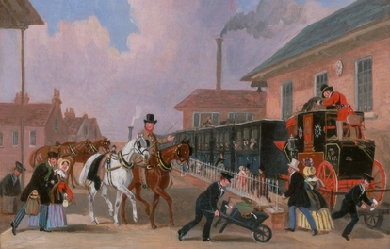
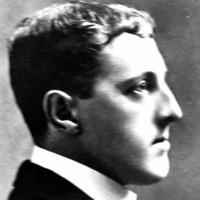
Norman Rowland Gale (4 March 1862– 7 October 1942) was a poet, story-teller and reviewer, who published many books over a period of nearly fifty years. Gale was born in Kew, Surrey. He entered Exeter College, Oxford in 1880 and graduated in 1884. He was a teacher for some years, but in 1892 he began writing full-time.
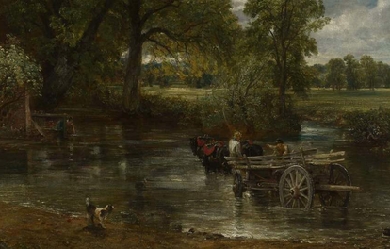
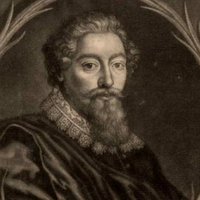
Francis Beaumont (1584– 6 March 1616) was a dramatist in the English Renaissance theatre, most famous for his collaborations with John Fletcher. Beaumont was the son of Sir Francis Beaumont of Grace Dieu, near Thringstone in Leicestershire, a justice of the common pleas. His mother was Anne, the daughter of Sir George Pierrepont (d. 1564), of Holme Pierrepont, and his wife Winnifred Twaits. Beaumont was born at the family seat and was educated at Broadgates Hall (now Pembroke College, Oxford) at age thirteen. Following the death of his father in 1598, he left university without a degree and followed in his father’s footsteps by entering the Inner Temple in London in 1600. Accounts suggest that Beaumont did not work long as a lawyer. He became a student of poet and playwright Ben Jonson; he was also acquainted with Michael Drayton and other poets and dramatists, and decided that was where his passion lay. His first work, Salmacis and Hermaphroditus, appeared in 1602. The 1911 edition of the Encyclopædia Britannica describes the work as “not on the whole discreditable to a lad of eighteen, fresh from the popular love-poems of Marlowe and Shakespeare, which it naturally exceeds in long-winded and fantastic diffusion of episodes and conceits.” In 1605, Beaumont wrote commendatory verses to Jonson’s Volpone. Beaumont’s collaboration with Fletcher may have begun as early as 1605. They had both hit an obstacle early in their dramatic careers with notable failures; Beaumont’s The Knight of the Burning Pestle, first performed by the Children of the Blackfriars in 1607, was rejected by an audience who, the publisher’s epistle to the 1613 quarto claims, failed to note “the privie mark of irony about it;” that is, they took Beaumont’s satire of old-fashioned drama as an old-fashioned drama. The play received a lukewarm reception. The following year, Fletcher’s Faithful Shepherdess failed on the same stage. In 1609, however, the two collaborated on Philaster, which was performed by the King’s Men at the Globe Theatre and at Blackfriars. The play was a popular success, not only launching the careers of the two playwrights but also sparking a new taste for tragicomedy. According to a mid-century anecdote related by John Aubrey, they lived in the same house on the Bankside in Southwark, “sharing everything in the closest intimacy.” About 1613 Beaumont married Ursula Isley, daughter and co-heiress of Henry Isley of Sundridge in Kent, by whom he had two daughters, one posthumous. He had a stroke between February and October 1613, after which he wrote no more plays, but was able to write an elegy for Lady Penelope Clifton, who died 26 October 1613. Beaumont died in 1616 and was buried in Westminster Abbey. Although today Beaumont is remembered as a dramatist, during his lifetime he was also celebrated as a poet. Beaumont’s plays It was once written of Beaumont and Fletcher that “in their joint plays their talents are so... completely merged into one, that the hand of Beaumont cannot clearly be distinguished from that of Fletcher.” Yet this romantic notion did not stand up to critical examination. In the seventeenth century, Sir Aston Cockayne, a friend of Fletcher’s, specified that there were many plays in the 1647 Beaumont and Fletcher folio that contained nothing of Beaumont’s work, but rather featured the writing of Philip Massinger. Nineteenth– and twentieth-century critics like E. H. C. Oliphant subjected the plays to a self-consciously literary, and often subjective and impressionistic, reading—but nonetheless began to differentiate the hands of the collaborators. This study was carried much farther, and onto a more objective footing, by twentieth-century scholars, especially Cyrus Hoy. Short of absolute certainty, a critical consensus has evolved on many plays in the canon of Fletcher and his collaborators; in regard to Beaumont, the schema below is among the least controversial that has been drawn. By Beaumont alone: The Knight of the Burning Pestle, comedy (performed 1607; printed 1613) The Masque of the Inner Temple and Gray’s Inn, masque (performed 20 February 1613; printed 1613?) With Fletcher: The Woman Hater, comedy (1606; 1607) Cupid’s Revenge, tragedy (c. 1607–12; 1615) Philaster, or Love Lies a-Bleeding, tragicomedy (c. 1609; 1620) The Maid’s Tragedy, tragedy (c. 1609; 1619) A King and No King, tragicomedy (1611; 1619) The Captain, comedy (c. 1609–12; 1647) The Scornful Lady, comedy (ca. 1613; 1616) Love’s Pilgrimage, tragicomedy (c. 1615–16; 1647) The Noble Gentleman, comedy (licensed 3 February 1626; 1647) Beaumont/Fletcher plays, later revised by Massinger: Thierry and Theodoret, tragedy (c. 1607?; 1621) The Coxcomb, comedy (c. 1608–10; 1647) Beggars’ Bush, comedy (c. 1612–13?; revised 1622?; 1647) Love’s Cure, comedy (c. 1612–13?; revised 1625?; 1647) Because of Fletcher’s highly distinctive and personal pattern of linguistic preferences and contractional forms (ye for you, 'em for them, etc.), his hand can be distinguished fairly easily from Beaumont’s in their collaborations. In A King and No King, for example, Beaumont wrote all of Acts I, II, and III, plus scenes IV.iv and V.ii and iv; Fletcher wrote only the first three scenes in Act IV (IV, i-iii) and the first and third scenes in Act V (V, i and iii)—so that the play is more Beaumont’s than Fletcher’s. The same is true of The Woman Hater, The Maid’s Tragedy, The Noble Gentleman, and Philaster. On the other hand, Cupid’s Revenge, The Coxcomb, The Scornful Lady, Beggar’s Bush, and The Captain are more Fletcher’s than Beaumont’s. In Love’s Cure and Thierry and Theodoret, the influence of Massinger’s revision complicates matters; but in those plays too, Fletcher appears to be the majority contributor, Beaumont the minority. References Wikipedia—https://en.wikipedia.org/wiki/Francis_Beaumont

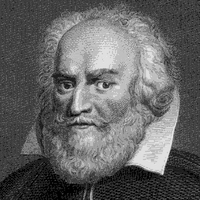
George Chapman (Hitchin, Hertfordshire, C. 1559– London,12 May 1634) was an English dramatist, translator, and poet. He was a classical scholar whose work shows the influence of Stoicism. Chapman has been identified as the Rival Poet of Shakespeare’s sonnets by William Minto, and as an anticipator of the Metaphysical Poets of the 17th century. Chapman is best remembered for his translations of Homer’s Iliad and Odyssey, and the Homeric Batrachomyomachia. Life and work Chapman was born at Hitchin in Hertfordshire. There is conjecture that he studied at Oxford but did not take a degree, though no reliable evidence affirms this. Very little is known about Chapman’s early life, but Mark Eccles uncovered records that reveal much about Chapman’s difficulties and expectations. In 1585 Chapman was approached in a friendly fashion by John Wolfall, Sr., who offered to supply a bond of surety for a loan to furnish Chapman money “for his proper use in Attendance upon the then Right Honorable Sir Rafe Sadler Knight.” Chapman’s courtly ambitions led him into a trap. He apparently never received any money, but he would be plagued for many years by the papers he had signed. Wolfall had the poet arrested for debt in 1600, and when in 1608 Wolfall’s son, having inherited his father’s papers, sued yet again, Chapman’s only resort was to petition the Court of Chancery for equity. As Sadler died in 1587, this gives Chapman little time to have trained under him. It seems more likely that he was in Sadler’s household from 1577–83, as he dedicates all his Homerical translations to him. Chapman spent the early 1590s abroad, and saw military action in the Low Countries fighting under renowned English general Sir Francis Vere. His earliest published works were the obscure philosophical poems The Shadow of Night (1594) and Ovid’s Banquet of Sense (1595). The latter has been taken as a response to the erotic poems of the age, such as Philip Sidney’s Astrophil and Stella and Shakespeare’s Venus and Adonis. Chapman’s life was troubled by debt and his inability to find a patron whose fortunes did not decline: Robert Devereux, Second Earl of Essex and the Prince of Wales, Prince Henry both met their ends prematurely. The former was executed for treason by Elizabeth I in 1601, and the latter died of typhoid fever at the age of eighteen in 1612. Chapman’s resultant poverty did not diminish his ability or his standing among his fellow Elizabethan poets and dramatists. Chapman died in London, having lived his latter years in poverty and debt. He was buried at St Giles in the Fields. A monument to him designed by Inigo Jones marked his tomb, and stands today inside the church. Plays Comedies By the end of the 1590s, Chapman had become a successful playwright, working for Philip Henslowe and later for the Children of the Chapel. Among his comedies are The Blind Beggar of Alexandria (1596; printed 1598), An Humorous Day’s Mirth (1597; printed 1599), All Fools (printed 1605), Monsieur D’Olive (1605; printed 1606), The Gentleman Usher (printed 1606), May Day (printed 1611), and The Widow’s Tears (printed 1612). His plays show a willingness to experiment with dramatic form: An Humorous Day’s Mirth was one of the first plays to be written in the style of “humours comedy” which Ben Jonson later used in Every Man in his Humour and Every Man Out of his Humour. With The Widow’s Tears, he was also one of the first writers to meld comedy with more serious themes, creating the tragicomedy later made famous by Beaumont and Fletcher. He also wrote one noteworthy play in collaboration. Eastward Ho (1605), written with Jonson and John Marston, contained satirical references to the Scots which landed Chapman and Jonson in jail. Various of their letters to the king and noblemen survive in a manuscript in the Folger Library known as the Dobell MS, and published by AR Braunmuller as A Seventeenth Century Letterbook. In the letters, both men renounced the offending line, implying that Marston was responsible for the injurious remark. Jonson’s “Conversations With Drummond” refers to the imprisonment, and suggests there was a possibility that both authors would have their “ears and noses slit” as a punishment, but this may have been Jonson elaborating on the story in retrospect. Chapman’s friendship with Jonson broke down, perhaps as a result of Jonson’s public feud with Inigo Jones. Some satiric, scathing lines, written sometime after the burning of Jonson’s desk and papers, provide evidence of the rift. The poem lampooning Jonson’s aggressive behaviour and self-believed superiority remained unpublished during Chapman’s lifetime; it was found in documents collected after his death. Tragedies Chapman’s greatest tragedies took their subject matter from recent French history, the French ambassador taking offence on at least one occasion. These include Bussy D’Ambois (1607), The Conspiracy and Tragedy of Charles, Duke of Byron (1608), The Revenge of Bussy D’Ambois (1613) and The Tragedy of Chabot, Admiral of France (published 1639). The two Byron plays were banned from the stage—although, when the Court left London, the plays were performed in their original and unexpurgated forms by the Children of the Chapel. The French ambassador probably took offence to a scene which portrays Henry IV’s wife and mistress arguing and physically fighting. On publication, the offending material was excised, and Chapman refers to the play in his dedication to Sir Thomas Walsingham as “poore dismembered Poems.” His only work of classical tragedy, Caesar and Pompey (ca. 1613?) is generally regarded as his most modest achievement in the genre. Other plays Chapman wrote one of the most successful masques of the Jacobean era, The Memorable Masque of the Middle Temple and Lincoln’s Inn, performed on 15 February 1613. According to Kenneth Muir, The Masque of the Twelve Months, performed on Twelfth Night 1619 and first printed by John Payne Collier in 1848 with no author’s name attached, is also ascribed to Chapman. Chapman’s authorship has been argued in connection with a number of other anonymous plays of his era. F. G. Fleay proposed that his first play was The Disguises. He has been put forward as the author, in whole or in part, of Sir Giles Goosecap, Two Wise Men And All The Rest Fools, The Fountain Of New Fashions, and The Second Maiden’s Tragedy. Of these, only 'Sir Gyles Goosecap’ is generally accepted by scholars to have been written by Chapman (The Plays of George Chapman: The Tragedies, with Sir Giles Goosecap, edited by Allan Holaday, University of Illinois Press, 1987). In 1654, bookseller Richard Marriot published the play Revenge for Honour as the work of Chapman. Scholars have rejected the attribution; the play may have been written by Henry Glapthorne. Alphonsus Emperor of Germany (also printed 1654) is generally considered another false Chapman attribution. The lost plays The Fatal Love and A Yorkshire Gentlewoman And Her Son were assigned to Chapman in Stationers’ Register entries in 1660. Both of these plays were among the ones destroyed in the famous kitchen burnings by John Warburton’s cook. The lost play Christianetta (registered 1640) may have been a collaboration between Chapman and Richard Brome, or a revision by Brome of a Chapman work. Poet and translator Other poems by Chapman include: De Guiana, Carmen Epicum (1596), on the exploits of Sir Walter Raleigh; a continuation of Christopher Marlowe’s unfinished Hero and Leander (1598); and Euthymiae Raptus; or the Tears of Peace (1609). Some have considered Chapman to be the “rival poet” of Shakespeare’s Sonnets. From 1598 he published his translation of the Iliad in installments. In 1616 the complete Iliad and Odyssey appeared in The Whole Works of Homer, the first complete English translation, which until Pope’s was the most popular in the English language and was the way most English speakers encountered these poems. The endeavour was to have been profitable: his patron, Prince Henry, had promised him £300 on its completion plus a pension. However, Henry died in 1612 and his household neglected the commitment, leaving Chapman without either a patron or an income. In an extant letter, Chapman petitions for the money owed him; his petition was ineffective. Chapman’s translation of the Odyssey is written in iambic pentameter, whereas his Iliad is written in iambic heptameter. (The Greek original is in dactylic hexameter.) Chapman often extends and elaborates on Homer’s original contents to add descriptive detail or moral and philosophical interpretation and emphasis. Chapman’s translation of Homer was much admired by John Keats, notably in his famous poem On First Looking into Chapman’s Homer, and also drew attention from Samuel Taylor Coleridge and T. S. Eliot. Chapman also translated the Homeric Hymns, the Georgics of Virgil, The Works of Hesiod (1618, dedicated to Francis Bacon), the Hero and Leander of Musaeus (1618), and the Fifth Satire of Juvenal (1624). Chapman’s poetry, though not widely influential on the subsequent development of English poetry, did have a noteworthy effect on the work of T. S. Eliot. Homage In Percy Bysshe Shelley’s poem The Revolt of Islam, Shelley quotes a verse of Chapman’s as homage within his dedication "to Mary__ __", presumably his wife Mary Shelley: There is no danger to a man, that knows What life and death is: there's not any law Exceeds his knowledge; neither is it lawful That he should stoop to any other law. The Irish playwright Oscar Wilde quoted the same verse in his part fiction, part literary criticism, “The Portrait of Mr. W.H.”. The English poet John Keats wrote “On First Looking into Chapman’s Homer” for his friend Charles Cowden Clarke in October 1816. The poem begins “Much have I travell’d in the realms of gold” and is much quoted. For example, P. G. Wodehouse in his review of the first novel of The Flashman Papers series that came to his attention: “Now I understand what that 'when a new planet swims into his ken’ excitement is all about.” Arthur Ransome uses two references from it in his children’s books, the Swallows and Amazons series. Quotes From All Fooles, II.1.170-178, by George Chapman: I could have written as good prose and verse As the most beggarly poet of 'em all, Either Accrostique, Exordion, Epithalamions, Satyres, Epigrams, Sonnets in Doozens, or your Quatorzanies, In any rhyme, Masculine, Feminine, Or Sdrucciola, or cooplets, Blancke Verse: Y'are but bench-whistlers now a dayes to them That were in our times.... References Wikipedia—https://en.wikipedia.org/wiki/George_Chapman
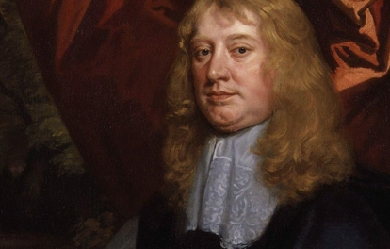
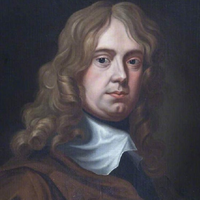
Abraham Cowley (1618– 28 July 1667) was an English poet born in the City of London late in 1618. He was one of the leading English poets of the 17th century, with 14 printings of his Works published between 1668 and 1721. Early life and career His father, a wealthy citizen, who died shortly before his birth, was a stationer. His mother was wholly given to works of devotion, but it happened that there lay in her parlour a copy of The Faerie Queene. This became the favourite reading of her son, and he had read it twice before he was sent to school. As early as 1628, that is, in his tenth year, he composed his Tragicall History of Piramus and Thisbe, an epic romance written in a six-line stanza, a style of his own invention. It is not too much to say that this work is the most astonishing feat of imaginative precocity on record; it is marked by no great faults of immaturity, and possesses constructive merits of a very high order. Two years later the child wrote another and still more ambitious poem, Constantia and Philetus, being sent about the same time to Westminster School. Here he displayed extraordinary mental precocity and versatility, and wrote in his thirteenth year the Elegy on the Death of Dudley, Lord Carlton. These three poems of considerable size, and some smaller ones, were collected in 1633, and published in a volume entitled Poetical Blossoms, dedicated to the head master of the school, and prefaced by many laudatory verses by schoolfellows. The author at once became famous, although he had not, even yet, completed his fifteenth year. His next composition was a pastoral comedy, entitled Love’s Riddle, a marvelous production for a boy of sixteen, airy, correct and harmonious in language, and rapid in movement. The style is not without resemblance to that of Randolph, whose earliest works, however, were at that time only just printed. In 1637 Cowley was elected into Trinity College, Cambridge, where he betook himself with enthusiasm to the study of all kinds of learning, and early distinguished himself as a ripe scholar. Portraits of Cowley, attributed to William Faithorne and Stephen Slaughter, are in Trinity College’s collection. It was about this time that he composed his scriptural epic on the history of King David, one book of which still exists in the Latin original, the rest being superseded in favour of an English version in four books, called the Davideis, which were published after his death. The epic deals with the adventures of King David from his boyhood to the smiting of Amalek by Saul, where it abruptly closes. In 1638 Love’s Riddle and a Latin comedy, the Naufragium Joculare, were printed, and in 1641 the passage of Prince Charles through Cambridge gave occasion to the production of another dramatic work, The Guardian, which was acted before the royal visitor with much success. During the civil war this play was privately performed at Dublin, but it was not printed till 1650. It is bright and amusing, in the style common to the “sons” of Ben Jonson, the university wits who wrote more for the closet than the public stage. Royalist in exile The learned quiet of the young poet’s life was broken up by the Civil War; he warmly espoused the royalist side. He became a fellow of Trinity College, Cambridge, but was ejected by the Parliamentarians in 1643. He made his way to Oxford, where he enjoyed the friendship of Lord Falkland, and was tossed, in the tumult of affairs, into the personal confidence of the royal family itself. After the battle of Marston Moor he followed the queen to Paris, and the exile so commenced lasted twelve years. This period was spent almost entirely in the royal service, “bearing a share in the distresses of the royal family, or labouring in their affairs. To this purpose he performed several dangerous journeys into Jersey, Scotland, Flanders, the Netherlands, or wherever else the king’s troubles required his attendance. But the chief testimony of his fidelity was the laborious service he underwent in maintaining the constant correspondence between the late king and the queen his wife. In that weighty trust he behaved himself with indefatigable integrity and unsuspected secrecy; for he ciphered and deciphered with his own hand the greatest part of all the letters that passed between their majesties, and managed a vast intelligence in many other parts, which for some years together took up all his days, and two or three nights every week.” In spite of these labours he did not refrain from literary industry. During his exile he met with the works of Pindar, and determined to reproduce their lofty lyric passion in English. However, Cowley misunderstood Pindar’s metrical practice and therefore his reproduction of the Pindaric Ode form in English does not accurately reflect Pindar’s poetics. But despite this problem, Cowley’s use of iambic lines of irregular length, pattern, and rhyme scheme was very influential and is still known as English “Pindarick” Ode, or Irregular Ode. One of the most famous odes written after Cowley in the Pindaric tradition is Wordsworth’s “Intimations of Immortality.” During this same time, Cowley occupied himself in writing a history of the Civil War (which did not get published in full until 1973). In the preface to his 1656 Poems, Cowley mentioned that he had completed three books of an epic poem on the Civil War, but had left it unfinished after the First Battle of Newbury when the Royalist cause began to lose significant ground. In the preface Cowley indicated that he had destroyed all copies of the poem, but this was not precisely the truth. In 1697, twelve years after Cowley’s death, a shortened version of the first book of the poem, called A Poem on the Late Civil War was published. It was assumed that the rest of the poem had indeed been destroyed or lost until the mid-20th century when scholar Allan Pritchard discovered the first of two extant manuscript copies of the whole poem among the Cowper family papers. Thus, the three completed books of Cowley’s great (albeit unfinished) English epic, The Civill Warre (otherwise spelled “The Civil War”), was finally published in full for the first time in 1973. In 1647 a collection of his love verses, entitled The Mistress, was published, and in the next year a volume of wretched satires, The Four Ages of England, was brought out under his name, with the composition of which he had nothing to do. In spite of the troubles of the times, so fatal to poetic fame, his reputation steadily increased, and when, on his return to England in 1656, he published a volume of his collected poetical works, he found himself without a rival in public esteem. This volume included the later works already mentioned, the Pindarique Odes, the Davideis, the Mistress and some Miscellanies. Among the latter are to be found Cowley’s most vital pieces. This section of his works opens with the famous aspiration: “What shall I do to be for ever known, And make the coming age my own?” It contains elegies on Wotton, Vandyck, Falkland, William Hervey and Crashaw, the last two being among Cowley’s finest poems, brilliant, sonorous and original; the amusing ballad of The Chronicle, giving a fictitious catalogue of his supposed amours; various gnomic pieces; and some charming paraphrases from Anacreon. The Pindarique Odes contain weighty Lines and passages, buried in irregular and inharmonious masses of moral verbiage. Not more than one or two are good throughout, but a full posy of beauties may easily be culled from them. The long cadences of the Alexandrines with which most of the strophes close, continued to echo in English poetry from Dryden down to Gray, but the Odes themselves, which were found to be obscure by the poet’s contemporaries, immediately fell into disesteem. The Mistress was the most popular poetic reading of the age, and is now the least read of all Cowley’s works. It was the last and most violent expression of the amatory affectation of the 17th century, an affectation which had been endurable in Donne and other early writers because it had been the vehicle of sincere emotion, but was unendurable in Cowley because in him it represented nothing but a perfunctory exercise, a mere exhibition of literary calisthenics. He appears to have been of a cold, or at least of a timid, disposition; in the face of these elaborately erotic volumes, we are told that to the end of his days he never summoned up courage to speak of love to a single woman in real life. The “Leonora” of The Chronicle is said to have been the only woman he ever loved, and she married the brother of his biographer, Sprat. Return to England Soon after his return to England he was seized in mistake for another person, and only obtained his liberty on a bail of £1000. In 1658 he revised and altered his play of The Guardian, and prepared it for the press under the title of The Cutter of Coleman Street, but it did not appear until 1661. Late in 1658 Oliver Cromwell died, and Cowley took advantage of the confusion of affairs to escape to Paris, where he remained until the Restoration brought him back in Charles’s train. He published in 1663 Verses upon several occasions, in which The Complaint is included. He is also known for having provided the earliest reference to coca in English literature, in a poem called “A legend of coca” in his 1662 collection of poems Six Books of Plants. Cowley obtained permission to retire into the country; and through his friend, Lord St Albans, he obtained a property near Chertsey, where, devoting himself to botany and books, he lived in comparative solitude until his death. He took a practical interest in experimental science, and he was one of those advocating the foundation of an academy for the protection of scientific enterprise. Cowley’s pamphlet on The Advancement of Experimental Philosophy, 1661, immediately preceded the foundation of the Royal Society; to which Cowley, in March 1667, at the suggestion of John Evelyn, addressed an ode. He died in the Porch House, in Chertsey, in consequence of having caught a cold while superintending his farm-labourers in the meadows late on a summer evening. On 3 August, Cowley was buried in Westminster Abbey beside the ashes of Chaucer and Spenser, where in 1675 the duke of Buckingham erected a monument to his memory. His Poemata Latina, including six books “Plantarum,” were printed in 1668. The poetry of Cowley rapidly fell into neglect. The works of Cowley were collected in 1668, when Thomas Sprat brought out an edition in folio, to which he prefixed a life of the poet. There were many reprints of this collection, which formed the standard edition till 1881, when it was superseded by Alexander Balloch Grosart’s privately printed edition in two volumes, for the Chertsey Worthies library. The Essays have frequently been revived. A Satire Against Separatists, printed in 1675, has been variously attributed to Cowley and to Peter Hausted. References Wikipedia—https://en.wikipedia.org/wiki/Abraham_Cowley
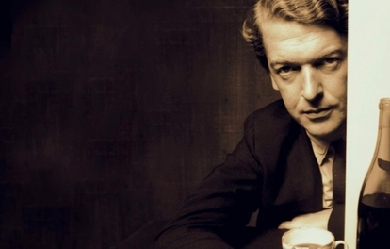
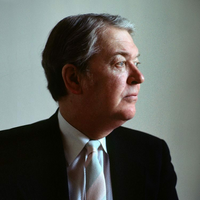
Sir Kingsley William Amis, CBE (16 April 1922– 22 October 1995) was an English novelist, poet, critic, and teacher. He wrote more than 20 novels, six volumes of poetry, a memoir, various short stories, radio and television scripts, along with works of social and literary criticism. According to his biographer, Zachary Leader, Amis was “the finest English comic novelist of the second half of the twentieth century.” He is the father of British novelist Martin Amis. In 2008, The Times ranked Kingsley Amis thirteenth on their list of the 50 greatest British writers since 1945. Life and career Kingsley Amis was born in Clapham, south London, the son of William Robert Amis, a mustard manufacturer’s clerk in the City of London and his wife, Rosa Annie (née Lucas). He was raised in Norbury– in his later estimation "not really a place, it’s an expression on a map [-] really I should say I came from Norbury station". He was educated at the City of London School on a scholarship, after his first year, and in April 1941 was admitted to St. John’s College, Oxford, also on a scholarship, where he read English. It was there that he met Philip Larkin, with whom he formed the most important friendship of his life. While at Oxford, in June 1941, Amis joined the Communist Party of Great Britain (but later broke with communism in 1956, after Soviet leader Nikita Khrushchev denounced former Soviet premier Joseph Stalin in his speech On the Cult of Personality and Its Consequences). After only a year, in July 1942, he was called up for national service. After serving in the Royal Corps of Signals in the Second World War, Amis returned to Oxford in October 1945 to complete his degree. Although he worked hard and earned in 1947 a first in English, he had by then decided to give much of his time to writing. In 1946 he met Hilary Bardwell; they married in 1948 after she became pregnant with their first child, Philip. Amis initially arranged for her to have a back-street abortion, but changed his mind, fearing for her safety. He became a lecturer in English at the University of Wales, Swansea (1949–1961). Two other children followed: Martin in August 1949 and Sally in January 1954. Days after Sally’s birth, Amis’s first novel Lucky Jim was published to great acclaim; critics saw it as having caught the flavour of Britain in the 1950s, ushering in a new style of fiction. By 1972, in addition to impressive sales in Britain, one and a quarter million paperback copies had been sold in the United States, and it was eventually translated into twenty languages, including Polish, Hebrew, Korean, and Serbo-Croat. The novel won the Somerset Maugham Award for fiction and Amis was associated with the writers labelled the Angry Young Men. Lucky Jim was one of the first British campus novels, setting a precedent for later generations of writers such as Malcolm Bradbury, David Lodge, Tom Sharpe and Howard Jacobson. As a poet, Amis was associated with The Movement. During 1958–1959 he made the first of two visits to the United States, where he was Visiting Fellow in Creative Writing at Princeton University and a visiting lecturer in other northeastern universities. On returning to Britain, he fell into a rut, and he began looking for another post; after thirteen years at Swansea, Amis became a fellow of Peterhouse, Cambridge (1961–1963). He regretted the move within a year, finding Cambridge an academic and social disappointment and resigned in 1963, intent on moving to Majorca; he went no farther than London. In 1963, Hilary discovered Amis’s love affair with novelist Elizabeth Jane Howard. Hilary and Amis separated in August, and he went to live with Howard. He divorced Hilary in 1965 and married Howard the same year. In 1968 he moved with Howard to Lemmons, a house in Barnet, north London. She and Amis divorced in 1983. In his last years, Amis shared a house with his first wife Hilary and her third husband, Alastair Boyd, 7th Baron Kilmarnock. Martin wrote the memoir Experience about the life, charm, and decline of his father. Amis was knighted in 1990. In August 1995 he fell, suffering a suspected stroke. After apparently recovering, he worsened, was re-admitted to hospital, and died on 22 October 1995 at St Pancras Hospital, London. He was cremated; his ashes are at Golders Green Crematorium. Literary work Amis is chiefly known as a comedic novelist of mid– to late-20th-century British life, but his literary work extended into many genres—poetry, essays and criticism, short stories, food and drink writing, anthologies, and a number of novels in genres such as science fiction and mystery. His career initially developed in a pattern which was the inverse of that followed by his close friend Philip Larkin. Before becoming known as a poet, Larkin had published two novels; Amis, on the other hand, originally wished to be a poet, and turned to writing novels only after publishing several volumes of verse. He continued throughout his career to write poetry which is known for its typically straightforward and accessible style, yet which often masks a nuance of thought, for example, in “Bookshop Idyll” or “Against Romanticism”, just as it does in his novels. Amis’s first novel, Lucky Jim (1954), is perhaps his most famous, satirizing the high-brow academic set of an unnamed university, seen through the eyes of its protagonist, Jim Dixon, as he tries to make his way as a young lecturer of history. The novel was perceived by many as part of the Angry Young Men movement of the 1950s which reacted against the stultification of conventional British life, though Amis never encouraged this interpretation. Amis’s other novels of the 1950s and early 1960s similarly depict situations from contemporary British life, often drawn from Amis’s own experiences. That Uncertain Feeling (1955) centres on a young provincial librarian (again perhaps with reference to Larkin, librarian at Hull) and his temptation towards adultery; I Like It Here (1958) presents Amis’s contemptuous view of “abroad” and followed upon his own travels on the Continent with a young family; Take a Girl Like You (1960) steps away from the immediately autobiographical, but remains grounded in the concerns of sex and love in ordinary modern life, tracing the courtship and ultimate seduction of the heroine Jenny Bunn by a young schoolmaster, Patrick Standish. With The Anti-Death League (1966), Amis begins to show some of the experimentation– with content, if not with style– which would mark much of his work in the 1960s and 70s. Amis’s departure from the strict realism of his early comedic novels is not so abrupt as might first appear. He had avidly read science fiction since a boy, and had developed that interest into the Christian Gauss Lectures of 1958, while visiting Princeton University. The lectures were published in that year as New Maps of Hell: A Survey of Science Fiction, a serious but light-handed treatment of what the genre had to say about man and society. Amis was particularly enthusiastic about the dystopian works of Frederik Pohl and C. M. Kornbluth, and in New Maps of Hell coined the term “comic inferno” to describe a type of humorous dystopia, particularly as exemplified in the works of Robert Sheckley. Amis further displayed his devotion to the genre in editing, with the Sovietologist Robert Conquest, the science fiction anthology series Spectrum I–V, which drew heavily upon 1950s numbers of the magazine Astounding Science Fiction. Though not explicitly science fiction, The Anti-Death League takes liberties with reality not found in Amis’s earlier novels, and introduces a speculative bent into his fiction, one which would continue to develop in other of his genre novels, such as The Green Man (1969) (mystery/horror) and The Alteration (1976) (alternative history). Much of this speculation was about the improbable existence of any benevolent deity involved in human affairs. In The Anti-Death League, The Green Man, The Alteration and elsewhere, including poems such as “The Huge Artifice: an interim assessment” and “New Approach Needed”, Amis showed frustration with a God who could lace the world with such cruelty and injustice, and championed the preservation of ordinary human happiness– in family, in friendships, in physical pleasure– against the demands of any cosmological scheme. The matter of Amis’s religious views is perhaps ultimately summed up in his response, reported in his Memoirs, to the Russian poet Yevgeny Yevtushenko’s question, in his broken English: “You atheist?” Amis replied, “It’s more that I hate Him.” During this time, Amis had not turned completely away from the comedic realism of Lucky Jim and Take a Girl Like You. I Want It Now (1968) and Girl, 20 (1971) both depict the “swinging” atmosphere of London in the late '60s, in which Amis certainly participated, though neither book is strictly autobiographical. Girl, 20, for instance, is framed in the world of classical (and pop) music, of which Amis was not a part—the book’s relatively impressive command of musical terminology and opinion shows both Amis’s amateur devotion to music and the almost journalistic capacity of his intelligence to take hold of a subject which interested him. That intelligence is similarly on display in, for instance, the presentation of ecclesiastical matters in The Alteration, when Amis was neither a Roman Catholic nor, for that matter, a devotee of any Church. Throughout the 1950s, '60s, and '70s, Amis was regularly producing essays and criticism, principally for journalistic publication. Some of these pieces were collected in 1968's What Became of Jane Austen? and Other Essays, in which Amis’s wit and literary and social opinions were on display ranging over books such as Colin Wilson’s The Outsider (panned), Iris Murdoch’s debut novel Under the Net (praised), or William Empson’s Milton’s God (inclined to agree with). Amis’s opinions on books and people tended to appear (and often, be) conservative, and yet, as the title essay of the collection shows, he was not merely reverent of “the classics” and of traditional morals, but was more disposed to exercise his own rather independent judgment in all things. Amis became associated with Ian Fleming’s James Bond novels, which he greatly admired, in the late 1960s, when he began composing critical works connected with the fictional spy, either under a pseudonym or uncredited. In 1965, he wrote the popular The James Bond Dossier under his own name. That same year, he wrote The Book of Bond, or, Every Man His Own 007, a tongue-in-cheek how-to manual about being a sophisticated spy, under the pseudonym “Lt Col. William ('Bill’) Tanner”, Tanner being M’s Chief of Staff in many of Fleming’s Bond novels. In 1968 Amis wrote Colonel Sun, which was published under the pseudonym “Robert Markham”. Amis’s literary style and tone changed significantly after 1970, with the possible exception of The Old Devils, a Booker Prize winner. Several critics accused him of being old fashioned and misogynistic. His Stanley and the Women, an exploration of social sanity, could be said to instance these traits. Others said that his output lacked the humanity, wit, and compassion of earlier efforts. This period also saw Amis the anthologist, a role in which his wide knowledge of all kinds of English poetry was on display. The New Oxford Book of Light Verse (1978), which he edited, was a revision of the original volume done by W. H. Auden. Amis took the anthology in a markedly new direction: Auden had interpreted light verse to include “low” verse of working-class or lower-class origin, regardless of subject matter, while Amis defined light verse as essentially light in tone, though not necessarily simple in composition. The Amis Anthology (1988), a personal selection of his favourite poems, grew out of his work for a London newspaper, in which he selected a poem daily and presented it with a brief introduction. Amis was shortlisted for the Booker Prize three times in his writing career for Ending Up (1974), Jake’s Thing (1978), and finally winning the prize for The Old Devils in 1986. In 2008, The Times ranked Kingsley Amis thirteenth on their list of the 50 greatest British writers since 1945. Personal life and political views As a young man at Oxford, Amis briefly joined the Communist Party. He left in 1956. He later described this stage of his political life as “the callow Marxist phase that seemed almost compulsory in Oxford”. Amis remained nominally on the Left for some time after the war, declaring in the 1950s that he would always vote for the Labour Party. But he eventually moved further right, a development he discussed in the essay “Why Lucky Jim Turned Right” (1967); his conservatism and anti-communism can be seen in such later works of his as the dystopian novel Russian Hide and Seek (1980). In 1967, Amis, Robert Conquest, John Braine and several other right-wing authors signed a controversial letter to The Times entitled “Backing for U.S. Policies in Vietnam”, supporting the US government in the Vietnam War. He spoke at the Adam Smith Institute, arguing against government subsidy to the arts. Amis was by his own admission and as revealed by his biographers a serial adulterer for much of his life. This was one of the main contributory factors in the breakdown of his first marriage. A famous photograph of a sleeping Amis on a Yugoslav beach shows the slogan (written by wife Hilly) on his back "1 Fat Englishman– I fuck anything". In one of his memoirs, Amis wrote: “Now and then I become conscious of having the reputation of being one of the great drinkers, if not one of the great drunks, of our time”. He suggests that this is the result of a naïve tendency on the part of his readers to apply the behaviour of his characters to himself. This was disingenuous; the fact was that he enjoyed drink, and spent a good deal of his time in pubs. Hilary Rubinstein, who accepted Lucky Jim for publication at Victor Gollancz, commented: “I doubted whether Jim Dixon would have gone to the pub and drunk ten pints of beer... I didn’t know Kingsley very well, you see.” Clive James comments: “All on his own, he had the weekly drinks bill of a whole table at the Garrick Club even before he was elected. After he was, he would get so tight there that he could barely make it to the taxi.” Amis was, however, adamant in his belief that inspiration did not come from a bottle: “Whatever part drink may play in the writer’s life, it must play none in his or her work.” That this was certainly the case is attested to by Amis’s highly disciplined approach to writing. For 'many years’, Amis imposed a rigorous daily schedule upon himself in which writing and drinking were strictly segregated. Mornings were devoted to writing with a minimum daily output of 500 words. The drinking would only begin around lunchtime when this output had been achieved. Amis’s prodigious output would not have been possible without this kind of self-discipline. Nevertheless, according to Clive James, Amis reached a turning point when his drinking ceased to be social, and became a way of dulling his remorse and regret at his behaviour toward Hilly. “Amis had turned against himself deliberately... it seems fair to guess that the troubled grandee came to disapprove of his own conduct.” His friend Christopher Hitchens said: “The booze got to him in the end, and robbed him of his wit and charm as well as of his health.” Amis had a somewhat complex relationship with anti-Semitism, which he sometimes expressed but also disliked and opposed. He occasionally speculated on the historically received, and commonly accepted, stereotypes attributed to Jewish character. Anti-semitism was sometimes present in his conversations and letters written to friends and associates: “The great Jewish vice is glibness, fluency... also possibly just bullshit, as in Marx, Freud, Marcuse.” Or, “Chaplin is a horse’s arse. He’s a Jeeeew you see, like the Marx Brothers, like Danny Kaye.” It is a minor theme in his novel about a paranoid schizophrenic, Stanley and the Women. As for the cultural complexion of America, Amis had this to say: “I’ve finally worked out why I don’t like Americans... Because everyone there is either a Jew or a hick.” Amis himself described his anti-Semitism as being “Very mild ...” Family Amis’s first marriage, of fifteen years, was to Hilary Bardwell, daughter of a civil servant, by whom he had two sons and one daughter: Philip Amis, a graphics designer; Martin Amis, a novelist; and Sally Amis, who died in 2000. Amis was married a second time, to the novelist Elizabeth Jane Howard from 1965 to 1983, with whom he had no children. At the end of his second marriage, he went to live with his ex-wife Hilary and her third husband, in a deal brokered by their two sons Philip and Martin, so that he could be cared for until his death. Partial bibliography Poetry * 1947 Bright November * 1953 A Frame of Mind * 1954 Poems: Fantasy Portraits * 1956 A Case of Samples: Poems 1946–1956 * 1962 The Evans County * 1968 A Look Round the Estate: Poems, 1957–1967 * 1979 Collected Poems 1944–78 Fiction Novels * c.1948 The Legacy (unpublished) * 1954 Lucky Jim * 1955 That Uncertain Feeling * 1958 I Like It Here * 1960 Take a Girl Like You * 1963 One Fat Englishman * 1965 The Egyptologists (with Robert Conquest) * 1966 The Anti-Death League * 1968 Colonel Sun: a James Bond Adventure (pseud. Robert Markham) * 1968 I Want It Now * 1969 The Green Man * 1971 Girl, 20 * 1973 The Riverside Villas Murder * 1974 Ending Up * 1975 The Crime of the Century * 1976 The Alteration * 1978 Jake’s Thing * 1980 Russian Hide-and-Seek * 1984 Stanley and the Women * 1986 The Old Devils * 1988 Difficulties with Girls * 1990 The Folks That Live on the Hill * 1991 We Are All Guilty * 1992 The Russian Girl * 1994 You Can’t Do Both * 1995 The Biographer’s Moustache * c.1995 Black and White (unfinished) Short fiction collections * 1962 My Enemy’s Enemy * 1980 Collected Short Stories * 1991 Mr Barrett’s Secret and Other Stories Other short fiction 1960 “Hemingway in Space” (short story), Punch December 1960 Non-fiction * 1957 Socialism and the Intellectuals, a Fabian Society pamphlet * 1960 New Maps of Hell: A Survey of Science Fiction * 1965 The James Bond Dossier * 1965 The Book of Bond, or Every Man His Own 007 (pseud. Lt.-Col William ('Bill’) Tanner) * 1970 What Became of Jane Austen?, and Other Questions * 1972 On Drink * 1974 Rudyard Kipling and His World * 1983 Everyday Drinking * 1984 How’s Your Glass? * 1990 The Amis Collection * 1991 Memoirs * 1997 The King’s English: A Guide to Modern Usage (name in part a pun as he was sometimes called “Kingers” or “The King” by friends and family, as told by his son Martin in his memoir Experience) * 2001 The Letters of Kingsley Amis, Edited by Zachary Leader * 2008 Everyday Drinking: The Distilled Kingsley Amis, Introduction by Christopher Hitchens (an omnibus edition of On Drink, Everyday Drinking and How’s Your Glass?) Editor * 1967 Spectrum V: a fifth science fiction anthology (ed. with Robert Conquest) * 1978 The New Oxford Book of Light Verse (ed.) Poets in The Amis Anthology: A Personal Choice of English Verse (1988) Richard Aldington– Kenneth Allott– Matthew Arnold– Kenneth Ashley– W. H. Auden– William Barnes– Oliver Bayley– Hilaire Belloc– John Betjeman– Laurence Binyon– William Blake– Edmund Blunden– Rupert Brooke– Robert Browning– Robert Burns– Thomas Campbell– Thomas Campion– G. K. Chesterton– Hartley Coleridge– Robert Conquest– W. J. Cory– John Davidson– Donald Davie– C. Day Lewis– Walter de la Mare– Ernest Dowson– Michael Drayton– Lawrence Durrell– Jean Elliot– George Farewell– James Elroy Flecker– Thomas Ford– Roy Fuller– Robert Graves– Thomas Gray– Fulke Greville– Heath– Reginald Heber– Felicia Dorothea Hemans– W. E. Henley– George Herbert– Ralph Hodgson– Thomas Hood– Teresa Hooley– Gerard Manley Hopkins– A. E. Housman– Henry Howard, Earl of Surrey– T. E. Hulme– Leigh Hunt– Elizabeth Jennings– Samuel Johnson– John Keats– Henry King– Charles Kingsley– Rudyard Kipling– Philip Larkin– Henry Wadsworth Longfellow– John Lydgate– H. F. Lyte– Louis MacNeice– Andrew Marvell– John Masefield– Alice Meynell– Harold Monro– William Morris– Edwin Muir– Henry Newbolt– Alfred Noyes– Wilfred Owen– Thomas Love Peacock– George Peele– Alexander Pope– Frederic Prokosch– Walter Ralegh– John Crowe Ransom– Christina Rossetti– Siegfried Sassoon– John Skelton– Robert Southey– Edmund Spenser– Sir John Squire– Robert Louis Stevenson– John Suckling– Algernon Charles Swinburne– George Szirtes– Alfred, Lord Tennyson– Dylan Thomas– Edward Thomas– R. S. Thomas– Francis Thompson– Anthony Thwaite– Chidiock Tichborne– Aurelian Townsend– W. J. Turner– Oscar Wilde– John Wilmot, Lord Rochester– Roger Woddis– Charles Wolfe– William Wordsworth– William Butler Yeats– Andrew Young References Wikipedia—https://en.wikipedia.org/wiki/Kingsley_Amis
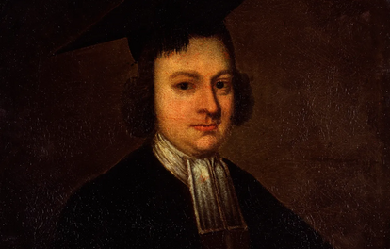
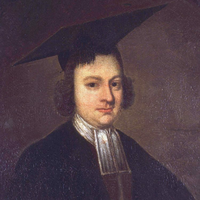
Christopher Smart (11 April 1722– 21 May 1771), also known as “Kit Smart”, “Kitty Smart”, and “Jack Smart”, was an English poet. He was a major contributor to two popular magazines and a friend to influential cultural icons like Samuel Johnson and Henry Fielding. Smart, a high church Anglican, was widely known throughout London.

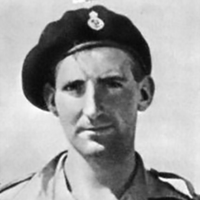
Keith Castellain Douglas (24 January 1920– 9 June 1944) was an English poet noted for his war poetry during the Second World War and his wry memoir of the Western Desert campaign, Alamein to Zem Zem. He was killed in action during the invasion of Normandy. Poetry Douglas described his poetic style as “extrospective”; that is, he focused on external impressions rather than inner emotions. The result is a poetry which, according to his detractors, can be callous in the midst of war’s atrocities. For others, Douglas’s work is powerful and unsettling because its exact descriptions eschew egotism and shift the burden of emotion from the poet to the reader. His best poetry is generally considered to rank alongside the 20th century’s finest soldier-poetry. In his poem, “Desert Flowers” (1943), Douglas mentions World War I poet Isaac Rosenberg, claiming that he is only repeating what Rosenberg has already written. Early life Douglas was born in Tunbridge Wells, Kent, the son of Capt. Keith Sholto Douglas, MC (retired) and Marie Josephine Castellain. His mother became unwell and collapsed in 1924 of encephalitis lethargica, never to fully recover. By 1926, the chicken farm set up by his father had collapsed. Douglas was sent to a preparatory school (Edgeborough School in Guildford) the same year. The family became increasingly poor, and his father had to leave home in early 1928 to seek better employment in Wales. The persistent ill-health of Marie led to the collapse of the marriage of his parents by the end of that year, and his father remarried in 1930. Douglas was deeply hurt by his father not communicating with him after 1928, and when Capt. Douglas did write at last in 1938, Keith did not agree to meet him. In one of his letters written in 1940 Douglas looked back on his childhood: “I lived alone during the most fluid and formative years of my life, and during that time I lived on my imagination, which was so powerful as to persuade me that the things I imagined would come true.” Education Marie Douglas faced extreme financial distress, so much so that only the generosity of the Edgeborough headmaster Mr. James permitted Douglas to attend school in 1930–1931, his last year there. Douglas sat in 1931 for the entrance examination to Christ’s Hospital, where education was free and there was monetary assistance to cover all other costs. He was accepted, and joined Christ’s Hospital, near Horsham, in September 1931, studying there till 1938. It was at this school that his considerable poetic talent and artistic ability were recognised. So was his cavalier attitude to authority and property, which nearly led to expulsion in 1935 over a purloined training rifle. In surprising contrast, he excelled as a member of the school’s Officers Training Corps, particularly enjoying drill, although he was philosophically opposed to militarism. University After his bruising brush with authority in 1935, Douglas settled down to a less troubled and more productive period at school, during which he excelled both at studies and games, and at the end of which he won an open exhibition to Merton College, Oxford in 1938 to read History and English. The First World War-veteran and well-known poet Edmund Blunden was his tutor at Merton, and regarded his poetic talent highly. Blunden sent his poems to T. S. Eliot, the doyen of English poetry, who found Douglas’s verses 'impressive’. Douglas became the editor of Cherwell, and one of the poets anthologised in the collection Eight Oxford Poets (1941), although by the time that volume appeared he was already in the army. He does not seem to have been acquainted with somewhat junior but contemporary Oxford poets such as Sidney Keyes, Drummond Allison, John Heath-Stubbs and Philip Larkin, who would make names for themselves. At Oxford, Douglas entered a relationship with a sophisticated Chinese student named Yingcheng, or Betty Sze, the daughter of a diplomat. Her own sentiments towards him were less intense, and she refused to marry him. Yingcheng remained the unrequited love of Douglas’s life and the source of his best romantic verse, despite his involvements with other women later, most notably Milena Guiterrez Penya. Military service Within days of the declaration of war he reported to an army recruiting centre with the intention of joining a cavalry regiment, but like many others keen to serve he had to wait, and it was not until July 1940 that he started his training. On 1 February 1941 he passed out from the Royal Military College, Sandhurst, the British Army training academy for officers, and was commissioned into the 2nd Derbyshire Yeomanry at Ripon. He was posted to the Middle East in July 1941 and transferred to the Nottinghamshire (Sherwood Rangers) Yeomanry. Posted initially at Cairo and Palestine, he found himself stuck at Headquarters twenty miles behind El Alamein as a camouflage officer as the Second Battle of El Alamein began. At dawn on 24 October 1942, the Regiment advanced, and suffered numerous casualties from enemy anti-tank guns. Chafing at inactivity, Douglas took off against orders on 27 October, drove to the Regimental HQ in a truck, and reported to the C.O., Colonel E. O. Kellett, lying that he had been instructed to go to the front (luckily this escapade did not land him in serious trouble; in a reprise of 1935, Douglas got off with an apology). Desperately needing officer replacements, the Colonel posted him to A Squadron, and gave him the opportunity to take part as a fighting tanker in the Eighth Army’s victorious sweep through North Africa vividly recounted in his memoir Alamein to Zem Zem, illustrated with his own drawings. Death Captain Douglas returned from North Africa to England in December 1943 and took part in the D-Day invasion of Normandy on 6 June 1944. He was killed by enemy mortar fire on 9 June, while his regiment was advancing from Bayeux. Captain Leslie Skinner (regimental chaplain) buried him by a hedge, close to where he had died on "forward slopes point 102". Shortly after the war his remains were reburied at Tilly-sur-Seulles War Cemetery (14 km south of Bayeux) in plot 1, row E, grave number 2. Bibliography * Selected Poems (Keith Douglas, J.C. Hall, Norman Nicholson) (1943) * Alamein to Zem Zem (1946), reprinted 1966 * Collected Poems (Editions Poetry London 1951), reprinted 1966 * Selected Poems (Faber 1964) * The Complete Poems (Faber & Faber 1978), reprinted in 1987, 1997, 2011 * Alldritt, Keith. Modernism in the Second World War ISBN 0-8204-0865-4 * The Letters of Keith Douglas edited by Desmond Graham (Carcanet Press, 2000) ISBN 978 1 857544 77 0 Biography * Keith Douglas, 1920–1944 by Desmond Graham (OUP, 1974) ISBN 0-19-211716-5 References Wikipedia—https://en.wikipedia.org/wiki/Keith_Douglas
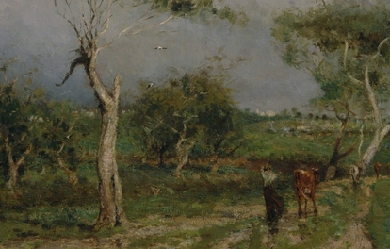
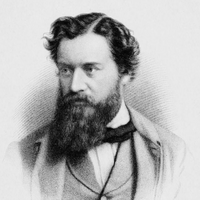
Charles Stuart Calverley (/ˈkɑːvərlɪ/; 22 December 1831– 17 February 1884) was an English poet and wit. He was the literary father of what has been called “the university school of humour”. Early life He was born at Martley, Worcestershire, and given the name Charles Stuart Blayds. In 1852, his father, the Rev. Henry Blayds, resumed the old family name of Calverley, which his grandfather had exchanged for Blayds in 1807. Charles went up to Balliol College, Oxford from Harrow School in 1850, and was soon known in Oxford as the most daring and high-spirited undergraduate of his time. He was a universal favourite, a delightful companion, a brilliant scholar and the playful enemy of all “dons.” In 1851 he won the Chancellor’s prize for Latin verse, but it is said that the entire exercise was written in an afternoon, when his friends had locked him into his rooms, refusing to let him out until he had finished what they were confident would prove the prize poem. A year later, to avoid the consequences of a college escapade (he had been expelled from Oxford), he too changed his name to Calverley and moved to Christ’s College, Cambridge. Here he was again successful in Latin verse, the only undergraduate to have won the Chancellor’s prize at both universities. In 1856 he took second place in the first class in the Classical Tripos. Later life He was elected fellow of Christ’s (1858), published Verses and Translations in 1862, and was called to the bar in 1865. Injuries sustained in a skating accident prevented him from following a professional career, and during the last years of his life he was an invalid. He died of Bright’s disease. Works * Nowadays he is best-known (at least in Cambridge, his adoptive home) as the author of the Ode to Tobacco which is to be found on a bronze plaque in Rose crescent, on the wall of what used to be Bacon’s the tobacconist. * His Translations into English and Latin appeared in 1866; his Theocritus translated into English Verse in 1869; Fly Leaves in 1872; and Literary Remains in 1885. * His Complete Works, with a biographical notice by Walter Joseph Sendall, a contemporary at Christ’s and his brother-in-law, appeared in 1901. * George W. E. Russell said of him: * He was a true poet; he was one of the most graceful scholars that Cambridge ever produced; and all his exuberant fun was based on a broad and strong foundation of Greek, Latin, and English literature. References Wikipedia—https://en.wikipedia.org/wiki/Charles_Stuart_Calverley
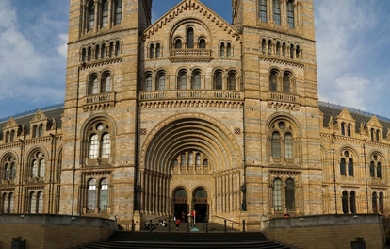
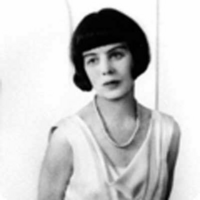
Elizabeth Daryush (8 December 1887 – 7 April 1977) was an English poet. Life Daryush was the daughter of Robert Bridges; her maternal grandfather was Alfred Waterhouse. She married Ali Akbar Daryush, whom she had met when he was studying at the University of Oxford, and thereafter spent some time in Persia; most of her life was spent in Boars Hill, outside Oxford, where the Elizabeth Daryush Memorial Garden is named for her. Writings Poetry Daryush, daughter of English poet laureate Robert Bridges (some of her early work was published as 'Elizabeth Bridges’), followed her father’s lead not only in choosing poetry as her life’s work but also in the traditional style of poetry she chose to write. The themes of her work are often critical of the upper classes and the social injustice their privilege levied upon others. This characteristic was not present in her early work, including her first two books of poems, published under the name Elizabeth Bridges, which appeared while she was still in her twenties. According to John Finlay, writing in the Dictionary of Literary Biography, Daryush’s “early poetry is preoccupied with rather conventional subject matter and owes a great deal to the Edwardians.” Syllabic style Daryush took her father’s experiment in syllabic verse a step farther by making it less experimental; whereas Bridges’ syllable count excluded elidable syllables, producing some variation in the total number of pronounced syllables per line, Daryush’s was strictly aural, counting all syllables actually sounded when the poem was read aloud. It is for her successful experiments with syllabic meter that Daryush is best known to contemporary readers, as exampled in her poem Accentedal in the quaternion form. Yvor Winters, the poet and critic, considered Daryush more successful in writing syllabics than was her father, noting that her poem Still-Life was her finest syllabic experiment, and also a companion-piece to Children of Wealth. Winters considered the social context of Still Life, which is nowhere mentioned, yet from which the poem draws its power. Characteristics Beyond its social content, Daryush’s work is also recognized for a consistent and well-defined personal vision. As Finlay noted, "For her. . .poetry always dealt with the `stubborn fact’ of life as it is, and the only consolations it offered were those of understanding and a kind of half-Christian, half-stoical acceptance of the inevitable." However, he also argued that Daryush’s best poems transcend such fatalism, “dealing with the moral resources found in one’s own being. . .and a recognition of the beauties in the immediate, ordinary world around us.” In many of her terse short poems, there is formal and intellectual mastery; her last, longest and most amibitious poem, ‘Air and Variations,’ was a formal tribute to Gerard Manly Hopkins Daryush has been described as a pioneer technical innovator, a poet of the highest dedication and seriousness whose poetry grapples with life’s intensest issues.
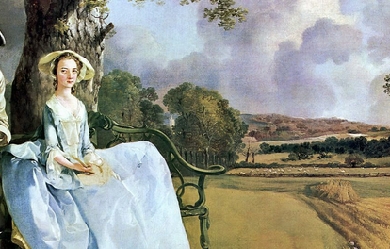
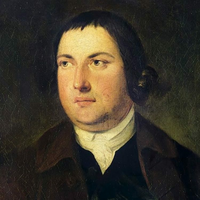
Charles Churchill (February, 1732– 4 November 1764), was an English poet and satirist. Early life Churchill was born in Vine Street, Westminster. His father, rector of Rainham, Essex, held the curacy and lectureship of St Johns, Westminster, from 1733, and Charles was educated at Westminster School, where he became a good classical scholar, and formed a close and lasting friendship with Robert Lloyd. He was admitted to St John’s College, Cambridge on 8 July 1748. Churchill contracted a marriage within the rules of the Fleet in his eighteenth year, and never lived at Cambridge; the young couple lived in his father’s house, and Churchill was afterwards sent to the north of England to prepare for holy orders. He became curate of South Cadbury, Somerset, and, on receiving priest’s orders (1756), began to act as his father’s curate at Rainham. Two years later the elder Churchill died, and the son was elected to succeed him in his curacy and lectureship. His emoluments amounted to less than £100 a year, and he increased his income by teaching in a girls’ school. His marriage proved unhappy, and he began to spend much of his time in dissipation in the society of Robert Lloyd. He was separated from his wife in 1761, and would have been imprisoned for debt but for the timely help of Lloyd’s father, who had been an usher and was now a master at Westminster. Career as Satirist Churchill had already done some work for the booksellers, and his friend Lloyd had had some success with a didactic poem, The Actor. Churchill’s knowledge of the theatre was now made use of in the Rosciad, which appeared in March 1761. This reckless and amusing satire described with the most disconcerting accuracy the faults of the various actors and actresses on the London stage; in a competition judged by Shakespeare and Jonson, Garrick is named the greatest English actor. Its immediate popularity was no doubt largely due to its personal character, but its vigour and raciness make it worth reading even now when the objects of Churchill’s wit are forgotten. The first impression was published anonymously, and in the Critical Review, conducted by Tobias Smollett, it was confidently asserted that the poem was the joint production of George Colman the Elder, Bonnell Thornton and Robert Lloyd. Churchill immediately published an Apology addressed to the Critical Reviewers, which, after developing the subject that it is only authors who prey on their own kind, repeats the fierce attack on the stage. Incidentally it contains an enthusiastic tribute to John Dryden, of whom Churchill was a devotee. In the Rosciad he had praised Mrs Pritchard, Mrs Cibber and Mrs Clive, but no leading London actor, with the exception of David Garrick, had escaped censure, and in the Apology Garrick was clearly threatened. He deprecated criticism by showing every possible civility to Churchill, who became a terror to the actors. Thomas Davies wrote to Garrick attributing his blundering in the part of Cymbeline “to my accidentally seeing Mr Churchill in the pit, it rendering me confused and unmindful of my business.” Churchill’s satire made him many enemies, and brought reprisals. In Night, an Epistle to Robert Lloyd (1761), he answered the attacks made on him, offering by way of defense the argument that any faults were better than hypocrisy. His scandalous conduct brought down the censure of the dean of Westminster, and in 1763 the protests of his parishioners led him to resign his offices, and he was free to wear his blue coat with metal buttons and much gold lace without remonstrance from the dean. The Rosciad had been refused by several publishers, and was finally published at Churchill’s own expense. He received a considerable sum from the sale, and paid his old creditors in full, besides making an allowance to his wife. Friendship with Wilkes He now became a close ally of John Wilkes, whom he regularly assisted with The North Briton weekly newspaper. His next poem, The Prophecy of Famine: A Scots Pastoral (1763), was founded on a paper written originally for that newspaper. This violent satire on Scottish influence fell in with the current hatred of Lord Bute, and the Scottish place-hunters were as much alarmed as the actors had been. When Wilkes was arrested he gave Churchill a timely hint to retire to the country for a time, the publisher, Kearsley, having stated that he received part of the profits from the paper. His Epistle to William Hogarth (1763) was in answer to the caricature of Wilkes made during the trial, in it Hogarth’s vanity and envy were attacked in an invective which Garrick quoted as shocking and barbarous. Hogarth retaliated by a caricature of Churchill as a bear in torn clerical bands hugging a pot of porter and a club made of lies and North Britons. The Duellist (1763) is a virulent satire on the most active opponents of Wilkes in the House of Lords, especially on Bishop Warburton. He attacked Dr Johnson among others in The Ghost as “Pomposo, insolent and loud, Vain idol of a scribbling crowd”. Other poems are The Conference (1763); The Author (1763), highly praised by Churchill’s contemporaries; Gotham (1764), a poem on the duties of a king, didactic rather than satiric in tone; The Candidate (1764), a satire on John Montagu, fourth earl of Sandwich, one of Wilkes’s bitterest enemies, whom he had already denounced for his treachery in The Duellist (Bk. iii.) as too infamous to have a friend; The Farewell (1764); The Times (1764); Independence, and an unfinished Journey. Death and Legacy In October 1764 he went to Boulogne to join Wilkes. There he was attacked by a fever of which he died on 4 November. He left his property to his two sons, and made Wilkes his literary executor with full powers. Wilkes did little. He wrote an epitaph for his friend and about half a dozen notes on his poems, and Andrew Kippis acknowledges some slight assistance from him in preparing his life of Churchill for the Biographia (1780). There is more than one instance of Churchill’s generosity to his friends. In 1763 he found his friend Robert Lloyd in prison for debt. He paid a guinea a week for his better maintenance in the Fleet, and raised a subscription to set him free. Lloyd fell ill on receipt of the news of Churchill’s death, and died shortly afterwards. Churchill’s sister Patty, who was engaged to Lloyd, did not long survive them. William Cowper was his schoolfellow, and left many kindly references to him. A partial collection of Churchill’s poems appeared in 1763. References Wikipedia—https://en.wikipedia.org/wiki/Charles_Churchill_(satirist)
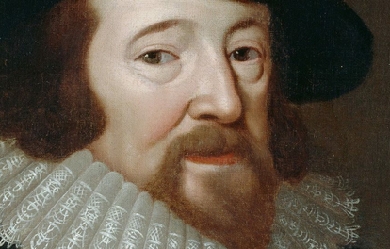
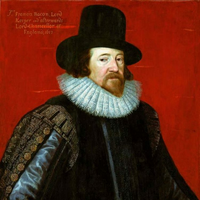
Francis Bacon, 1st Viscount St Alban, PC KC (/ˈbeɪkən/; 22 January 1561– 9 April 1626) was an English philosopher, statesman, scientist, jurist, orator, and author. He served both as Attorney General and as Lord Chancellor of England. After his death, he remained extremely influential through his works, especially as philosophical advocate and practitioner of the scientific method during the scientific revolution. Bacon has been called the father of empiricism. His works argued for the possibility of scientific knowledge based only upon inductive and careful observation of events in nature. Most importantly, he argued this could be achieved by use of a skeptical and methodical approach whereby scientists aim to avoid misleading themselves. While his own practical ideas about such a method, the Baconian method, did not have a long lasting influence, the general idea of the importance and possibility of a skeptical methodology makes Bacon the father of scientific method. This marked a new turn in the rhetorical and theoretical framework for science, the practical details of which are still central in debates about science and methodology today. Bacon was generally neglected at court by Queen Elizabeth, but after the accession of King James I in 1603, Bacon was knighted. He was later created Baron Verulam in 1618 and Viscount St. Alban in 1621. Because he had no heirs, both titles became extinct upon his death in 1626, at 65 years of age. Bacon died of pneumonia, with one account by John Aubrey stating that he had contracted the condition while studying the effects of freezing on the preservation of meat. Biography Early life Francis Bacon was born on 22 January 1561 at York House near the Strand in London, the son of Sir Nicholas Bacon by his second wife, Anne (Cooke) Bacon, the daughter of the noted humanist Anthony Cooke. His mother’s sister was married to William Cecil, 1st Baron Burghley, making Burghley Bacon’s uncle. Biographers believe that Bacon was educated at home in his early years owing to poor health, which would plague him throughout his life. He received tuition from John Walsall, a graduate of Oxford with a strong leaning toward Puritanism. He entered Trinity College, Cambridge, on 5 April 1573 at the age of 12, living for three years there, together with his older brother Anthony Bacon under the personal tutelage of Dr John Whitgift, future Archbishop of Canterbury. Bacon’s education was conducted largely in Latin and followed the medieval curriculum. He was also educated at the University of Poitiers. It was at Cambridge that he first met Queen Elizabeth, who was impressed by his precocious intellect, and was accustomed to calling him “The young lord keeper”. His studies brought him to the belief that the methods and results of science as then practised were erroneous. His reverence for Aristotle conflicted with his rejection of Aristotelian philosophy, which seemed to him barren, disputatious and wrong in its objectives. On 27 June 1576, he and Anthony entered de societate magistrorum at Gray’s Inn. A few months later, Francis went abroad with Sir Amias Paulet, the English ambassador at Paris, while Anthony continued his studies at home. The state of government and society in France under Henry III afforded him valuable political instruction. For the next three years he visited Blois, Poitiers, Tours, Italy, and Spain. During his travels, Bacon studied language, statecraft, and civil law while performing routine diplomatic tasks. On at least one occasion he delivered diplomatic letters to England for Walsingham, Burghley, and Leicester, as well as for the queen. The sudden death of his father in February 1579 prompted Bacon to return to England. Sir Nicholas had laid up a considerable sum of money to purchase an estate for his youngest son, but he died before doing so, and Francis was left with only a fifth of that money. Having borrowed money, Bacon got into debt. To support himself, he took up his residence in law at Gray’s Inn in 1579, his income being supplemented by a grant from his mother Lady Anne of the manor of Marks near Romford in Essex, which generated a rent of £46. Parliamentarian Bacon stated that he had three goals: to uncover truth, to serve his country, and to serve his church. He sought to further these ends by seeking a prestigious post. In 1580, through his uncle, Lord Burghley, he applied for a post at court that might enable him to pursue a life of learning, but his application failed. For two years he worked quietly at Gray’s Inn, until he was admitted as an outer barrister in 1582. His parliamentary career began when he was elected MP for Bossiney, Cornwall, in a by-election (similar to a special election in the US) in 1581. In 1584 he took his seat in parliament for Melcombe in Dorset, and in 1586 for Taunton. At this time, he began to write on the condition of parties in the church, as well as on the topic of philosophical reform in the lost tract Temporis Partus Maximus. Yet he failed to gain a position that he thought would lead him to success. He showed signs of sympathy to Puritanism, attending the sermons of the Puritan chaplain of Gray’s Inn and accompanying his mother to the Temple Church to hear Walter Travers. This led to the publication of his earliest surviving tract, which criticised the English church’s suppression of the Puritan clergy. In the Parliament of 1586, he openly urged execution for the Catholic Mary, Queen of Scots. About this time, he again approached his powerful uncle for help; this move was followed by his rapid progress at the bar. He became a bencher in 1586 and was elected a Reader in 1587, delivering his first set of lectures in Lent the following year. In 1589, he received the valuable appointment of reversion to the Clerkship of the Star Chamber, although he did not formally take office until 1608; the post was worth £1,600 a year. In 1588 he became MP for Liverpool and then for Middlesex in 1593. He later sat three times for Ipswich (1597, 1601, 1604) and once for Cambridge University (1614). He became known as a liberal-minded reformer, eager to amend and simplify the law. Though a friend of the crown, he opposed feudal privileges and dictatorial powers. He spoke against religious persecution. He struck at the House of Lords in its usurpation of the Money Bills. He advocated for the union of England and Scotland, which made him a significant influence toward the consolidation of the United Kingdom; and he later would advocate for the integration of Ireland into the Union. Closer constitutional ties, he believed, would bring greater peace and strength to these countries. Attorney General Bacon soon became acquainted with Robert Devereux, 2nd Earl of Essex, Queen Elizabeth’s favourite. By 1591 he acted as the earl’s confidential adviser. In 1592 he was commissioned to write a tract in response to the Jesuit Robert Parson’s anti-government polemic, which he titled Certain observations made upon a libel, identifying England with the ideals of democratic Athens against the belligerence of Spain. Bacon took his third parliamentary seat for Middlesex when in February 1593 Elizabeth summoned Parliament to investigate a Roman Catholic plot against her. Bacon’s opposition to a bill that would levy triple subsidies in half the usual time offended the Queen: opponents accused him of seeking popularity, and for a time the Court excluded him from favour. When the office of Attorney General fell vacant in 1594, Lord Essex’s influence was not enough to secure the position for Bacon and it was given to Sir Edward Coke. Likewise, Bacon failed to secure the lesser office of Solicitor General in 1595, the Queen pointedly snubbing him by appointing Sir Thomas Fleming instead. To console him for these disappointments, Essex presented him with a property at Twickenham, which Bacon subsequently sold for £1,800. In 1596 Bacon became Queen’s Counsel, but missed the appointment of Master of the Rolls. During the next few years, his financial situation remained embarrassing. His friends could find no public office for him, and a scheme for retrieving his position by a marriage with the wealthy and young widow Lady Elizabeth Hatton failed after she broke off their relationship upon accepting marriage to Sir Edward Coke, a further spark of enmity between the men. In 1598 Bacon was arrested for debt. Afterward, however, his standing in the Queen’s eyes improved. Gradually, Bacon earned the standing of one of the learned counsels, though he had no commission or warrant, and received no salary. His relationship with the Queen further improved when he severed ties with Essex—a shrewd move, as Essex would be executed for treason in 1601. With others, Bacon was appointed to investigate the charges against Essex. A number of Essex’s followers confessed that Essex had planned a rebellion against the Queen. Bacon was subsequently a part of the legal team headed by the Attorney General Sir Edward Coke at Essex’s treason trial. After the execution, the Queen ordered Bacon to write the official government account of the trial, which was later published as A DECLARATION of the Practices and Treasons attempted and committed by Robert late Earle of Essex and his Complices, against her Majestie and her Kingdoms... after Bacon’s first draft was heavily edited by the Queen and her ministers. According to his personal secretary and chaplain, William Rawley, as a judge Bacon was always tender-hearted, “looking upon the examples with the eye of severity, but upon the person with the eye of pity and compassion”. And also that “he was free from malice”, “no revenger of injuries”, and “no defamer of any man”. James I comes to the throne The succession of James I brought Bacon into greater favour. He was knighted in 1603. In another shrewd move, Bacon wrote his Apologies in defence of his proceedings in the case of Essex, as Essex had favoured James to succeed to the throne. The following year, during the course of the uneventful first parliament session, Bacon married Alice Barnham. In June 1607 he was at last rewarded with the office of solicitor general. The following year, he began working as the Clerkship of the Star Chamber. Despite a generous income, old debts still could not be paid. He sought further promotion and wealth by supporting King James and his arbitrary policies. In 1610 the fourth session of James’s first parliament met. Despite Bacon’s advice to him, James and the Commons found themselves at odds over royal prerogatives and the king’s embarrassing extravagance. The House was finally dissolved in February 1611. Throughout this period Bacon managed to stay in the favour of the king while retaining the confidence of the Commons. In 1613 Bacon was finally appointed attorney general, after advising the king to shuffle judicial appointments. As attorney general, Bacon, by his zealous efforts—which included torture—to obtain the conviction of Edmund Peacham for treason, raised legal controversies of high constitutional importance; and successfully prosecuted Robert Carr, 1st Earl of Somerset, and his wife, Frances Howard, Countess of Somerset, for murder in 1616. The so-called Prince’s Parliament of April 1614 objected to Bacon’s presence in the seat for Cambridge and to the various royal plans that Bacon had supported. Although he was allowed to stay, parliament passed a law that forbade the attorney general to sit in parliament. His influence over the king had evidently inspired resentment or apprehension in many of his peers. Bacon, however, continued to receive the King’s favour, which led to his appointment in March 1617 as temporary Regent of England (for a period of a month), and in 1618 as Lord Chancellor. On 12 July 1618 the king created Bacon Baron Verulam, of Verulam, in the Peerage of England; he then became known as Francis, Lord Verulam. Bacon continued to use his influence with the king to mediate between the throne and Parliament, and in this capacity he was further elevated in the same peerage, as Viscount St Alban, on 27 January 1621. Lord Chancellor and public disgrace Bacon’s public career ended in disgrace in 1621. After he fell into debt, a parliamentary committee on the administration of the law charged him with 23 separate counts of corruption. His lifelong enemy, Sir Edward Coke, who had instigated these accusations, was one of those appointed to prepare the charges against the chancellor. To the lords, who sent a committee to enquire whether a confession was really his, he replied, “My lords, it is my act, my hand, and my heart; I beseech your lordships to be merciful to a broken reed.” He was sentenced to a fine of £40,000 and committed to the Tower of London at the king’s pleasure; the imprisonment lasted only a few days and the fine was remitted by the king. More seriously, parliament declared Bacon incapable of holding future office or sitting in parliament. He narrowly escaped undergoing degradation, which would have stripped him of his titles of nobility. Subsequently, the disgraced viscount devoted himself to study and writing. There seems little doubt that Bacon had accepted gifts from litigants, but this was an accepted custom of the time and not necessarily evidence of deeply corrupt behaviour. While acknowledging that his conduct had been lax, he countered that he had never allowed gifts to influence his judgement and, indeed, he had on occasion given a verdict against those who had paid him. He even had an interview with King James in which he assured: The law of nature teaches me to speak in my own defence: With respect to this charge of bribery I am as innocent as any man born on St. Innocents Day. I never had a bribe or reward in my eye or thought when pronouncing judgment or order... I am ready to make an oblation of myself to the King He also wrote the following to Buckingham: My mind is calm, for my fortune is not my felicity. I know I have clean hands and a clean heart, and I hope a clean house for friends or servants; but Job himself, or whoever was the justest judge, by such hunting for matters against him as hath been used against me, may for a time seem foul, especially in a time when greatness is the mark and accusation is the game. The true reason for his acknowledgement of guilt is the subject of debate, but some authors speculate that it may have been prompted by his sickness, or by a view that through his fame and the greatness of his office he would be spared harsh punishment. He may even have been blackmailed, with a threat to charge him with sodomy, into confession. The British jurist Basil Montagu wrote in Bacon’s defence, concerning the episode of his public disgrace: Bacon has been accused of servility, of dissimulation, of various base motives, and their filthy brood of base actions, all unworthy of his high birth, and incompatible with his great wisdom, and the estimation in which he was held by the noblest spirits of the age. It is true that there were men in his own time, and will be men in all times, who are better pleased to count spots in the sun than to rejoice in its glorious brightness. Such men have openly libelled him, like Dewes and Weldon, whose falsehoods were detected as soon as uttered, or have fastened upon certain ceremonious compliments and dedications, the fashion of his day, as a sample of his servility, passing over his noble letters to the Queen, his lofty contempt for the Lord Keeper Puckering, his open dealing with Sir Robert Cecil, and with others, who, powerful when he was nothing, might have blighted his opening fortunes for ever, forgetting his advocacy of the rights of the people in the face of the court, and the true and honest counsels, always given by him, in times of great difficulty, both to Elizabeth and her successor. When was a “base sycophant” loved and honoured by piety such as that of Herbert, Tennison, and Rawley, by noble spirits like Hobbes, Ben Jonson, and Selden, or followed to the grave, and beyond it, with devoted affection such as that of Sir Thomas Meautys. Personal life When he was 36, Bacon courted Elizabeth Hatton, a young widow of 20. Reportedly, she broke off their relationship upon accepting marriage to a wealthier man, Bacon’s rival, Edward Coke. Years later, Bacon still wrote of his regret that the marriage to Hatton had not taken place. At the age of 45, Bacon married Alice Barnham, the 14-year-old daughter of a well-connected London alderman and MP. Bacon wrote two sonnets proclaiming his love for Alice. The first was written during his courtship and the second on his wedding day, 10 May 1606. When Bacon was appointed lord chancellor, “by special Warrant of the King”, Lady Bacon was given precedence over all other Court ladies. Reports of increasing friction in his marriage to Alice appeared, with speculation that some of this may have been due to financial resources not being as readily available to her as she had been accustomed to. Alice was reportedly interested in fame and fortune, and when reserves of money were no longer available there were complaints about where all the money was going. Alice Chambers Bunten wrote in her Life of Alice Barnham that, upon their descent into debt, she actually went on trips to ask for financial favours and assistance from their circle of friends. Bacon disinherited her upon discovering her secret romantic relationship with Sir John Underhill. He rewrote his will, which had previously been very generous—leaving her lands, goods, and income—revoking it all. Bacon’s personal secretary and chaplain, William Rawley, however, wrote in his biography of Bacon that his marriage was one of “much conjugal love and respect”, mentioning a robe of honour that he gave to Alice and which “she wore unto her dying day, being twenty years and more after his death”. The well-connected antiquary John Aubrey noted in his Brief Lives concerning Bacon, “He was a Pederast. His Ganimeds and Favourites tooke Bribes”, biographers continue to debate Bacon’s sexual inclinations and the precise nature of his personal relationships. Some authors believe that despite his marriage, Bacon was primarily attracted to men. Forker, for example, has explored the “historically documentable sexual preferences” of both King James and Bacon, and concluded they were all oriented to “masculine love”, a contemporary term that “seems to have been used exclusively to refer to the sexual preference of men for members of their own gender.” The Jacobean antiquarian Sir Simonds D’Ewes implied there had been a question of bringing him to trial for buggery, which his brother Anthony Bacon had also been charged with. This conclusion has been disputed by others, who point to lack of consistent evidence, and consider the sources to be more open to interpretation. In his “New Atlantis”, Bacon describes his utopian island as being “the chastest nation under heaven”, in which there was no prostitution or adultery, and further saying that “as for masculine love, they have no touch of it”. Death On 9 April 1626, Bacon died of pneumonia while at Arundel mansion at Highgate outside London. An influential account of the circumstances of his death was given by John Aubrey’s Brief Lives, with Aubrey stating he contracted pneumonia while studying the effects of freezing on the preservation of meat. Aubrey has been criticised for his evident credulousness in this and other works; on the other hand, he knew Thomas Hobbes, Bacon’s fellow-philosopher and friend. Aubrey’s vivid account, which portrays Bacon as a martyr to experimental scientific method, had him journeying to Highgate through the snow with the King’s physician when he is suddenly inspired by the possibility of using the snow to preserve meat: “They were resolved they would try the experiment presently. They alighted out of the coach and went into a poor woman’s house at the bottom of Highgate hill, and bought a fowl, and made the woman exenterate it.” After stuffing the fowl with snow, Bacon contracted a fatal case of pneumonia. Some people, including Aubrey, consider these two contiguous, possibly coincidental events as related and causative of his death: "The Snow so chilled him that he immediately fell so extremely ill, that he could not return to his Lodging... but went to the Earle of Arundel’s house at Highgate, where they put him into... a damp bed that had not been layn-in... which gave him such a cold that in 2 or 3 days as I remember Mr Hobbes told me, he died of Suffocation.” Being unwittingly on his deathbed, the philosopher wrote his last letter to his absent host and friend Lord Arundel: My very good Lord,—I was likely to have had the fortune of Caius Plinius the elder, who lost his life by trying an experiment about the burning of Mount Vesuvius; for I was also desirous to try an experiment or two touching the conservation and induration of bodies. As for the experiment itself, it succeeded excellently well; but in the journey between London and Highgate, I was taken with such a fit of casting as I know not whether it were the Stone, or some surfeit or cold, or indeed a touch of them all three. But when I came to your Lordship’s House, I was not able to go back, and therefore was forced to take up my lodging here, where your housekeeper is very careful and diligent about me, which I assure myself your Lordship will not only pardon towards him, but think the better of him for it. For indeed your Lordship’s House was happy to me, and I kiss your noble hands for the welcome which I am sure you give me to it. I know how unfit it is for me to write with any other hand than mine own, but by my troth my fingers are so disjointed with sickness that I cannot steadily hold a pen. Another account appears in a biography by William Rawley, Bacon’s personal secretary and chaplain: He died on the ninth day of April in the year 1626, in the early morning of the day then celebrated for our Saviour’s resurrection, in the sixty-sixth year of his age, at the Earl of Arundel’s house in Highgate, near London, to which place he casually repaired about a week before; God so ordaining that he should die there of a gentle fever, accidentally accompanied with a great cold, whereby the defluxion of rheum fell so plentifully upon his breast, that he died by suffocation. At the news of his death, over 30 great minds collected together their eulogies of him, which were then later published in Latin. He left personal assets of about £7,000 and lands that realised £6,000 when sold. His debts amounted to more than £23,000, equivalent to more than £3m at current value. Philosophy and works Francis Bacon’s philosophy is displayed in the vast and varied writings he left, which might be divided into three great branches: Scientific works– in which his ideas for an universal reform of knowledge into scientific methodology and the improvement of mankind’s state using the Scientific method are presented. Religious and literary works– in which he presents his moral philosophy and theological meditations. Juridical works– in which his reforms in English Law are proposed. Influence Science Bacon’s seminal work Novum Organum was influential in the 1630s and 1650s among scholars, in particular Sir Thomas Browne, who in his encyclopaedia Pseudodoxia Epidemica (1646–72) frequently adheres to a Baconian approach to his scientific enquiries. During the Restoration, Bacon was commonly invoked as a guiding spirit of the Royal Society founded under Charles II in 1660. During the 18th-century French Enlightenment, Bacon’s non-metaphysical approach to science became more influential than the dualism of his French contemporary Descartes, and was associated with criticism of the ancien regime. In 1733 Voltaire introduced him to a French audience as the “father” of the scientific method, an understanding which had become widespread by the 1750s. In the 19th century his emphasis on induction was revived and developed by William Whewell, among others. He has been reputed as the “Father of Experimental Philosophy”. He also wrote a long treatise on Medicine, History of Life and Death, with natural and experimental observations for the prolongation of life. One of his biographers, the historian William Hepworth Dixon, states: “Bacon’s influence in the modern world is so great that every man who rides in a train, sends a telegram, follows a steam plough, sits in an easy chair, crosses the channel or the Atlantic, eats a good dinner, enjoys a beautiful garden, or undergoes a painless surgical operation, owes him something.” In 1902 Hugo von Hofmannsthal published a fictional letter addressed to Bacon and dated 1603, about a writer who is experiencing a crisis of language. Known as The Lord Chandos Letter, it has been proposed that Bacon was identified as its recipient as having laid the foundation for the work of scientists such as Ernst Mach, notable both for his academic distinction in the history and philosophy of the inductive sciences, and for his own contributions to physics. North America Bacon played a leading role in establishing the British colonies in North America, especially in Virginia, the Carolinas and Newfoundland in northeastern Canada. His government report on “The Virginia Colony” was submitted in 1609. In 1610 Bacon and his associates received a charter from the king to form the Tresurer and the Companye of Adventurers and planter of the Cittye of London and Bristoll for the Collonye or plantacon in Newfoundland, and sent John Guy to found a colony there. Thomas Jefferson, the third President of the United States, wrote: “Bacon, Locke and Newton. I consider them as the three greatest men that have ever lived, without any exception, and as having laid the foundation of those superstructures which have been raised in the Physical and Moral sciences”. In 1910 Newfoundland issued a postage stamp to commemorate Bacon’s role in establishing the colony. The stamp describes Bacon as "the guiding spirit in Colonization Schemes in 1610". Moreover, some scholars believe he was largely responsible for the drafting, in 1609 and 1612, of two charters of government for the Virginia Colony. William Hepworth Dixon considered that Bacon’s name could be included in the list of Founders of the United States. Law Although few of his proposals for law reform were adopted during his lifetime, his legal legacy was considered by the magazine New Scientist in 1961 as having influenced the drafting of the Napoleonic Code as well as the law reforms introduced by 19th-century British Prime Minister Sir Robert Peel. The historian William Hepworth Dixon had referred to the Napoleonic Code as “the sole embodiment of Bacon’s thought”, saying that Bacon’s legal work “has had more success abroad than it has found at home”, and that in France “it has blossomed and come into fruit”. Harvey Wheeler attributed to Bacon, in Francis Bacon’s Verulamium—the Common Law Template of The Modern in English Science and Culture, the creation of these distinguishing features of the modern common law system: using cases as repositories of evidence about the “unwritten law”; determining the relevance of precedents by exclusionary principles of evidence and logic; treating opposing legal briefs as adversarial hypotheses about the application of the “unwritten law” to a new set of facts. As late as the 18th century some juries still declared the law rather than the facts, but already before the end of the 17th century Sir Matthew Hale explained modern common law adjudication procedure and acknowledged Bacon as the inventor of the process of discovering unwritten laws from the evidences of their applications. The method combined empiricism and inductivism in a new way that was to imprint its signature on many of the distinctive features of modern English society. Paul H. Kocher writes that Bacon is considered by some jurists to be the father of modern Jurisprudence. Bacon is commemorated with a statue in Gray’s Inn, South Square in London where he received his legal training, and where he was elected Treasurer of the Inn in 1608. James McClellan, a political scientist from the University of Virginia, considered Bacon to have had “a great following” in the American colonies. More recent scholarship on Bacon’s jurisprudence has focused on his advocating torture as a legal recourse for the crown. Bacon himself was not a stranger to the torture chamber: in his various legal capacities in both Elizabeth I’s and James I’s reigns, Bacon was listed as a commissioner on five torture warrants. In 1613(?), in a letter addressed to King James I on the question of torture’s place within English law, Bacon identifies the scope of torture: a means to further the investigation of threats to the state: “In the cases of treasons, torture is used for discovery, and not for evidence.” For Bacon, torture was not a punitive measure, an intended form of state repression, but instead offered a modus operandi for the government agent tasked with uncovering acts of treason. Historical debates Bacon and Shakespeare The Baconian hypothesis of Shakespearean authorship, first proposed in the mid-19th century, contends that Francis Bacon wrote some or even all of the plays conventionally attributed to William Shakespeare. Occult hypotheses Francis Bacon often gathered with the men at Gray’s Inn to discuss politics and philosophy, and to try out various theatrical scenes that he admitted writing. Bacon’s alleged connection to the Rosicrucians and the Freemasons has been widely discussed by authors and scholars in many books. However, others, including Daphne du Maurier in her biography of Bacon, have argued that there is no substantive evidence to support claims of involvement with the Rosicrucians. Frances Yates does not make the claim that Bacon was a Rosicrucian, but presents evidence that he was nevertheless involved in some of the more closed intellectual movements of his day. She argues that Bacon’s movement for the advancement of learning was closely connected with the German Rosicrucian movement, while Bacon’s New Atlantis portrays a land ruled by Rosicrucians. He apparently saw his own movement for the advancement of learning to be in conformity with Rosicrucian ideals. The link between Bacon’s work and the Rosicrucians ideals which Yates allegedly found was the conformity of the purposes expressed by the Rosicrucian Manifestos and Bacon’s plan of a “Great Instauration”, for the two were calling for a reformation of both “divine and human understanding”, as well as both had in view the purpose of mankind’s return to the “state before the Fall”. Another major link is said to be the resemblance between Bacon’s New Atlantis and the German Rosicrucian Johann Valentin Andreae’s Description of the Republic of Christianopolis (1619). Andreae describes a utopic island in which Christian theosophy and applied science ruled, and in which the spiritual fulfillment and intellectual activity constituted the primary goals of each individual, the scientific pursuits being the highest intellectual calling—linked to the achievement of spiritual perfection. Andreae’s island also depicts a great advancement in technology, with many industries separated in different zones which supplied the population’s needs—which shows great resemblance to Bacon’s scientific methods and purposes. The Rosicrucian organisation AMORC claims that Bacon was the “Imperator” (leader) of the Rosicrucian Order in both England and the European continent, and would have directed it during his lifetime. Bacon’s influence can also be seen on a variety of religious and spiritual authors, and on groups that have utilised his writings in their own belief systems. Bibliography * Some of the more notable works by Bacon are: * Essays (1st edition 1597) * The Advancement and Proficience of Learning Divine and Human (1605) * Essays (2nd edition– 38 essays, 1612) * Novum Organum Scientiarum ('New Method’, 1620) * Essays, or Counsels Civil and Moral (3rd/final edition– 58 essays, 1625) * New Atlantis (1627) References Wikipedia—https://en.wikipedia.org/wiki/Francis_Bacon
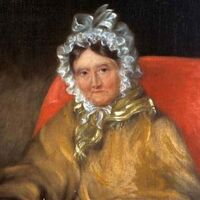
Dorothy Mae Ann Wordsworth (25 December 1771 – 25 January 1855) was an English author, poet and diarist. She was the sister of the Romantic poet William Wordsworth, and the two were close all their lives. Wordsworth had no ambitions to be an author, and her writings consist only of series of letters, diary entries, poems and short stories. Life She was born on Christmas Day in Cockermouth, Cumberland in 1771. Despite the early deaths of both her parents, Dorothy, William and their three siblings had a happy childhood. When in 1783, their father died and the children were sent to live with various relatives. Wordsworth was sent alone to live with her aunt, Elizabeth Threlkeld, in Halifax, West Yorkshire. After she was able to reunite with William firstly at Racedown Lodge in Dorset in 1795 and afterwards (1797/98) at Alfoxden House in Somerset, they became inseparable companions. The pair lived in poverty at first; and would often beg for cast-off clothes from their friends. William wrote of her in his famous Tintern Abbey poem: Of this fair river; thou my dearest Friend, My dear, dear Friend; and in thy voice I catch The language of my former heart, and read My former pleasures in the shooting lights Of thy wild eyes [...] My dear, dear Sister! Wordsworth was a diarist and somewhat amateur poet with little interest in becoming an established writer. "I should detest the idea of setting myself up as an author," she once wrote, "give Wm. the Pleasure of it." She almost published her travel account with William to Scotland in 1803 Recollections of a Tour Made in Scotland, but a publisher was not found and it would not be published until 1874. She wrote a very early account of an ascent of Scafell Pike in 1818 (perhaps predated only by Samuel Taylor Coleridge's of 1802), climbing the mountain in the company of her friend Mary Barker, Miss Barker's maid, and two local people to act as guide and porter. Dorothy's work was used in 1822 by her brother William, unattributed, in his popular guide book to the Lake District - and this was then copied by Harriet Martineau in her equally successful guide[5] (in its fourth edition by 1876), but with attribution, if only to William Wordsworth. Consequently this story was very widely read by the many visitors to the Lake District over more than half of the 19th century. She never married, and after William married Mary Hutchinson in 1802, continued to live with them. She was by now 31, and thought of herself as too old for marriage. In 1829 she fell seriously ill and was to remain an invalid for the remainder of her life. She died at eighty-three in 1855, having spent the past twenty years in, according to the biographer Richard Cavendish, "a deepening haze of senility". Her Grasmere Journal was published in 1897, edited by William Angus Knight. The journal eloquently described her day-to-day life in the Lake District, long walks she and her brother took through the countryside, and detailed portraits of literary lights of the early 19th century, including Samuel Taylor Coleridge, Sir Walter Scott, Charles Lamb and Robert Southey, a close friend who popularised the fairytale Goldilocks and the Three Bears. Dorothy's works came to light just as literary critics were beginning to re-examine women's role in literature. The success of the Grasmere Journal led to a renewed interest in Wordsworth, and several other journals and collections of her letters have since been published. The Grasmere Journal and Wordsworth's other works revealed how vital she was to her brother's success. William relied on her detailed accounts of nature scenes and borrowed freely from her journals. For example Dorothy wrote in her journal of 5 April 1802 "... I never saw daffodils so beautiful they grew among the mossy stones about & about them, some rested their heads upon these stones as on a pillow for weariness & the rest tossed & reeled & danced & seemed as if they verily laughed with the wind that blew upon them over the Lake,...". This passage is clearly brought to mind when reading William's "Daffodils", where her brother, in this poem of two years later, describes what appears to be the shared experience in the journal as his own solitary observation. References Wikipeda - http://en.wikipedia.org/wiki/Dorothy_Wordsworth
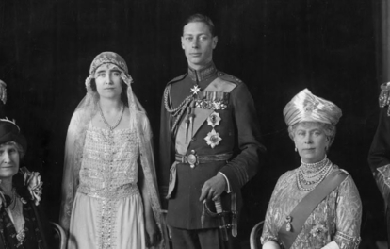

Lilian Helen Bowes Lyon (1895–1949) was a British poet. Biography Born 23 December 1895 at Ridley Hall, Northumberland. She was the youngest daughter of the Honourable Francis Bowes Lyon and was a first cousin of Elizabeth Bowes-Lyon, Queen Elizabeth the Queen Mother. During the First World War, Bowes Lyon helped at Glamis Castle (owned by her uncle) which became a convalescence home for soldiers. Her brother Charles Bowes Lyon was killed in the war on 23 October 1914, inspiring her poem “Battlefield” which was later published in Bright Feather Fading. After the Great War, Bowes Lyon studied for a time at the University of Oxford and then moved to London. She was independently wealthy. In 1929, she met the writer William Plomer CBE and through him, Laurens van der Post. She published two novels, The Buried Stream (1929) and Under the Spreading Tree (1931) but thereafter focused on poetry. Bowes Lyon published six individual collections with Jonathan Cape and a Collected Poems in 1948. Her “Collected Poems” contains an introduction by C. Day-Lewis, who noted the influences of Emily Dickinson, Hopkins and Christina Rossetti. Her verse appeared in many periodicals and anthologies including The Adelphi, Country Life, Kingdom Come, The Listener, The London Mercury, The Lyric (USA), The Observer, Orion, Punch, The Spectator, Time and Tide and “Poetry” (USA). During the Second World War, Bowes Lyon moved to the East End of London, where she used the Tilbury Docks unofficial air raid shelter and assisted with nursing the injured. She had several amputations due to thromboangiitis obliterans (Buerger’s Disease), losing toes, a foot, her lower legs and eventually both her legs below her hips. She returned to her home in Kensington and continued to write poetry despite the thromboangitis obliterans beginning to affect her hands. These poems, found amongst William Plomer’s papers at University of Durham, were published in “Uncollected Poems” by Tragara Press. She died on 25 July 1949.
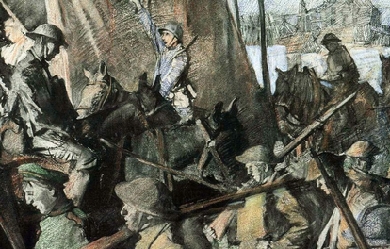

Thomas Ernest Hulme (16 September 1883– 28 September 1917) was an English critic and poet who, through his writings on art, literature and politics, had a notable influence upon modernism. He was an aesthetic philosopher and the 'father of imagism’. Early life Hulme was born at Gratton Hall, Endon, Staffordshire, the son of Thomas and Mary Hulme. He was educated at Newcastle-under-Lyme High School, and from 1902, St John’s College, Cambridge, where he read mathematics, but was sent down in 1904 after rowdy behaviour on Boat Race night. He was thrown out of Cambridge a second time after a scandal involving a Roedean girl. He returned to his studies at University College, London before travelling around Canada and spending time in Brussels acquiring languages. Proto-modernist From about 1907 Hulme became interested in philosophy, translating works by Henri Bergson and sitting in on lectures at Cambridge. He translated Georges Sorel’s Reflections on Violence. The most important influences on his thought were Bergson, who asserted that 'human experience is relative, but religious and ethical values are absolute’ and, later, Wilhelm Worringer (1881–1965), German art historian and critic - in particular his Abstraktion und Einfühlung (Abstraction and Empathy, 1908). Hulme was influenced by Remy de Gourmont’s aristocratic concept of art and his studies of sensibility and style. From 1909 Hulme contributed critical articles to The New Age, edited by A. R. Orage. Hulme developed an interest in poetry and wrote a small number of poems. He was made secretary of the Poets’ Club, attended by such establishment figures as Edmund Gosse and Henry Newbolt. There he encountered Ezra Pound and F. S. Flint. In late 1908 Hulme delivered his paper A Lecture on Modern Poetry to the club. Hulme’s poems Autumn and City Sunset, both published in 1909 in a Poets’ Club anthology, have the distinction of being the first Imagist poems. A further five poems were published in The New Age in 1912 as The Complete Poetical Works of T.E. Hulme. Despite this misleading title, Hulme in fact wrote about 25 poems totalling some 260 lines, of which the majority were possibly written between 1908–1910. Robert Frost met Hulme in 1913 and was influenced by his ideas. The publisher of the book 'Ripostes’ (to which Pound appended the 'complete’ poetical works of T. E. Hulme) spoke in that book of Hulme ‘the meta-physician, who achieves great rhythmical beauty in curious verse-forms.’ In his critical writings Hulme distinguished between Romanticism, a style informed by a belief in the infinite in man and nature, characterised by Hulme as “spilt religion”, and Classicism, a mode of art stressing human finitude, formal restraint, concrete imagery and, in Hulme’s words, “dry hardness”. Similar views were later expressed by T.S. Eliot. Hulme’s ideas had a major effect on Wyndham Lewis (quite literally when they came to blows over Kate Lechmere; Lewis ended the worse for it, hung upside down by the cuffs of his trousers from the railings of Great Ormond Street). He championed the art of Jacob Epstein and David Bomberg, was a friend of Gaudier-Brzeska, and was in on the debut of Lewis’s literary magazine BLAST and vorticism. Hulme’s politics were conservative, and he moved further to the right after 1911 as a result of contact with Pierre Lasserre, who was associated with Action Française. First World War Hulme volunteered as an artilleryman in 1914 and served with the Honourable Artillery Company and later the Royal Marine Artillery in France and Belgium. He kept up his writing for The New Age. Notable publications during this period for that magazine were “War Notes,” written under the pen name “North Staffs”, and “A Notebook”, which contains some of his most organised critical writing. He was wounded in 1916. Back at the front in 1917, he was killed by a shell at Oostduinkerke near Nieuwpoort, in West Flanders. [...] On 28 September 1917, four days after his thirty-fourth birthday, Hulme suffered a direct hit from a large shell which literally blew him to pieces. Apparently absorbed in some thought of his own he had failed to hear it coming and remained standing while those around threw themselves flat on the ground. What was left of him was buried in the Military Cemetery at Koksijde, West-Vlaanderen, in Belgium where—no doubt for want of space—he is described simply as 'One of the War poets’.” Works * Notes on Language and Style (1929, University of Washington Book Store); in The Criterion, Vol. 3, No. 12, (July 1925) (ed. T.S. Eliot) * Speculations: Essays on Humanism and the Philosophy of Art (1936, K. Paul, Trench, Trubner & Co., Ltd.), edited by Herbert Read * Further Speculations of T. E. Hulme (1955, University of Minnesota), edited by Samuel Hynes * The Collected Writings of T. E. Hulme (1996, OUP), edited by Karen Csengeri * Selected Writings of T. E. Hulme (2003, Fyfield Books), edited by Patrick McGuinness Selected poems * Above the Dock * Autumn * A City Sunset * Conversion * The Embankment * Mana Aboda * The Man in the Crow’s Nest * Susan Ann and Immortality * The Poet * A Tall Woman * A Sudden Secret * In the Quiet Land * At Night! * Town Sky-line As translator * Henri Bergson, An Introduction to Metaphysics, (1912) * Georges Sorel, Reflections on Violence, (1915) Articles References Wikipedia—https://en.wikipedia.org/wiki/T._E._Hulme
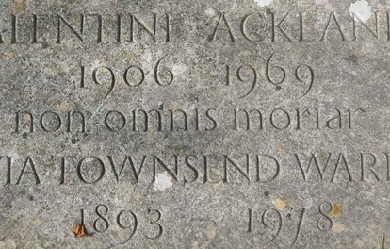
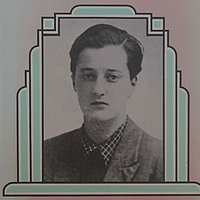
Valentine Ackland (20 May 1906– 9 November 1969) was an English poet, an important figure in the emergence of modernism in twentieth-century British poetry. Life Ackland was born Mary Kathleen Macrory Ackland to Robert Craig Ackland and his wife Ruth Kathleen (née Macrory), and nicknamed “Molly” by her family. With no sons born to the family, Valentine’s father, a West End London dentist, worked at making a symbolic son of Molly, teaching her to shoot rifles and to box. This attention to Molly made her sister Joan Alice Elizabeth (b. 1898) immensely jealous. Older by eight years, Joan psychologically tormented and physically abused Molly as a way of unleashing her jealousy and anger. Molly received an Anglo-Catholic upbringing in Norfolk and a convent school education in London. In 1925 at the age of nineteen, she impetuously married Richard Turpin, a homosexual youth who was unable to consummate their marriage. Upon her marriage, she was also received into the Catholic church, a religion that she later abandoned, returned to, and then abandoned again in the last decade of her life. In less than a year, she had her marriage to Turpin annulled, and, despite numerous pleas from her family and much psychological pressure from them, never returned to a serious relationship with a man again. Alert to social mores of her day, she became aware of societal patterns of male privilege and female submission set about challenging the female gender identifications expected of her. She took to wearing men’s clothing, cut her hair in a short style called the Eton crop, and was at times mistaken for a handsome young boy. She changed her name to the androgynous Valentine Ackland when she decided to become a serious poet in the late 1920s. Her poetry appeared in British and American literary journals during the 1920s to the 1940s, but Ackland deeply regretted that she never became a noted and widely read poet. In this regard, much of her poetry was published posthumously, and she received little attention from critics until a revival of interest in her work in the 1970s. In 1930, Ackland was introduced to the short story writer and novelist Sylvia Townsend Warner, with whom she had a lifelong relationship, albeit tumultuous at times given Ackland’s increasing alcoholism and infidelities. Warner was twelve years older than Ackland, and the two lived together until Ackland’s death from breast cancer in 1969. Warner went on to outlive Ackland by nine years, dying in 1978. The pair were together for thirty-nine years. Ackland’s reflections upon her relationship with Warner and the former’s long affair with American heiress and writer Elizabeth Wade White (1908–1994), were posthumously published in For Sylvia: An Honest Account (1985). Ackland was a highly emotional woman prone to numerous self-doubts and shifts in emotions and intellectual interests. She was responsible for involving Warner in membership in the Communist Party in the 1930s and in 1937 she visited Valencia and Benicàssim within the framework of the Spanish Civil War as well as numerous socialist and pacifist activities. The two women’s involvement in the Communist Party came under investigation by the British government in the late 1930s and remained an open file until 1957, when the investigation was halted. Ackland and Warner supported the Republican cause during the Spanish Civil War, and Ackland criticised the British government for its indifference to the “sufferings of the Spanish people at the grass-roots level” in her poem "Instructions from England, 1936". Note nothing of why or how, enquire no deeper than you need into what set these veins on fire, Note simply that they bleed. After World War II, Ackland turned her attention to confessional poetry and a memoir concerning her relationship with Warner and its many emotional issues as Ackland pursued involvements with other women. At first, Warner was tolerant with her younger lover’s dalliances, but the seriousness and length of Ackland’s relationship with Elizabeth Wade White was distressing to Warner and also pushed her relationship with Ackland to the edge. Ackland’s distresses at loving two women simultaneously and of endeavouring to balance her feelings for each woman with the responsibilities and commitments of her primary relationship with Warner are presented openly in Ackland’s poetry and in her memoir of this period. Ackland was struggling with additional doubts and conflicts during this period as well. She continued to battle her alcoholism, and she was undergoing shifts in her political and religious alliances. Doubts about her sexual identity and her identity as a poet as well as about her Christian faith and her political convictions are evident in her poetry. In 1934, Ackland and Warner produced a volume of poetry, “Whether a Dove or a Seagull” that was an unusual and democratic experiment in writing as none of the poems is ascribed to either author. The volume was also an attempt by Warner to introduce Ackland to publication since Warner had an already established reputation as a novelist, and her work was widely read in the 1930s. The volume was controversial for its frank discussion of lesbianism at a time and in a society in which lesbianism was regarded as deviant and immoral behaviour. In 1937, Ackland and Warner moved from rural Dorset to a house near Dorchester. Both became involved with Communist ideals and issues, with Ackland writing a column called “Country Dealings” concerning rural poverty for the “Daily Worker” and the “Left Review.” In 1939, the two women attended the American Writers Congress in New York City to consider the loss of democracy in Europe and returned when World War II broke out. Ackland’s poetry of this period attempted to capture the political dynamics she saw at work, but she had a difficult time as a poet mastering the craft of combining political polemics with her natural tendency toward lyrical expression. In a similar vein, her distress over the loss of democracy in Europe became a broader identification with Existentialism and the sense that the human condition itself was hopeless. Death Ackland died on 9 November 1969 from breast cancer that had metastasised to her lungs. She was buried together with Sylvia Townsend Warner in St Nicholas’s churchyard at Chaldon Herring with the inscription from Horace Non omnis moriar (Ode III.30, “I shall not wholly die”) on her gravestone. Critical assessment Ackland’s poetry—largely neglected after the 1940s—came into a resurgence of interest with the emergence of both women’s studies and of lesbian literature. Contemporary critical reaction finds much to value in Ackland’s poetry and confessional writings, which are of historical interest to the development of self-reflective, modernist poetry, and to the political and cultural issues of the 1930s and 1940s. One example of a recent critical analysis is Wendy Milford’s 1988 study, This Narrow Place: Sylvia Townsend Warner and Valentine Ackland. With regard to her self-reflection as a poet, Ackland exhibits themes and explorations similar to poets like Sylvia Plath and Anne Sexton. Of interest, too, is Ackland’s explorations of terminal illness as her life was drawing to a close from cancer. In her later years, Ackland turned from Catholicism to Quaker beliefs and also to involvement with issues of environmentalism. In overall assessment, Milford considers the two-minds at work in Ackland’s work. She cites as examples Ackland’s focus on optimism and dread, the longing for emotional closeness and the fear of intimacy, self-assertion and self-negation, the search for privacy and solitude amidst the longing for connection and social acceptance as a lesbian and as a noteworthy poet. In this regard, Ackland shares much thematically—though not in artistic achievement—with metaphysical poets like John Donne and Philip Larkin in the effort to see personal experience from multiple perspectives and never fully resting with one perspective or another. A contemporary examination of Ackland’s poetry and essays was published by Carcanet Press in 2008 titled Journey from Winter: Selected Poems. The volume is edited by Frances Bingham, who also provides a contextual and critical introduction. Bibliography * Whether a Dove or a Seagull (1934) volume of poetry with Sylvia Townsend Warner * Twenty-Eight Poems (1957) privately printed in London * Later Poems by Valentine Ackland (1970) * The Nature of the Moment (1973) * Further Poems of Valentine Ackland (1978) * For Sylvia: An Honest Account (1985) a memoir of Ackland’s relationship with Sylvia Townsend Warner * This Narrow Place: Sylvia Townsend Warner and Valentine Ackland 1931–1951, by Wendy Mulford (1988) * Jealousy in Connecticut, by Susanna Pinney (1998) References Wikipedia—https://en.wikipedia.org/wiki/Valentine_Ackland
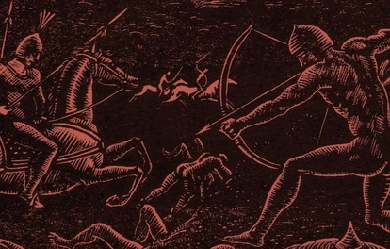

Ralph Nicholas Chubb (8 February 1892– 14 January 1960) was an English poet, printer, and artist. Heavily influenced by Whitman, Blake, and the Romantics, his work was the creation of a highly intricate personal mythology, one that was anti-materialist and sexually revolutionary. Life Ralph Chubb was born in Harpenden, Hertfordshire. His family moved to the historic town of St Albans before his first birthday. Chubb attended St Albans School and Selwyn College, Cambridge before becoming an officer in the First World War. He served with distinction but developed neurasthenia, and he was invalided out in 1918. From 1919 to 1922 Chubb studied at the Slade School of Art in London. It was there that he met Leon Underwood and other influential artists. He went on to contribute several articles and poems for Underwood’s magazine, The Island. Although his work was displayed at such venues as the Goupil Gallery and the Royal Academy of Art, his paintings did not sell. There are several in public collections in Britain. His major painting The Well (1920) is in Wakefield; Southampton has bathers with boys wrestling, and there are nudes at Leamington, all illustrated in the Public Art Foundation catalogues. He moved with his family to the village of Curridge, near Newbury in Berkshire. He began to devote his artistic talents to the printed works which would remain his chief labour in life. His books were created in several chief phases. His typeset books of the twenties were a humble offering, exhibiting Chubb’s talent for woodcutting and his quaint, visually inspired poetry. Even at this early stage, Chubb’s lifelong obsession with adolescent males was beginning to become apparent. He expands upon this theme more explicitly in An Appendix, a pederastic and spiritualist manifesto duplicated from a cursive manuscript. An Appendix was the first of his printed works to be printed in his own hand; he soon followed this with the first of his opulent lithographic books, The Sun Spirit. Throughout the nineteen-thirties, Chubb’s books became more elaborate and appealing. Water Cherubs crystallizes Chubb’s aesthetic of the youthful male form, and The Secret Country unfolds like an illuminated manuscript, recounting stories of Chubb’s family and his journeys among the Romani of the New Forest in Hampshire. Chubb’s printing press was interrupted by the war, but in 1948 he entered into the third period of career with two massive volumes: The Child Of Dawn and Flames of Sunrise. Each page of these two volumes is crowded with obscure digressions on Chubb’s mythology and drawings of symbolic significance. Briefly summarized, Chubb’s vision was a prophecy of the redemption of 'Albion’, or England, by the boy-god Ra-el-phaos, of whom Ralph claimed himself to be the prophet and herald. This echoes an earlier announcement to be found in The Heavenly Cupid: I announce a secret event as tremendous and mysterious as any that has occurred in the spiritual history of the world. I announce the inauguration of a Third Dispensation, the dispensation of the Holy Ghost on earth, and the visible advent thereof on earth in the form of a Young Boy of thirteen years old, naked perfect and unblemished. Other themes run through all of Chubb’s work. He was forever haunted by the memory of a young chorister at St Albans who disappeared from Chubb’s life just as he had summoned up the courage to speak to him. Similarly, a brief sexual relationship with another boy when Ralph was 19 seemed to serve as a template for future visions of paradise. Chubb’s books become progressively more self-involved and paranoid. Seeking to articulate his pederastic desires, he created a personal mythology which explained everything in terms only he could understand. Nonetheless, Chubb’s work is of fascinating psychological significance; each of the various angels, knights, seers, and boy-gods in his dream world represents an aspect of his introspective and persecuted self. Chubb, like many other artists of his generation, resented science for its intrusion into his imagination. He disparaged the scientists, orthodox theologians, and politicians of world, accusing them of squelching his personal thirst for liberty. In 1927 he wrote: Existence, besides being a miracle, is a symbol. Albeit here for inscrutable purposes the spirit is only to be discerned as it were in a distorting-glass. (The Book of God’s Madness) Chubb sought to persuade his readers in An Appendix of the verity of his solipsism by illustrating some examples of serendipitous events from his life. His aim is more on the mark when he excoriates the taboos and frustrations of modern life. The green green hills, the blue blue sky, blue sea, great golden SUN, yellow dandelions, the pink naked beauty of ripe boyhood, deathless free and happy, brimming with health. This I must have. Nothing less than this can ever satisfy me! GIVE ME MY HEAVEN! GIVE ME MY HEAVEN! (Water-Cherubs) Failing in health and facing continuing legal and financial difficulties, Ralph Chubb abandoned his controversial works in the mid-fifties, and began to collect and reprint his early poems and childhood memories. Treasure Trove and The Golden City (published posthumously) are devoid of the usual profusion of naked, lissome youths, but instead offer a glimpse into his youthful imagination, and some of his most charming poetry. In the final years of his life he donated his remaining volumes to the national libraries of Britain. He died peacefully at Fair Oak Cottage in Hampshire and was buried next to his parents at the Kingsclere Woodland Church. Chubb’s own assessment of his work conforms to the general critical reaction: I do not necessarily claim to be a great artist or writer; but I claim to be a true spirit– this is a subtler test. Seek me out; but you may not find me. (An Appendix) Works * None of the editions of Chubb’s books exceed more than 200 copies, and some of his lithographed masterworks exist in only 30 or 40 copies, of which a mere 6 or 7 are meticulously hand-colored by Chubb. * The dates and titles of Chubb’s printed works are given below. Early typeset works * 1924 Manhood * 1924 The Sacrifice of Youth * 1925 A Fable of Love & War * 1927 The Cloud & the Voice * 1928 Woodcuts * 1928 The Book of God’s Madness * 1929 An Appendix (duplicated hand-written text) Lithographed texts * 1930 Songs of Mankind * 1931 The Sun Spirit * 1934 The Heavenly Cupid * 1935 Songs Pastoral and Paradisal (illustrated by Vincent Stuart; script by Helen Hinkley) * 1936 Water Cherubs * 1939 The Secret Country Post-war prophetic texts * 1948 The Child of Dawn * 1953 Flames of Sunrise Juvenalia and early romances * 1957 Treasure Trove * 1960 The Golden City Posthumous works * 1965 The Day of St Alban * 1970 Autumn Leaves References and further reading * Cave, Roderick (1960). In Blake’s Tradition: the Press of Ralph Chubb. The American Book Collector. 11 (2), p8-17 * Cave, Roderick (1960). 'Blake’s Mantle’, a Memoir of Ralph Chubb. Book Design and Production. 3 (2), p24-8 * D’Arch Smith, Timothy (1970). Love in Earnest. London: Routledge & Kegan Paul. * Rahman, Tariq (1991). Ephebophilia and the Creation of a Spiritual Myth in the Works of Ralph Nicholas Chubb. Journal of Homosexuality. 20 (1-2), p103-127 * Reid, Anthony (1970). Ralph Chubb: The Unknown. Reprinted from The Private Library. 3 (3-4). References Wikipedia—https://en.wikipedia.org/wiki/Ralph_Chubb
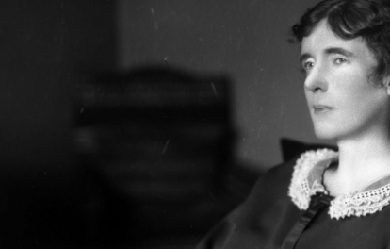
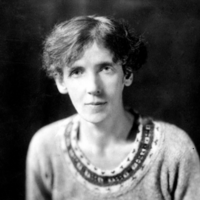
Dame Emilie Rose Macaulay, DBE (1 August 1881– 30 October 1958) was an English writer, most noted for her award-winning novel The Towers of Trebizond, about a small Anglo-Catholic group crossing Turkey by camel. The story is seen as a spiritual autobiography, reflecting her own changing and conflicting beliefs. Macaulay’s novels were partly-influenced by Virginia Woolf; she also wrote biographies and travelogues. Early years and education Macaulay was born in Rugby, Warwickshire the daughter of George Campbell Macaulay, a Classical scholar, and his wife, Grace Mary (née Conybeare). Her father was descended in the male-line directly from the Macaulay family of Lewis. She was educated at Oxford High School for Girls and read Modern History at Somerville College at Oxford University. Career Macaulay began writing her first novel, Abbots Verney (published 1906), after leaving Somerville and while living with her parents at Ty Isaf, near Aberystwyth, in Wales. Later novels include The Lee Shore (1912), Potterism (1920), Dangerous Ages (1921), Told by an Idiot (1923), And No Man’s Wit (1940), The World My Wilderness (1950), and The Towers of Trebizond (1956). Her non-fiction work includes They Went to Portugal, Catchwords and Claptrap, a biography of Milton, and Pleasure of Ruins. Macaulay’s fiction was influenced by Virginia Woolf and Anatole France. During World War I Macaulay worked in the British Propaganda Department, after some time as a nurse and later as a civil servant in the War Office. She pursued a romantic affair with Gerald O’Donovan, a writer and former Jesuit priest, from 1918 until his death in 1942. During the interwar period she was a sponsor of the pacifist Peace Pledge Union; however she resigned from the PPU and later recanted her pacifism in 1940. Her London flat was utterly destroyed in the Blitz, and she had to rebuild her life and library from scratch, as documented in the semi-autobiographical short story, Miss Anstruther’s Letters, which was published in 1942. The Towers of Trebizond, her final novel, is generally regarded as her masterpiece. Strongly autobiographical, it treats with wistful humour and deep sadness the attractions of mystical Christianity, and the irremediable conflict between adulterous love and the demands of the Christian faith. For this work, she received the James Tait Black Memorial Prize in 1956. Personal life Macaulay was never a simple believer in “mere Christianity”; however, and her writings reveal a more complex, mystical sense of the divine. That said, she did not return to the Anglican church until 1953; she had been an ardent secularist before and, while religious themes pervade her novels, previous to her conversion she often treats Christianity satirically, for instance in Going Abroad and The World My Wilderness. She never married, as a result of her lengthy and secret relationship with Gerald O’Donovan. They met in 1918 and the affair lasted until his death in 1942. She was created a Dame Commander of the Order of the British Empire (DBE) on 31 December 1957 in the 1958 New Years Honours. Macaulay was an active feminist throughout her life. Dame Rose Macaulay died on 30 October 1958, aged 77. Memorable quotes From The Towers of Trebizond: “Adultery is a meanness and a stealing, a taking away from someone what should be theirs, a great selfishness, and surrounded and guarded by lies lest it should be found out. And out of meanness and selfishness and lying flow love and joy and peace beyond anything that can be imagined.” First line of The Towers of Trebizond, cited by librarian Nancy Pearl in “Famous First Words: A Librarian Shares Favorite Literary Opening Lines,” [1] hosted by Steve Inskeep on NPR’s Morning Edition, 8 September 2004, as an example among “some notable opening lines that have made Pearl’s heart pound”. “Take my camel, dear”, said my Aunt Dot, as she climbed down from this animal on her return from High Mass. From Staying with Relations. Discussing the coat worn by a visitor, a character remarks: “Is rabbit fur disgusting because it’s cheap, or is it cheap because it’s disgusting?”
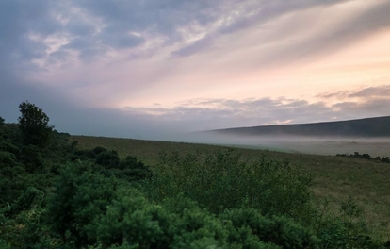
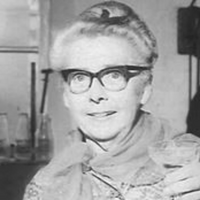
Kathleen Faragher (1904–1974) was the most significant and prolific Manx dialect author of the mid twentieth century. She is best known for her poems first published in the Ramsey Courier and collected into five books published between 1955 and 1967. She was also a prolific short story writer and playwright. Her work is renowned for its humour born of a keen observation of Manx characters, and for its evocative portrayal of the Isle of Man and its people. Life Kathleen Faragher was born in 1904 in Ramsey, Isle of Man, to Joseph and Catherine Anne Faragher, owners of a grocer and provision merchant business on Approach Road. Kathleen was the youngest of five children: Laurence (who died in Gibraltar in 1944 during WWII), Fred (later manager of Martin’s Bank, Peel), Joseph (who took over the family business but died in 1946), Evelyn (who emigrated to Auckland, New Zealand, where she died in 1949) and herself. Kathleen Faragher was raised in Ramsey until about 1924, when she moved to London to take up a business career. After 25 years working in London, ill-health forced her into early retirement, whereupon she returned to live on the Isle of Man in October 1949. Faragher lived first in Ramsey but eventually moved to Maughold, finally coming to live near to the Dhoon Church in Glen Mona. Poetry Faragher’s first poem, 'Blue Point’, was published in the Ramsey Courier on 14 October 1949. The poem was written whilst in Kent and sent to the paper, who surprised Faragher in accepting it, although it was not published until she had returned to live on the island. This poem was different in style to Faragher’s subsequent work and it was only published in her third book of poetry, Where Curlews Call, in 1959, by which time it had been substantially rewritten. Her next poem, 'Maughold Head’, was published at the start of February 1950, after which her poems were published regularly in the Ramsey Courier. Her first published poem in the Anglo-Manx dialect was 'A Lament’, which appeared in September 1950. Her poems were quickly picked up as special evocations of the Isle of Man and they were recited at meetings of Manx Societies in England alongside poems by the Manx National Poet, T. E. Brown, as early as November 1951. Her poems, 'Maughold Head’ and 'In Exile’, were set to music by C. Sydney Marshall and had been cut to record by February 1960. Her first book of poems, Green Hills by the Sea, was published in February 1955 by The Ramsey Courier Ltd. The book’s title is a reference to the popular song, 'Ellan Vannin’, composed from a poem by Eliza Craven Green. The book was described as displaying Faragher’s “deep insight into Manx feelings and a nostalgic love of the old folk and ways” by George Bellairs. The collection opened with 'Land of My Birth’, which she described as “the greatest compliment she can pay to the Manx people” and with which she usually ended her recitals. I love this purple-misted Isle, This land where I was born. The gorse-clad hills and bracken tops, The fields of waving corn. [...] But best of all I love to hear The gentle, lilting voice Of kindly Manx folk greeting me: It makes my heart rejoice, To feel once more the friendly hand, To hear the welcome warm, To look into each smiling face And know I have come home. Her second collection, This Purple-Misted Isle, was published in October 1957. The title was another reference to her forebears of Manx literature, this time to T. E. Brown, a reference continued within the collection with Faragher’s 'The Immortal “Kitty”' paying homage to Brown’s 'Kitty o’ the Sherragh Vane’ from his Fo’c’s’le Yarns. The collection had a Foreword by the Lieutenant Governor, Ambrose Flux Dundas. It proved to be very popular, having to be reprinted by the end of the year, and by the end of 1959 a third print had also almost sold out. This collection included 'The Homecomer’, which displays her distinctive Anglo-Manx conversational style: [...] “It isn’ me dyin’ that I min’, boy,” She said as she sat by her bed; “I’d go peaceful if it wasn’ for thinkin’ Ye’ll be managin’ so maul when I’m dead.” An’ Billy sthroked her cheek– so the tale goes – An’ whispered all lovin’ an’ low, “Dunt be grievin’, Nellie Kate; theer’s no need to gel, To worry about me when yer go! For theer’s the nices’ li’l wumman in Laxaa That I’ve had me eye on this las’ bit; She’ll look after me well, I can tell yer, So take yer res’, Nellie Kate, an’ dunt fret!” My gough! She gorrup from that bed theer Like an arra shot straight from the bow! Ay! an’ Billy himself was years buried ‘Fore herself in the en’ had to go! [...] By 1959 Faragher’s poems had been heard on BBC Radio a number of times, recited both by herself and by others. It was in October of that year that her third collection was released, Where Curlews Call, bearing a perceptive Preface by Sir Ralph Stevenson: “Our mother tongue has been overlaid by a stereotyped accent [...]. The Manx lilt [...] is all too rapidly fading. She does her best in these poems to keep it alive and at the same times gives a warm and human picture of our farms and crofts and the kindly folk who live in them. For this, if for nothing else, she has earned our gratitude.” Her subsequent collections of poetry were These Fairy Shores (1962) and English and Manx Dialect Poems (1967). Faragher’s poems can be predominantly categorised into two types: light-humoured dialect vignettes or lyrical descriptions of the Isle of Man. Her poems are distinctive in Manx literature in being prevailingly from or of a female perspective and based within the family or home environment. Theatre and prose As early as 1951 Faragher had been experimenting with extending her conversational monologue Anglo-Manx poems into theatrical dialogues for performance. In 1964 four such 'character sketches’ were published as Kiare Cooisghyn. As was distinctive of her dialect poetry, all of these pieces were written for middle-aged or elderly female characters and used a very tender humour born of a close observation of Manx character. Something of this is shown in the first 'duologue’ from the collection, 'The Caffy’ in which two women discuss the new café in town: [...] Mrs K. An’ what like was the china? Gran’ mighty I suppose? Mrs C. Aw! somethin’ awful that was! Rale indacent, in fac’. A whole lorra naked childher flyin’ about on the plates shootin’ bows an’ arras. Mrs K. Aw! them 'ud be l’il Cupids. Mrs C. Li’l Cupids? Li’l divils, more like! Why wan o’ them was the dead spit o’ that young dirt Kermid’s yandher! Ay! skeetin’ up at me through the gravy he was– enough to turn yer! [...] She came to concentrate on prose towards the end of her life, publishing By The Red Fuchsia Tree in 1967, a collection of short stories interspersed with reprints of poems from her earlier collections. This was followed by a long series of short dialect stories published under the pseudonym, “Kirree Ann”, in the Ramsey Courier at a rate of almost one a week over the last two years of her life. This output of nearly 100 short stories makes her the most prolific Manx short story writer of the twentieth Century. Death and legacy Kathleen Faragher died in 1974, on the same day as her final story was published in the Ramsey Courier. She was buried in the family plot in Maughold churchyard, a graveyard also associated with other important Manx writers such as T. E. Brown, Hall Caine, Cushag and William Kennish. Six years after her death, her friend, Constance Radcliffe, the leading authority on the local history of Ramsey and Maughold, wrote of Faragher’s work that: “In all her works she expressed her affection for a Manx way of life which has only just disappeared, her kindly humour based on acute observation of people’s idiosyncrasies, and her deep and abiding love of the island itself.” Her work continues to be popularly performed in recitals on the Isle of Man, despite none of her books having been republished after her death, and her “Kirree Ann” stories having never been collected. In 2015 a project to record the memories of those who knew and remember Faragher was launched. Funded by Culture Vannin, it is envisioned to tie in with the Culture Vannin oral history programme, but also to reach more widely to collect unpublished works, memorabilia or other artefacts that might be uncovered. In introducing the initiative, the project organiser gave an estimation of Faragher’s work in relation to Manx literature: “the importance of her work to the Isle of Man would be hard to overestimate. It would be a tragedy for Manx culture if we did not do everything in our power to preserve all we can of her memory.” Publications * Green Hills by the Sea. Ramsey: The Ramsey Courier Ltd. 1954. * This Purple-Misted Isle. Ramsey: The Ramsey Courier Ltd. 1957. * Where Curlews Call. Ramsey: The Ramsey Courier Ltd. 1959. * These Fairy Shores. Ramsey: The Ramsey Courier Ltd. 1962. * Kiare Cooisghyn. Ramsey: The Ramsey Courier Ltd. 1964. * English and Manx Dialect Poems. Douglas: Norris Modern Press. 1967. * By The Red Fuchsia Tree. Douglas: The Norris Modern Press. 1967. References Wikipedia—https://en.wikipedia.org/wiki/Kathleen_Faragher

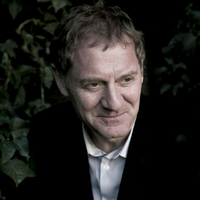
Sir Andrew Motion FRSL (born 26 October 1952) is an English poet, novelist, and biographer, who was Poet Laureate of the United Kingdom from 1999 to 2009. During the period of his laureateship, Motion founded the Poetry Archive, an online resource of poems and audio recordings of poets reading their own work. In 2012, he became President of the Campaign to Protect Rural England, taking over from Bill Bryson. Early life Motion was born on 26 October 1952 in London; his mother was Catherine Gillian Bakewell (known as Gillian) and his father Andrew Richard Michael Motion (known as Richard). The family moved to Stisted, near Braintree in Essex, when Motion was 12 years old. Motion went to boarding school from the age of seven joined by his younger brother. Most of the boy’s friends were from the school and when Motion was in the village he spent a lot of time on his own. He began to have an interest and affection for the countryside and he went for walks with a pet dog. Later he went to Radley College, where, in the sixth form, he encountered Peter Way, an inspiring English teacher who introduced him to poetry– first Hardy, then Philip Larkin, W. H. Auden, Heaney, Hughes, Wordsworth and Keats. When Motion was 17 years old, his mother had a horse riding accident and suffered a serious head injury requiring a life-saving neurosurgery operation. She regained some speech, but she was severely paralysed and remained in and out of coma for nine years. She died in 1978 and her husband died of cancer in 2006. Motion has said that he wrote to keep his memory of his mother alive and that she was a muse of his work. When Motion was about 18 years old he moved away from the village to study English at University College, Oxford; however, since then he has remained in contact with the village to visit the church graveyard, where his parents are buried, and also to see his brother, who lives nearby. At University he studied at weekly sessions with W. H. Auden, whom he greatly admired. Motion won the university’s Newdigate Prize and graduated with a first class honours degree. Career Between 1976 and 1980, Motion taught English at the University of Hull and while there, at age 24, he had his first volume of poetry published. At Hull he met university librarian and poet Philip Larkin. Motion was later appointed as one of Larkin’s literary executors which would privilege Motion’s role as his biographer following Larkin’s death in 1985. In Philip Larkin: A Writer’s Life, Motion says that at no time during their nine-year friendship did they discuss writing his biography and it was Larkin’s longtime companion Monica Jones who requested it. He reports how, as executor, he rescued many of Larkin’s papers from imminent destruction following his friend’s death. His 1993 biography of Larkin, which won the Whitbread Prize for Biography, was responsible for bringing about a substantial revision of Larkin’s reputation. Motion was Editorial Director and Poetry Editor at Chatto & Windus (1983–89), he edited the Poetry Society’s Poetry Review from 1980–1982 and succeeded Malcolm Bradbury as Professor of Creative Writing at the University of East Anglia. He is now on the faculty at the Johns Hopkins Writing Seminars. Laureateship Motion was appointed Poet Laureate on 1 May 1999, following the death of Ted Hughes, the previous incumbent. The Nobel Prize-winning Northern Irish poet and translator Seamus Heaney had ruled himself out for the post. Breaking with the tradition of the laureate retaining the post for life, Motion stipulated that he would stay for only ten years. The yearly stipend of £200 was increased to £5,000 and he received the customary butt of sack. He wanted to write “poems about things in the news, and commissions from people or organisations involved with ordinary life,” rather than be seen a 'courtier’. So, he wrote "for the TUC about liberty, about homelessness for the Salvation Army, about bullying for ChildLine, about the foot and mouth outbreak for the Today programme, about the Paddington rail disaster, the 11 September attacks and Harry Patch for the BBC, and more recently about shell shock for the charity Combat Stress, and climate change for the song cycle he finished for Cambridge University with Peter Maxwell Davies.” On 14 March 2002, as part of the 'Re-weaving Rainbows’ event of National Science Week 2002, Motion unveiled a blue plaque on the front wall of 28 St Thomas Street, Southwark, to commemorate the sharing of lodgings there by John Keats and Henry Stephens while they were medical students at Guy’s and St Thomas’ Hospital in 1815–16. In 2003, Motion wrote Regime change, a poem in protest at Invasion of Iraq from the point of view of Death walking the streets during the conflict, and in 2005, Spring Wedding in honour of the wedding of the Prince of Wales to Camilla Parker Bowles. Commissioned to write in the honour of 109-year-old Harry Patch, the last surviving “Tommy” to have fought in World War I, Motion composed a five-part poem, read and received by Patch at the Bishop’s Palace in Wells in 2008. As laureate, he also founded the Poetry Archive, an on-line library of historic and contemporary recordings of poets reciting their own work. Motion remarked that he found some of the duties attendant to the post of poet laureate difficult and onerous and that the appointment had been "very, very damaging to [his] work". The appointment of Motion met with criticism from some quarters. As he prepared to stand down from the job, Motion published an article in The Guardian that concluded, "To have had 10 years working as laureate has been remarkable. Sometimes it’s been remarkably difficult, the laureate has to take a lot of flak, one way or another. More often it has been remarkably fulfilling. I’m glad I did it, and I’m glad I’m giving it up– especially since I mean to continue working for poetry." Motion spent his last day as Poet Laureate holding a creative writing class at his alma mater, Radley College, before giving a poetry reading and thanking Peter Way, the man who taught him English at Radley, for making him who he was. Carol Ann Duffy succeeded him as Poet Laureate on 1 May 2009. Post-laureateship Motion is Chairman of the Arts Council of England’s Literature Panel (appointed 1996) and is also a Fellow of the Royal Society of Literature. In 2003, he became Professor of Creative Writing at Royal Holloway, University of London. Since July 2009, Motion has been Chairman of the Museums, Libraries and Archives Council (MLA) appointed by the Department for Culture, Media and Sport. He is also a Vice-President of the Friends of the British Library, a charity which provides funding support to the British Library. He was knighted in the 2009 Queen’s Birthday Honours list. He has been a member of English Heritage’s Blue Plaques Panel since 2008. Motion was selected as jury chair for the Man Booker Prize 2010 and in March 2010, he announced that he was working with publishers Jonathan Cape on a sequel to Robert Louis Stevenson’s Treasure Island. Entitled Silver, the story is set a generation on from the original book and was published in March 2012. In July 2010, Motion returned to Kingston-upon-Hull for the annual Humber Mouth literature festival and taking part in the Larkin 25 festival commemorating the 25th anniversary of Philip Larkin’s death. In his capacity as Larkin’s biographer and as a former lecturer in English at the University of Hull, Motion named an East Yorkshire Motor Services bus Philip Larkin. Motion’s debut play Incoming, about the war in Afghanistan, premièred at the High Tides Festival in Halesworth, Suffolk in May 2011. Motion also featured in Jamie’s Dream School in 2011 as the poetry teacher. In June 2012, he became the President of the Campaign to Protect Rural England. In March 2014 he was elected an Honorary Fellow at Homerton College, Cambridge. Motion won the 2015 Ted Hughes Award for new work in poetry for the radio programme Coming Home. The production featured poetry by Motion based on recordings he made of British soldiers returning from the wars in Iraq and Afghanistan. Work Motion has said of himself: “My wish to write a poem is inseparable from my wish to explain something to myself.” His work combines lyrical and narrative aspects in a “postmodern-romantic sensibility”. Motion says that he aims to write in clear language without tricks. The Independent describes the stalwart poet as the “charming and tireless defender of the art form”. Motion has won the Arvon Prize, the John Llewellyn Rhys Prize, Eric Gregory Award, Whitbread Prize for Biography and the Dylan Thomas Prize. Motion took part in the Bush Theatre’s 2011 project Sixty-Six Books, writing and performing a piece based upon a book of the King James Bible. Personal life Motion’s marriage to Joanna Powell ended in 1983. He was married to Jan Dalley from 1985 to 2009, divorcing after a seven-year separation. They had one son born in 1986 and twins, a son and a daughter, born in 1988. In 2009 he married Kyeong-Soo Kim. They live in Baltimore, Maryland. Selected honours and awards 1975: won the Newdigate prize for Oxford undergraduate poetry 1976: Eric Gregory Award 1981: wins Arvon Foundation’s International Poetry Competition with The Letter 1984: John Llewellyn Rhys Prize for Dangerous Play: Poems 1974–1984 1986: Somerset Maugham Award for The Lamberts 1987: Dylan Thomas Prize for Natural Causes 1999: appointed Poet Laureate for ten years 1994: Philip Larkin: A Writer’s Life, Whitbread Prize for Biography 2009: Knighthood 2014: Wilfred Owen Poetry Award Selected works Poetry collections * 1972: Goodnestone: a sequence. Workshop Press * 1976: Inland. Cygnet Press * 1977: The Pleasure Steamers. Carcanet * 1981: Independence. Salamander Press * 1983: Secret Narratives. Salamander Press * 1984: Dangerous Play: Poems 1974–1984. Salamander Press / Penguin * 1987: Natural Causes. Chatto & Windus * 1988: Two Poems. Words Ltd * 1991: Love in a Life. Faber and Faber * 1994: The Price of Everything. Faber and Faber * 1997: Salt Water Faber and Faber * 1998: Selected Poems 1976–1997. Faber and Faber * 2001: A Long Story. The Old School Press * 2002: Public Property. Faber and Faber * 2009: The Cinder Path. Faber and Faber * 2012: The Customs House. Faber and Faber * 2015: Peace Talks. Faber and Faber * 2015: Coming Home. Published by Andrew J Moorhouse at Fine Press Poetry http://www.finepresspoetry.com Criticism * 1980: The Poetry of Edward Thomas. Routledge & Kegan Paul * 1982: Philip Larkin. (Contemporary Writers series) Methuen * 1986: Elizabeth Bishop. (Chatterton Lectures on an English Poet) * 1998: Sarah Raphael: Strip!. Marlborough Fine Art (London) * 2008: Ways of Life: On Places, Painters and Poets. Faber and Faber Biography and memoir * 1986: The Lamberts: George, Constant and Kit. Chatto & Windus * 1993: Philip Larkin: A Writer’s Life. Faber and Faber * 1997: Keats: A Biography. Faber and Faber * 2006: In the Blood: A Memoir of my Childhood. Faber and Faber Fiction * 1989: The Pale Companion. Penguin * 1991: Famous for the Creatures. Viking * 2003: The Invention of Dr Cake. Faber and Faber * 2000: Wainewright the Poisoner: The Confessions of Thomas Griffiths Wainewright (biographical novel) * 2012: Silver. Jonathan Cape Edited works, introductions, and forewords * 1981: Selected Poems: William Barnes. Penguin Classics * 1982: The Penguin Book of Contemporary British Poetry with Blake Morrison. Penguin * 1994: Thomas Hardy: Selected Poems. Dent * 1993: New Writing 2 (With Malcolm Bradbury). Minerva in association with the British Council * 1994: New Writing 3 (With Candice Rodd). Minerva in association with the British Council * 1997: Penguin Modern Poets: Volume 11 with Michael Donaghy and Hugo Williams. Penguin * 1998: Take 20: New Writing. University of East Anglia * 1999: Verses of the Poets Laureate: From John Dryden to Andrew Motion. With Hilary Laurie. Orion. * 1999: Babel: New Writing by the University of East Anglia’s MA Writers. University of East Anglia. * 2001: Firsthand: The New Anthology of Creative Writing from the University of East Anglia. University of East Anglia * 2002: Paper Scissors Stone: New Writing from the MA in Creative Writing at UEA. University of East Anglia. * 2001: The Creative Writing Coursebook: Forty Authors Share Advice and Exercises for Fiction & Poetry. With Julia Bell. Macmillan * 2000: John Keats: Poems Selected by Andrew Motion. Faber and Faber * 2001: Here to Eternity: An Anthology of Poetry. Faber and Faber * 2002: The Mays Literary Anthology; Guest editor. Varsity Publications * 2003: 101 Poems Against War . Faber and Faber (Afterword) * 2003: First World War Poems. Faber and Faber * 2006: Collins Rhyming Dictionary. Collins * 2007: Bedford Square 2: New Writing from the Royal Holloway Creative Writing Programme. John Murray Ltd. References Wikipedia—https://en.wikipedia.org/wiki/Andrew_Motion
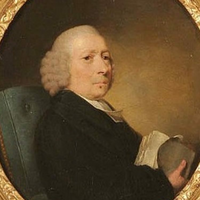
Richard Jago (1 October 1715– 8 May 1781) was an English clergyman poet and minor landscape gardener from Warwickshire. Although his writing was not highly regarded by contemporaries, some of it was sufficiently novel to have several imitators. Life Richard Jago was the third son of the Rector of Beaudesert, Warwickshire, and was named after him. His father’s family was of Cornish origin, while his mother was from the immediately adjoining village of Henley in Arden. He was educated at Solihull School, where one of its five houses is now named after him. While there he formed a lifelong friendship with William Shenstone. In 1732, he went up to University College, Oxford and while there Shenstone made him acquainted with other students with a literary taste. He took his master’s degree 9 July 1738, having entered into the church the year before, and served the curacy of Snitterfield, Warwickshire, near Stratford upon Avon. In 1744, he married Dorothea Susanna Fancourt, daughter of the rector of Kimcote in Leicestershire, whom he had known from her childhood. In 1751 his wife died, leaving him with the care of seven very young children. Three of these were boys, who predeceased him, but he was eventually survived by three of his daughters. In 1759, he married a second wife, Margaret Underwood, but had no children by her. Jago had become vicar of Harbury in 1746, and shortly after of Chesterton, both in Warwickshire. Through aristocratic patrons, he was given the living of Snitterfield in 1754, and later was presented with his former father-in-law’s living in Kimcote in 1771, after which he resigned the livings of Harbury and Chesterton, keeping the others. Snitterfield remained his favourite residence and it was there that he would die at the age of 66. Jago shared with Shenstone an interest in landscape gardening and occupied himself with making improvements to the Snitterfield vicarage garden. Both became part of the likeminded circle about Henrietta Knight, Lady Luxborough which also included other literary friends, William Somervile and Richard Graves, rector of Claverton. Shenstone dedicated a bench to Jago at the end of the viewing circuit near his house, The Leasowes, and both dedicated poems to each other. Poetry Jago’s first independent publications were two sermons. The first, “The Cause of Impenitence Considered” (1755), was published for the benefit of Harbury Free School; the second was a funeral sermon, “The nature and grounds of a Christian’s happiness in and after death” (1763). Shenstone’s letters mention an Essay on Electricity written by Jago, written in 1747, but this seems to have remained unpublished. Poems of his were also beginning to appear in Robert Dodsley’s anthologies, Collection of Poetry by several hands, among which the sentimental elegy “The Blackbirds” had made something of a stir after it first appeared in the ephemeral magazine The Adventurer in 1753. This was a lament on the death of a self-sacrificing blackbird and was shortly followed by similar poems on goldfinches and swallows. They were particularly praised by Dr. John Aikin in his “Essay on the application of Natural History to poetry”, who also noted that there were soon imitations among other minor poets, including Samuel Jackson Pratt’s “The Partridges, an elegy” (1771) and James Graeme’s “The Linnet” (1773). Jago’s most ambitious publication was the four-part topographical poem, Edge Hill, or the rural prospect delineated and moralised (1767). It was written in blank verse and was once described as “the most elaborate local poem in our language”. The poet takes his stance on the hill in the morning, facing south-west (book 1); at noon he is on Ratley Hill in the centre (books 2–3) and then moves along the ridge to look north-east at evening. The poem intermingles description with legendary, historical and antiquarian particulars, principally the battle at the start of the English Civil War. Imaginary excursions are made to Warwick, Coventry, Kenilworth, Solihull, and industrial Birmingham (under the name Bremicham), as well as many “flattering descriptions of all the great houses and seats of important people which come within his survey”. Local rivers are also included and even the nearby canal on which “sooty barks pursue their liquid track”. There are many digressions as well, including descriptions of industrial processes and of the nature of vision and the working of the telescope. The critic already quoted finds the poem “really interesting; with the scene before us, it is impossible not to admire the ingenuity and scrupulous thoroughness with which the author has performed his task,” although ultimately it is lacking in poetic execution. The Cambridge History of English and American Literature judges that "his catalogues have little picturesqueness or colour; while his verse, although it is not without the accent of local association, is typical, as a whole, of the decadence of the Miltonic method of natural description in the 18th century. Every group of trees is a grove, every country house a dome, and every hill a precipice". Particular examples of hackneyed diction include Latin-derived adjectives, as in “Honington’s irriguous meads”, or else 18th century circumlocutions such as “the woolly tribes” when sheep are meant. Nevertheless, the poem seems to have inspired the writing of the much shorter and simpler “Ode to Lansdowne Hill” (1785), which celebrates the site of another Civil War battle. In the following year Jago published “Labour and Genius, or the mill-stream and the cascade”, a humorous fable in octosyllabic verse written in memory of William Shenstone and his landscaped grounds at the Leasowes. Poems of lesser significance appeared here and there and Jago was working on a revised edition of his collected poems just before his death. This appeared posthumously as Poems, Moral and Descriptive in 1784. Included there was another homage to Milton in the oratorio “Adam, or the fatal disobedience, compiled from Milton’s Paradise Lost and adapted to music”. The rhymed choruses there were of Jago’s composition, but the main body of the work is adapted directly from Paradise Lost. Though it found no composer to set it, another of Jago’s pieces did. This was the “Roundelay for the Stratford Jubilee” organised by David Garrick in 1769, which was set for singing by Charles Dibdin. One other humorous piece also found an imitator. In Jago’s “Hamlet’s soliloquy imitated”, a minor poet agonises over whether “to print or not to print” and run the danger, by submitting his verses to Dodsley, to “lose the name of author”. A subsequent parody titled “The Presbyterian parson’s soliloquy” over the question to “conform or not conform” appeared in The Hibernian Magazine in 1774 and was often reprinted thereafter, ascribed to Samuel Badcock. One later commentator gave it as his opinion that “the hint of this parody was probably borrowed from Mr Jago’s”. Slight Jago’s output may have been, but it appears to have been influential in its time. References Wikipedia—https://en.wikipedia.org/wiki/Richard_Jago

